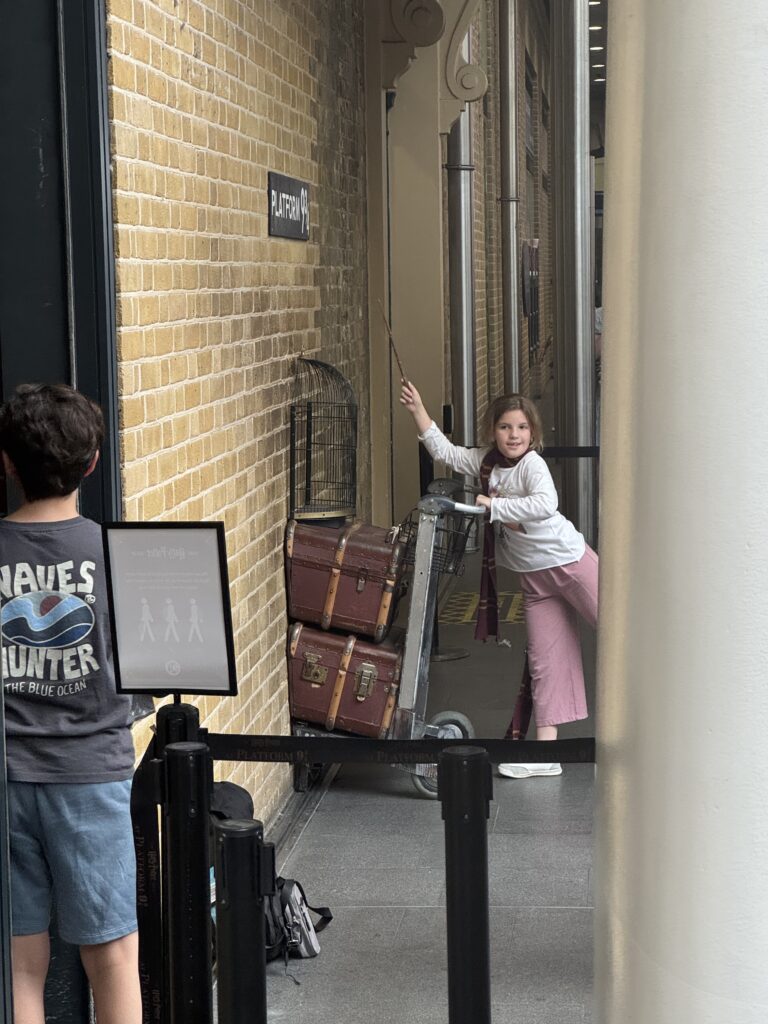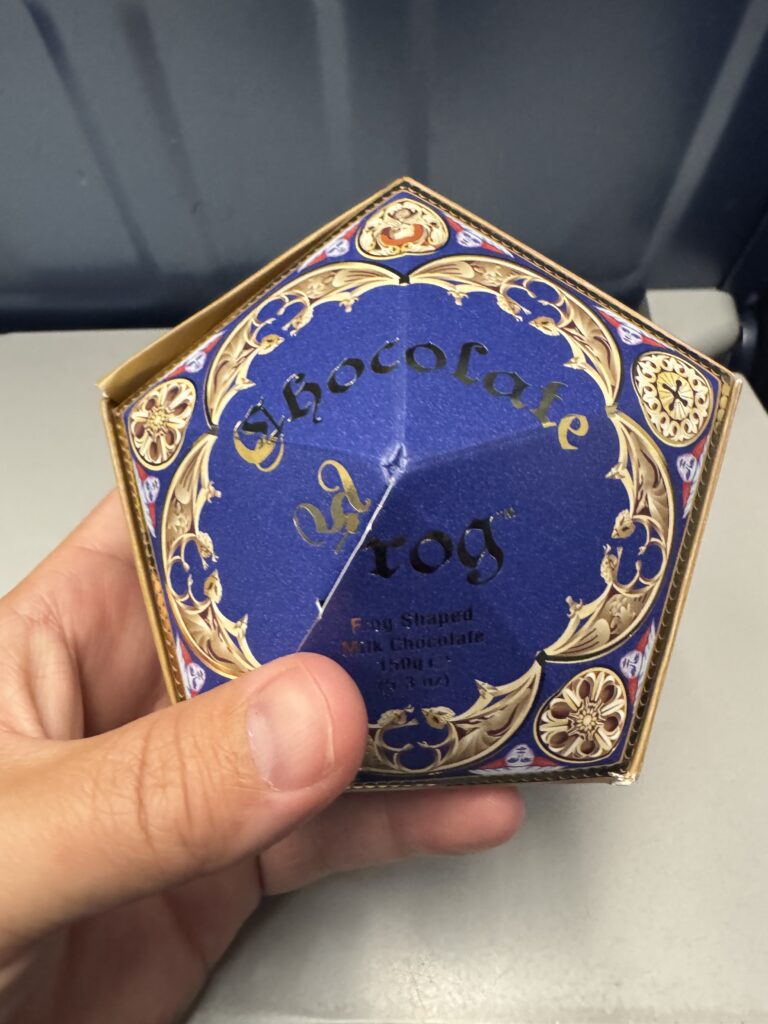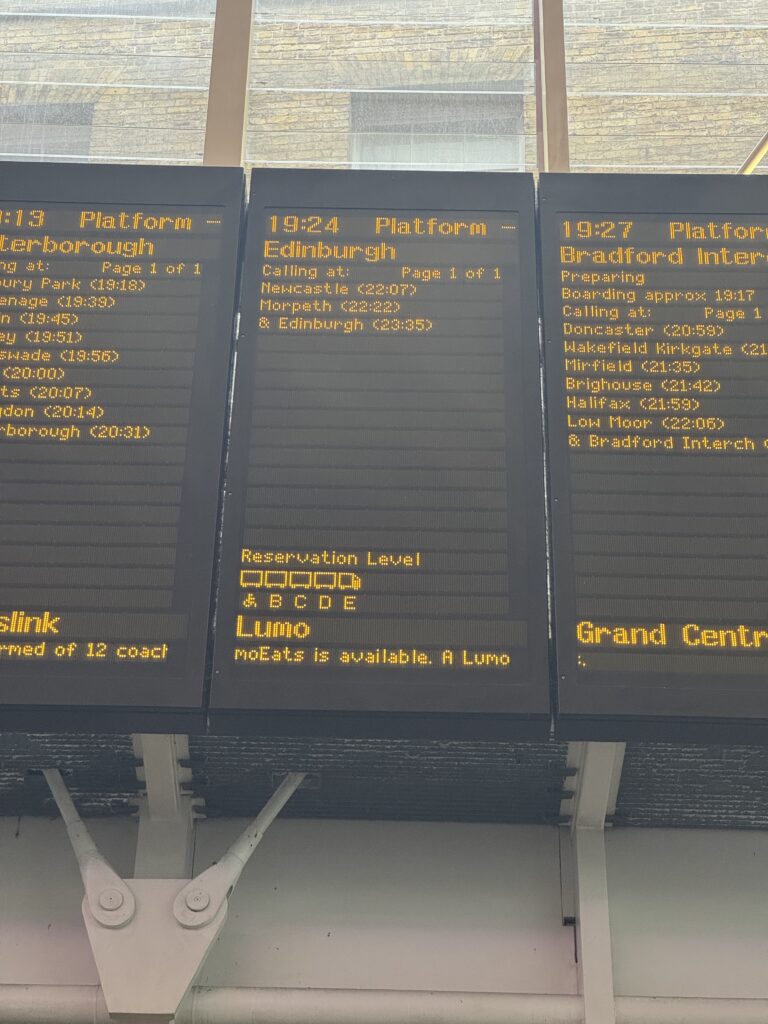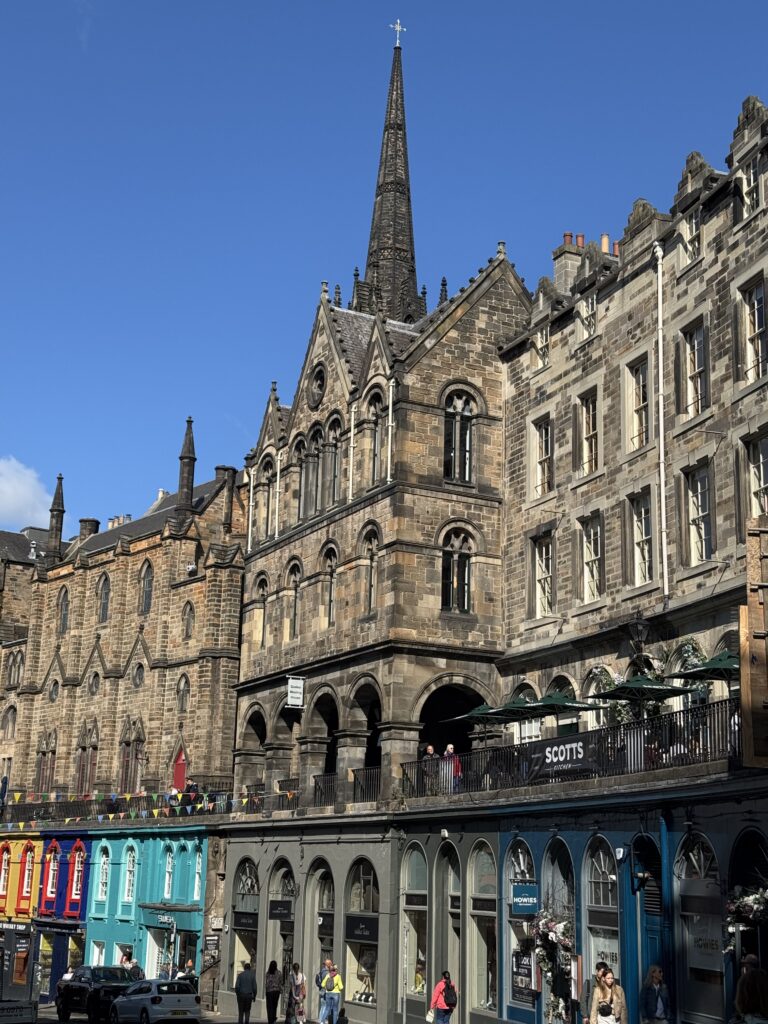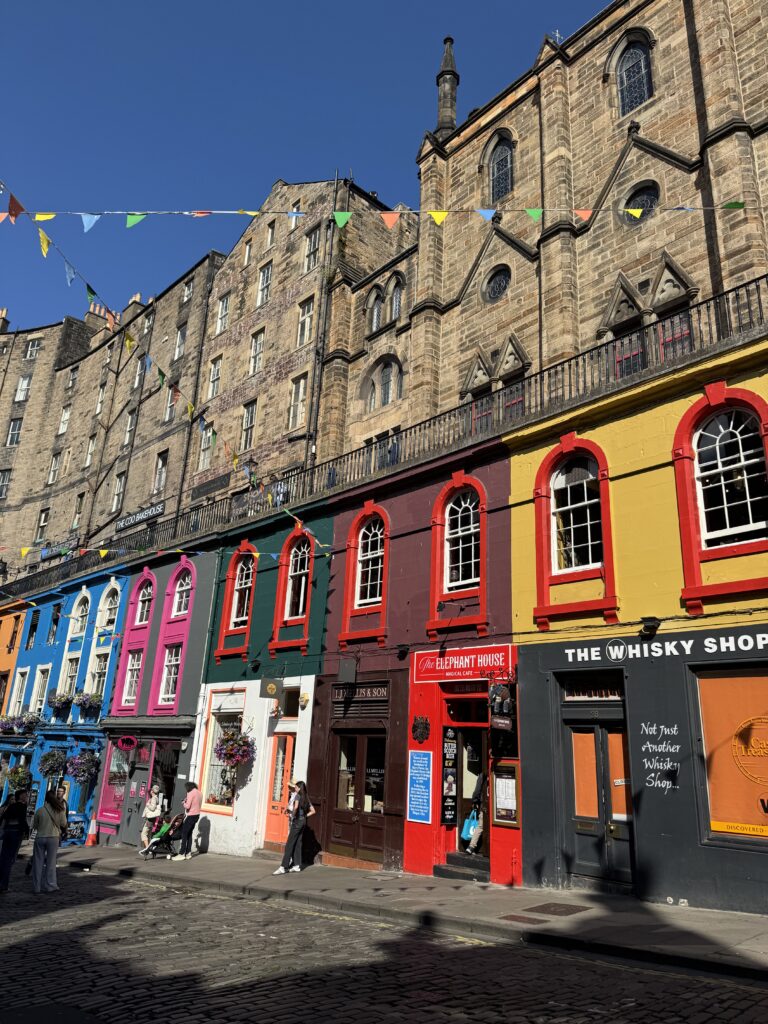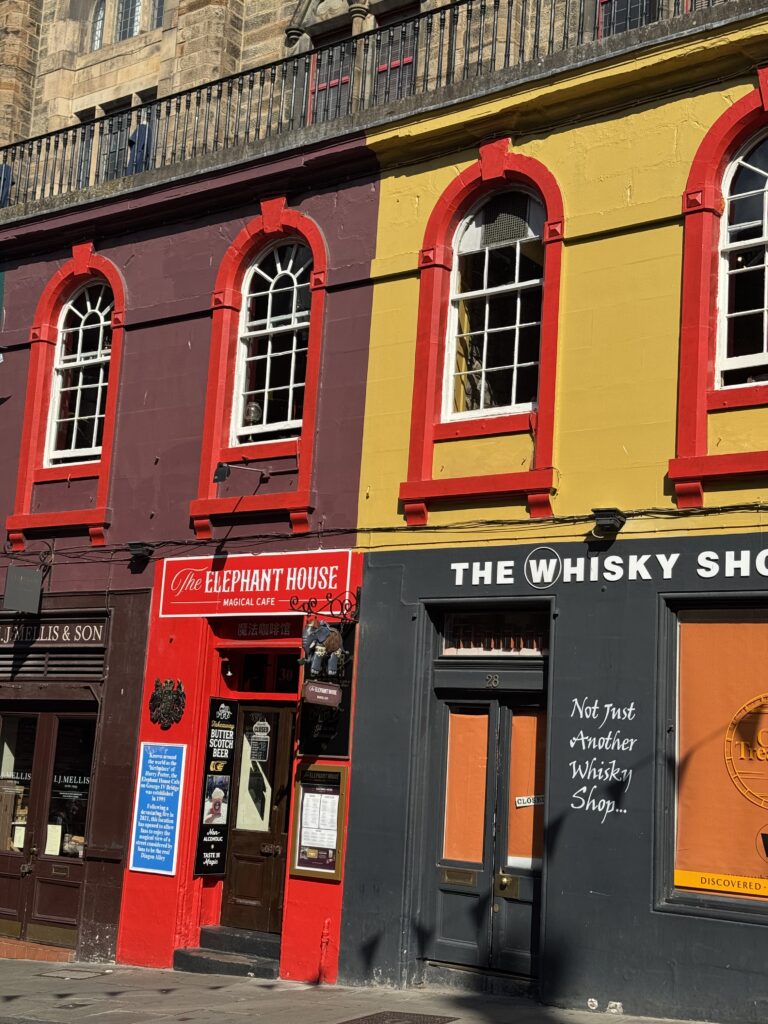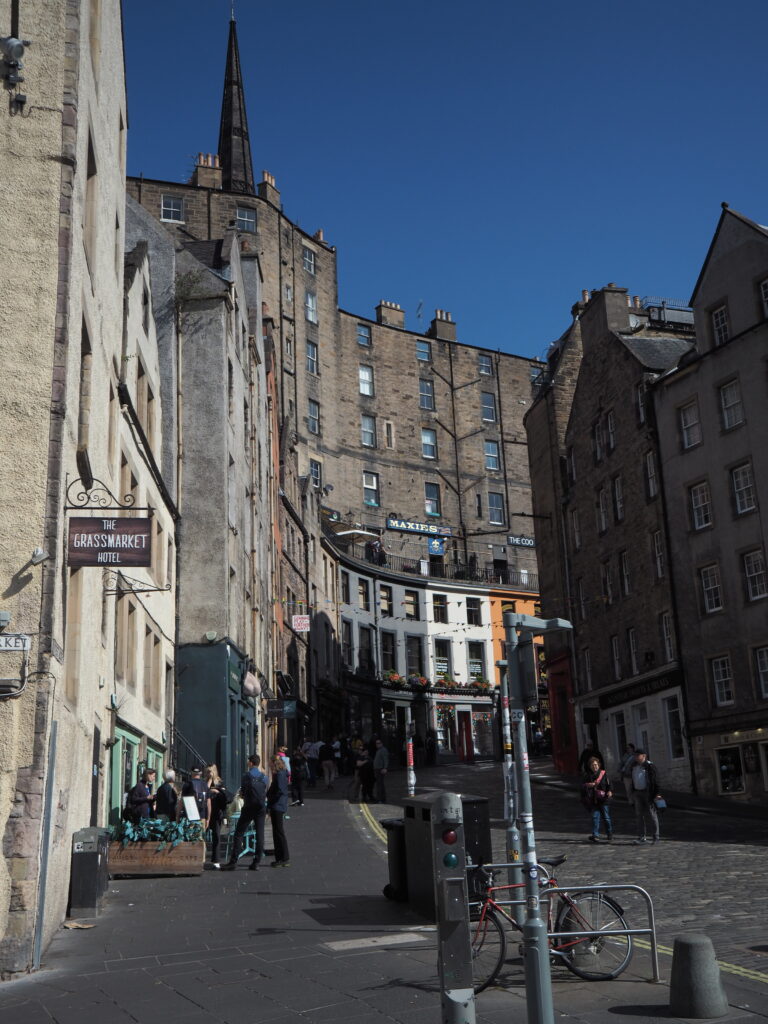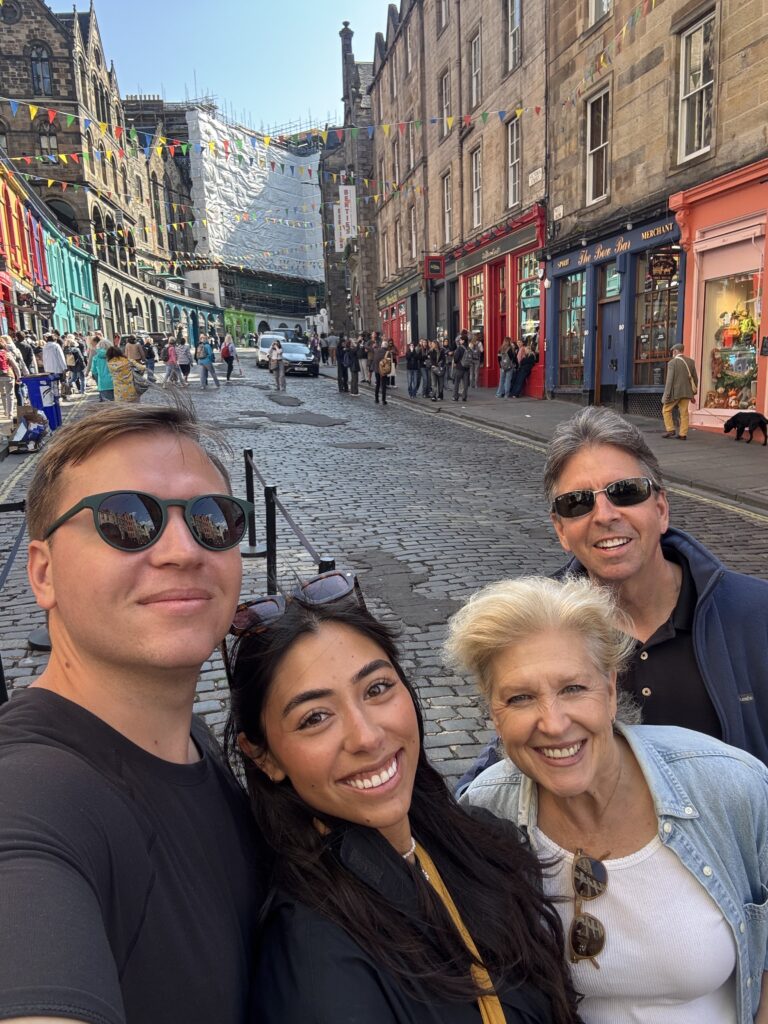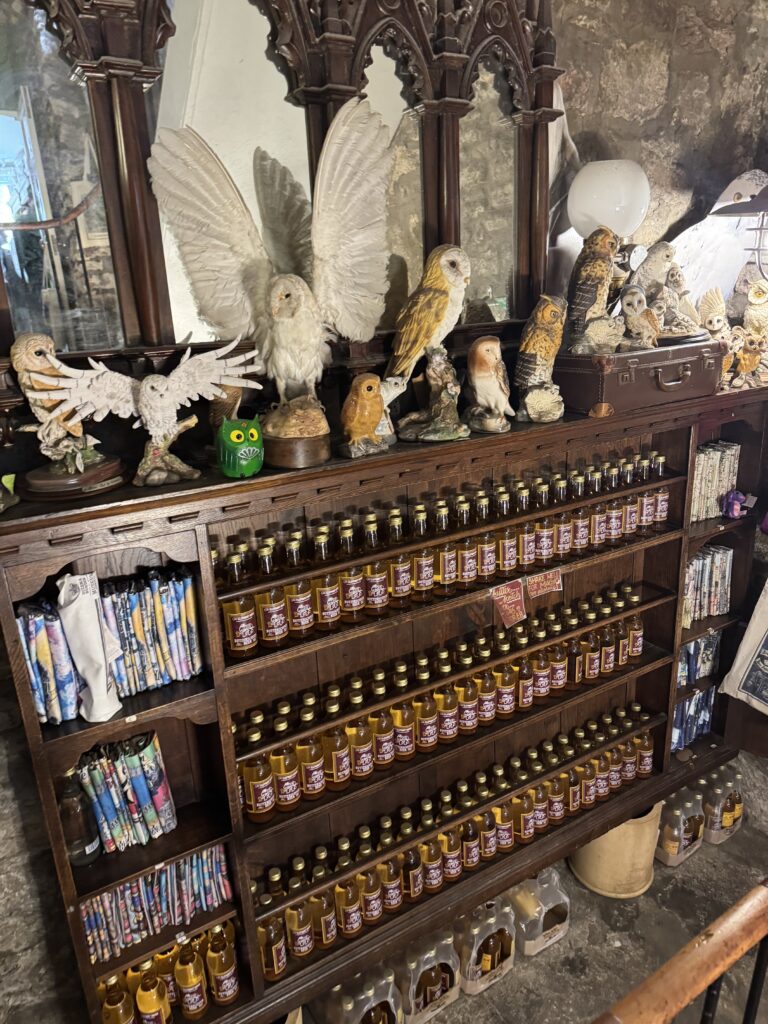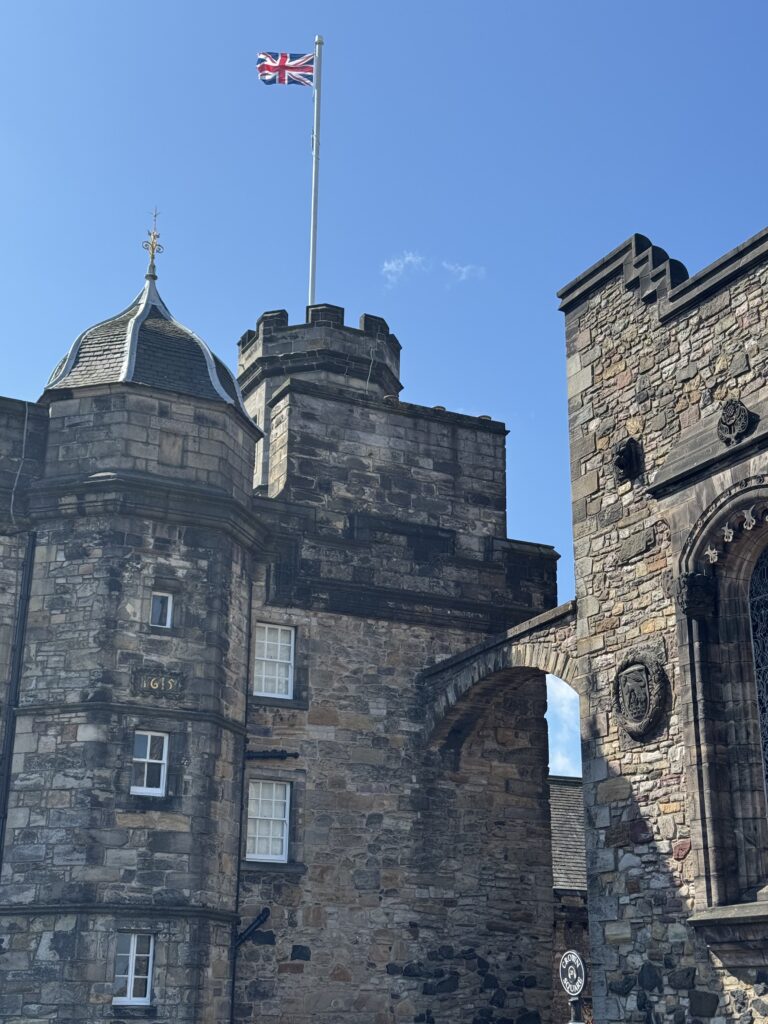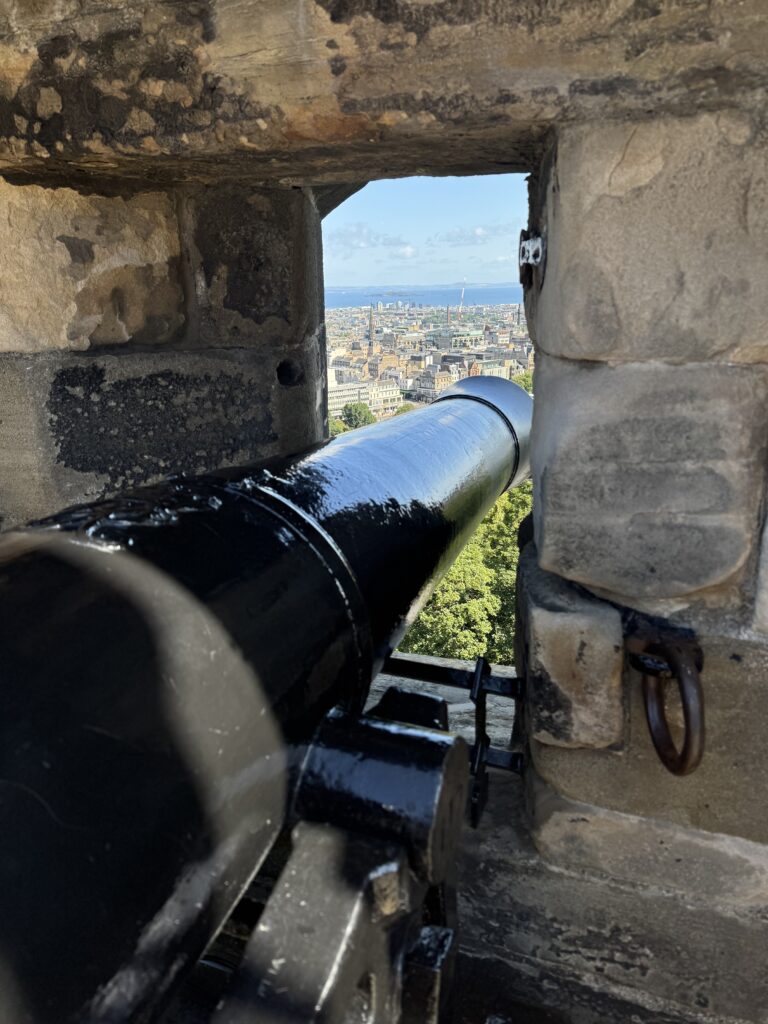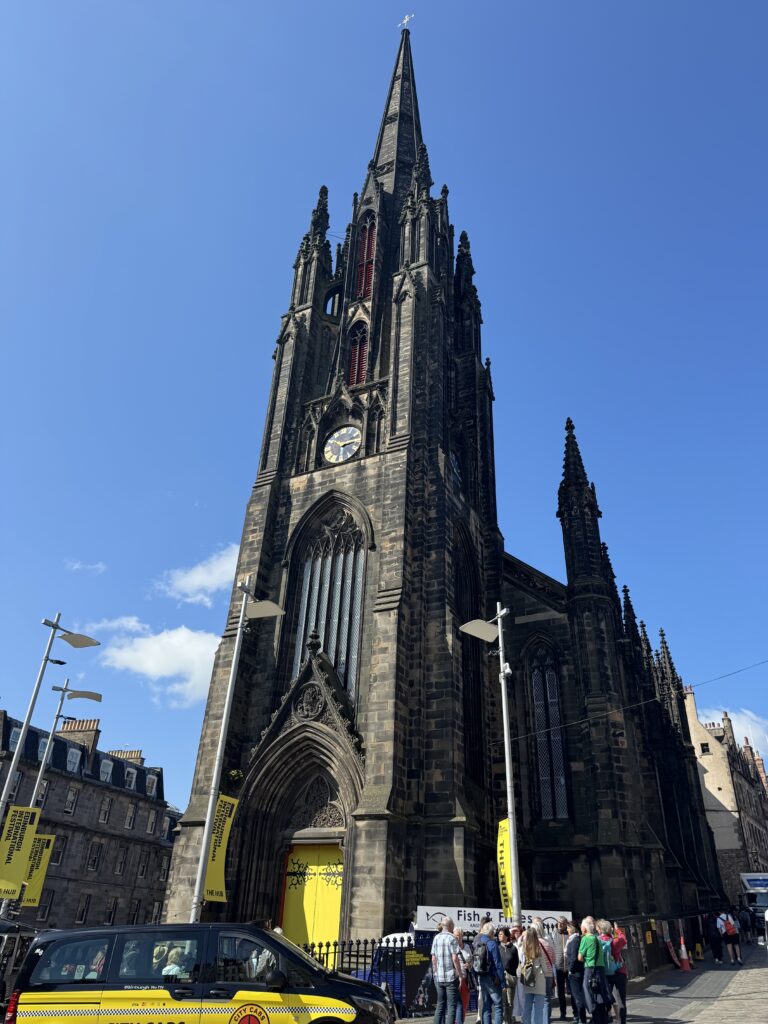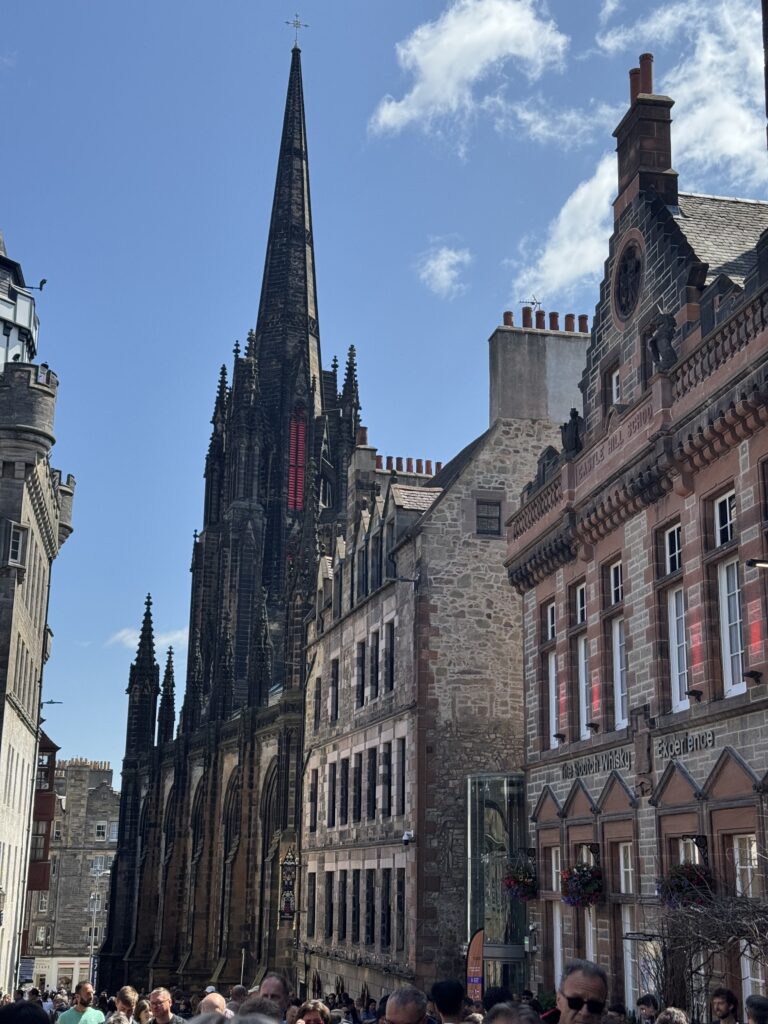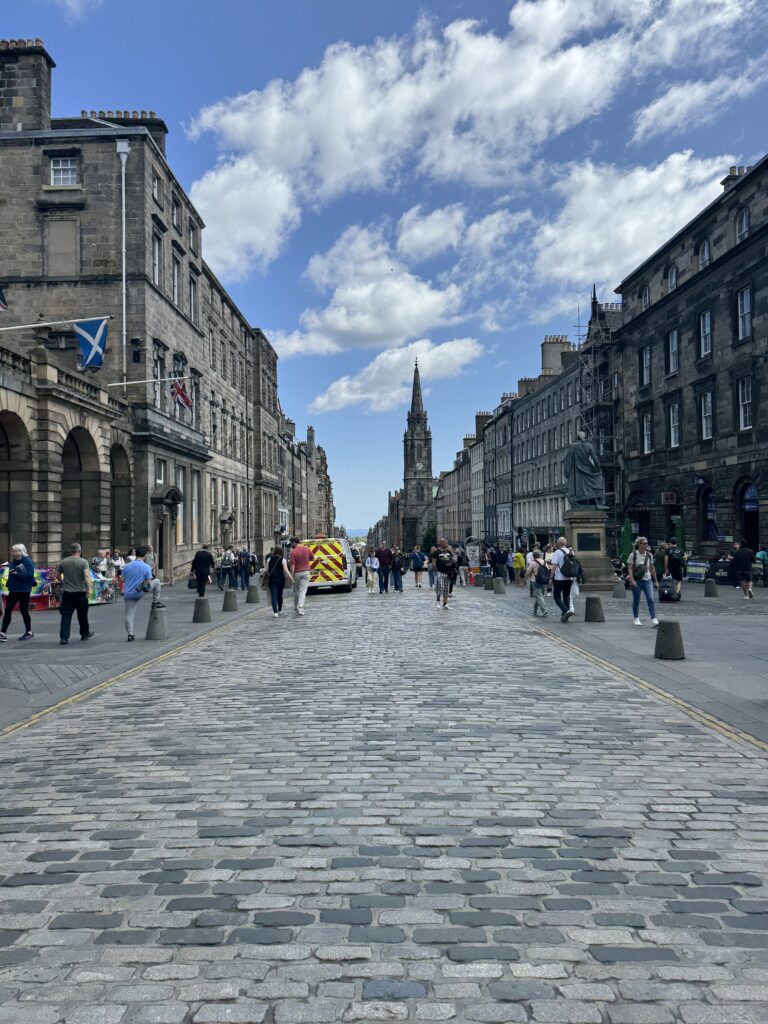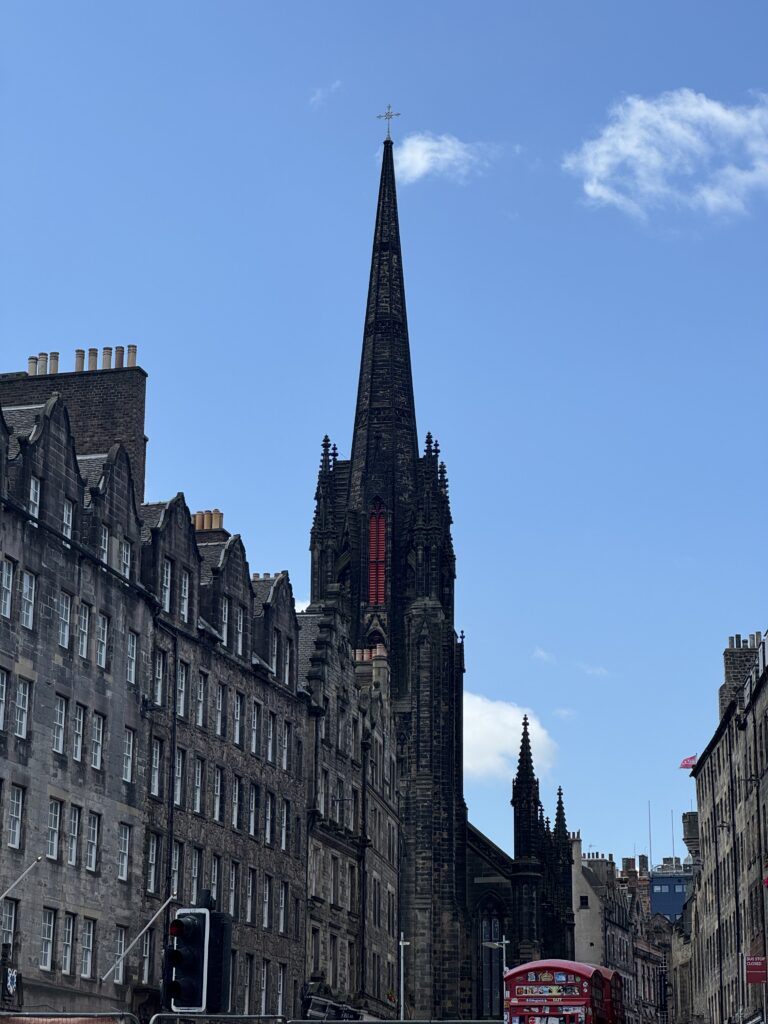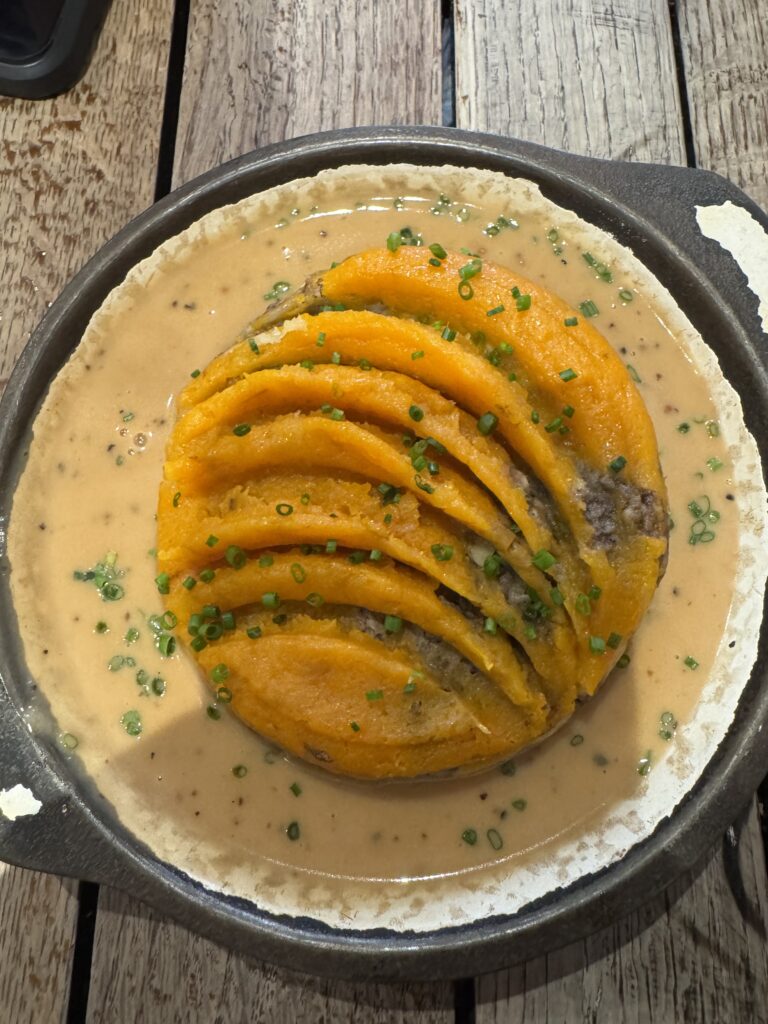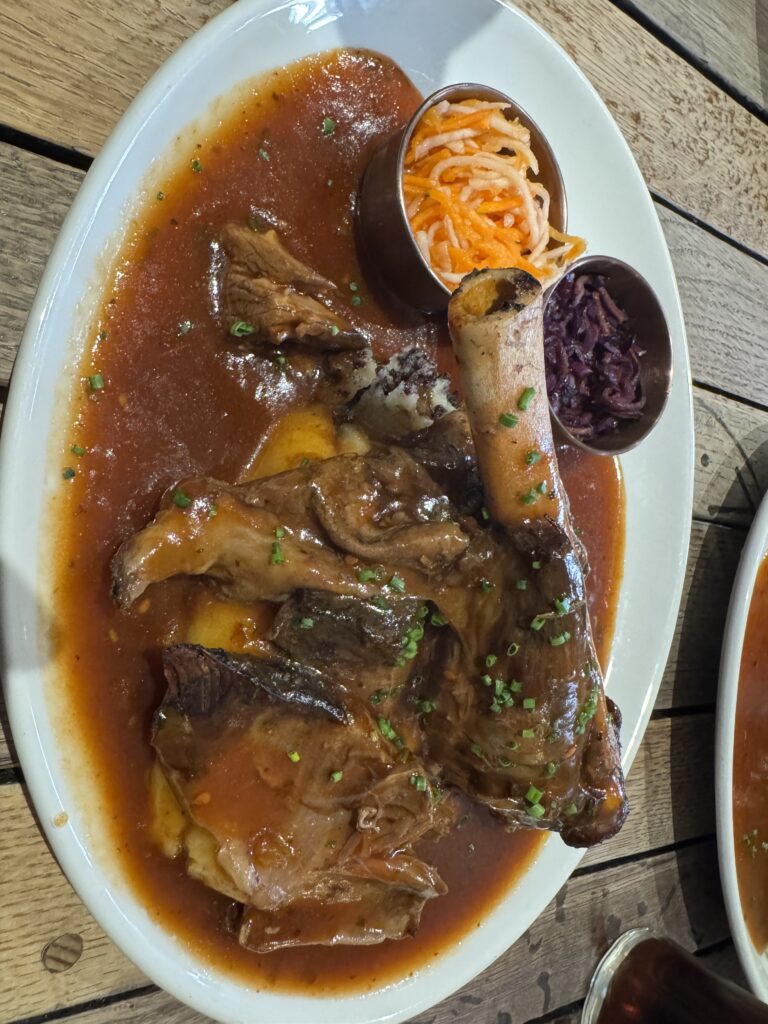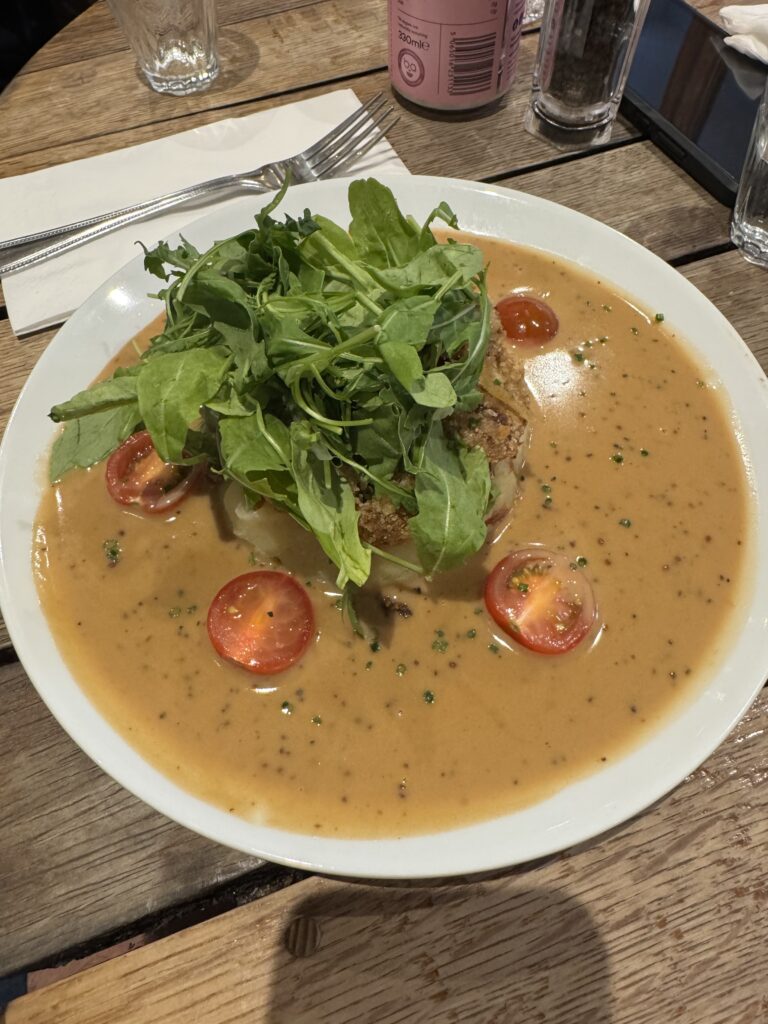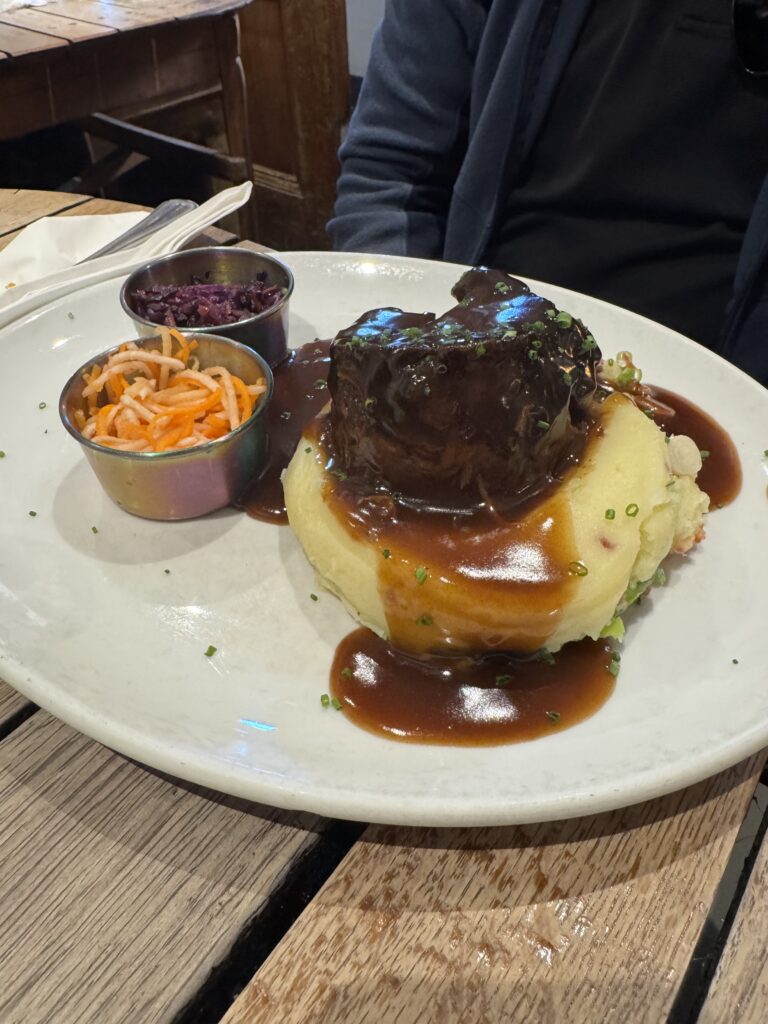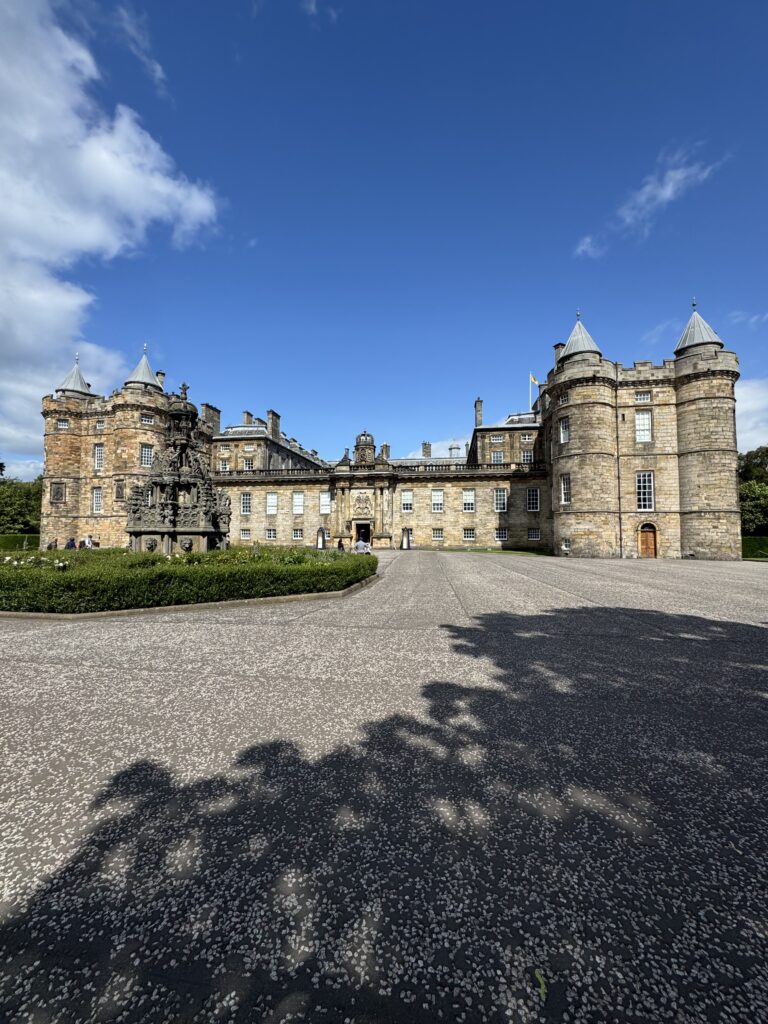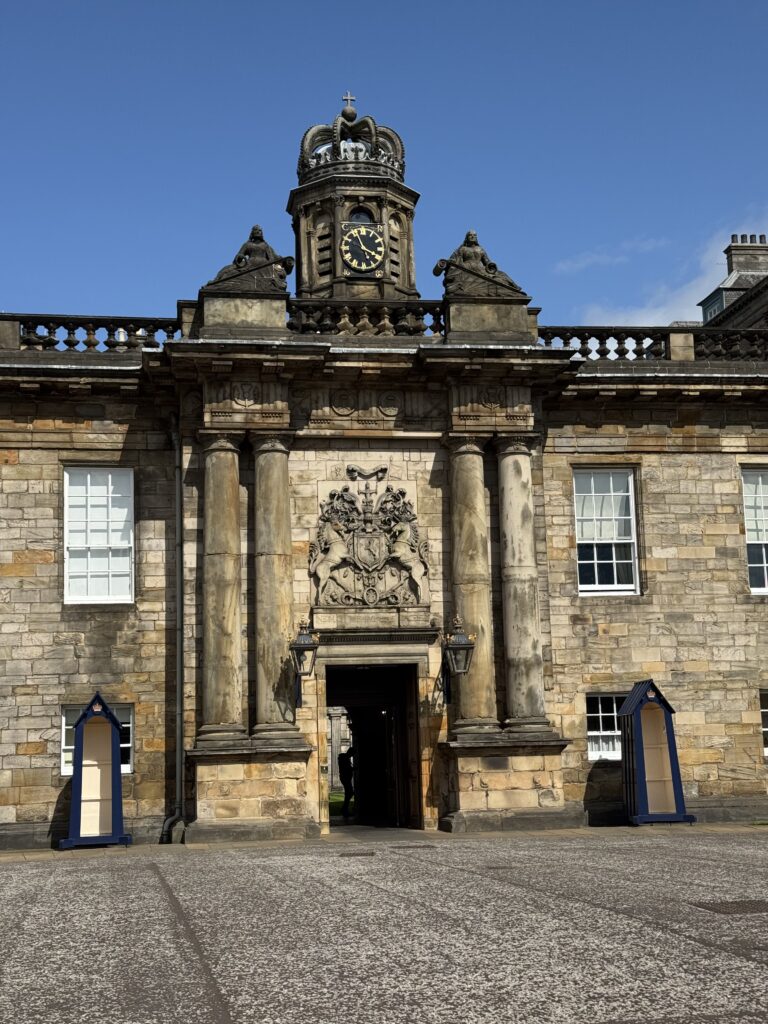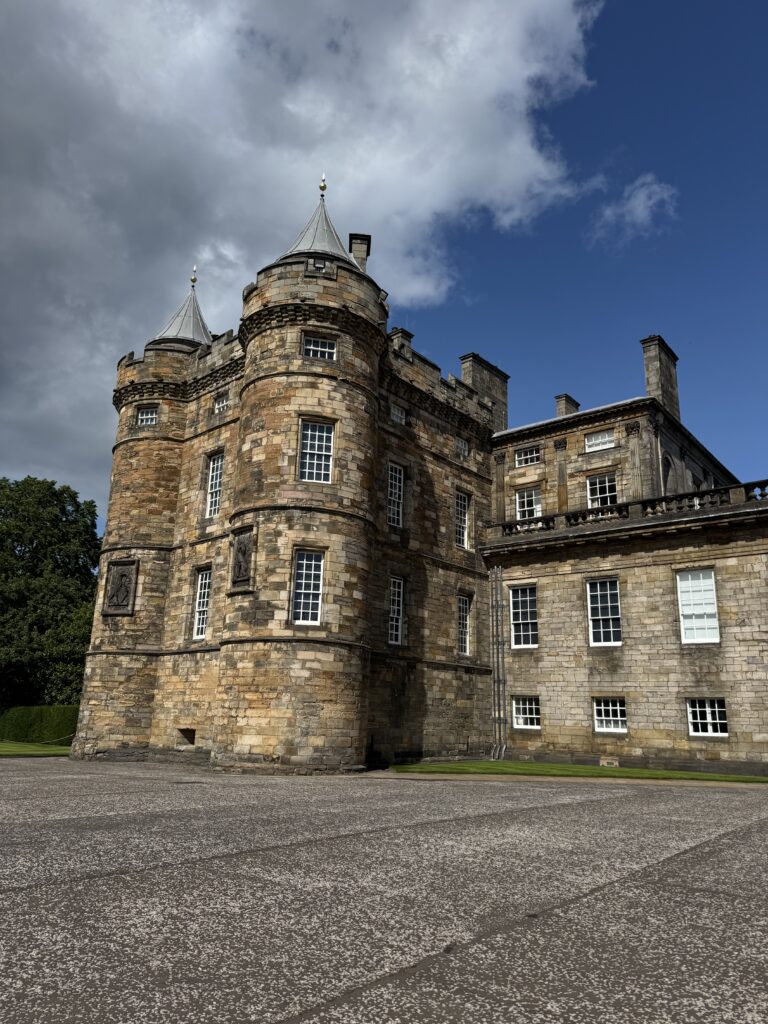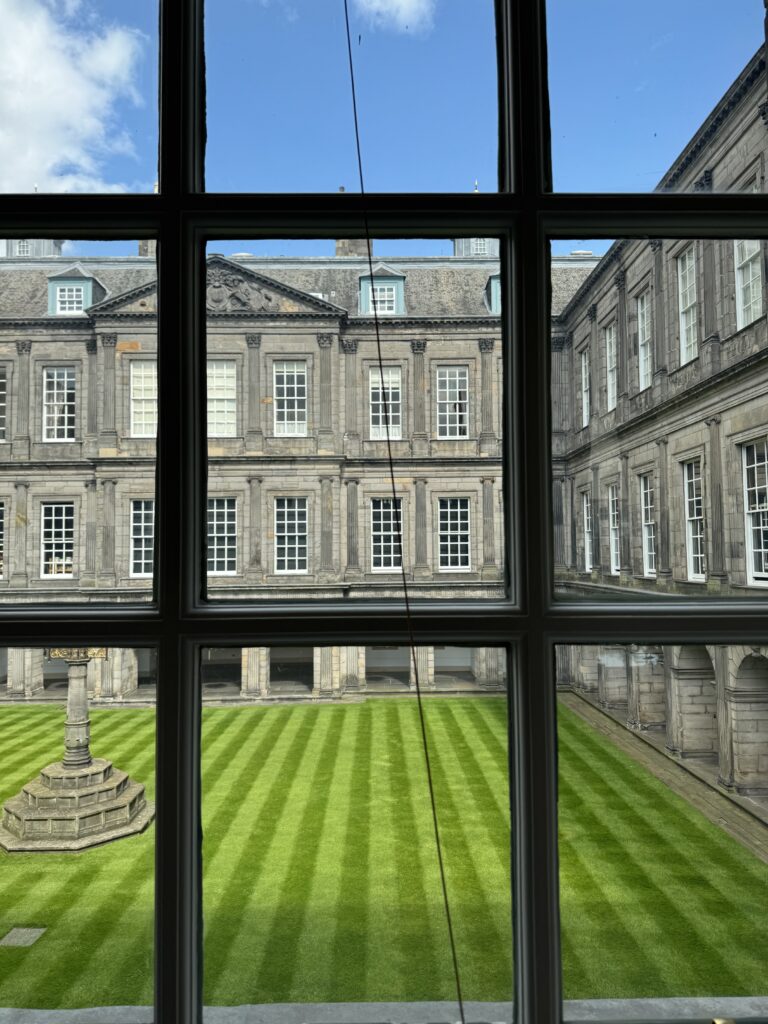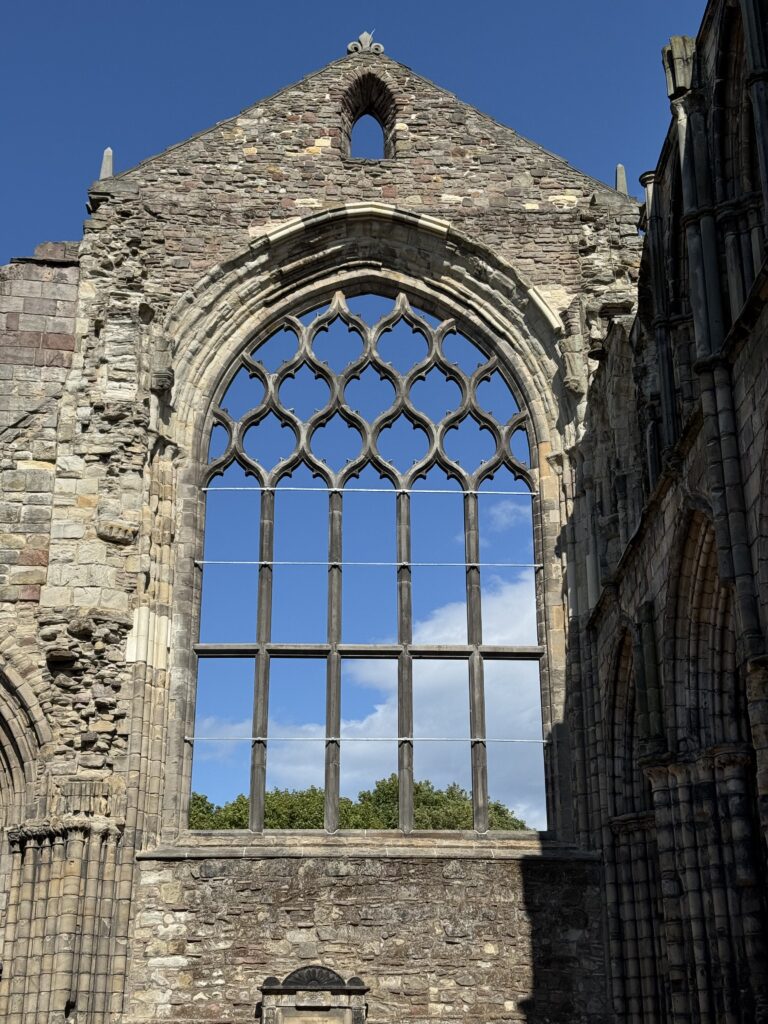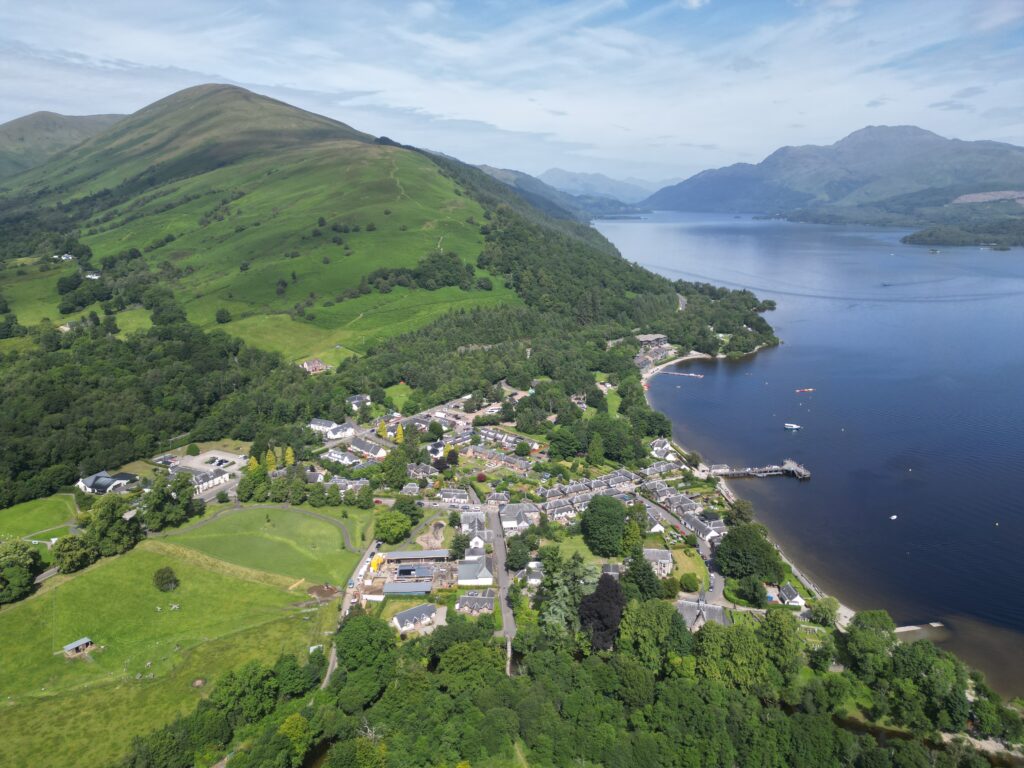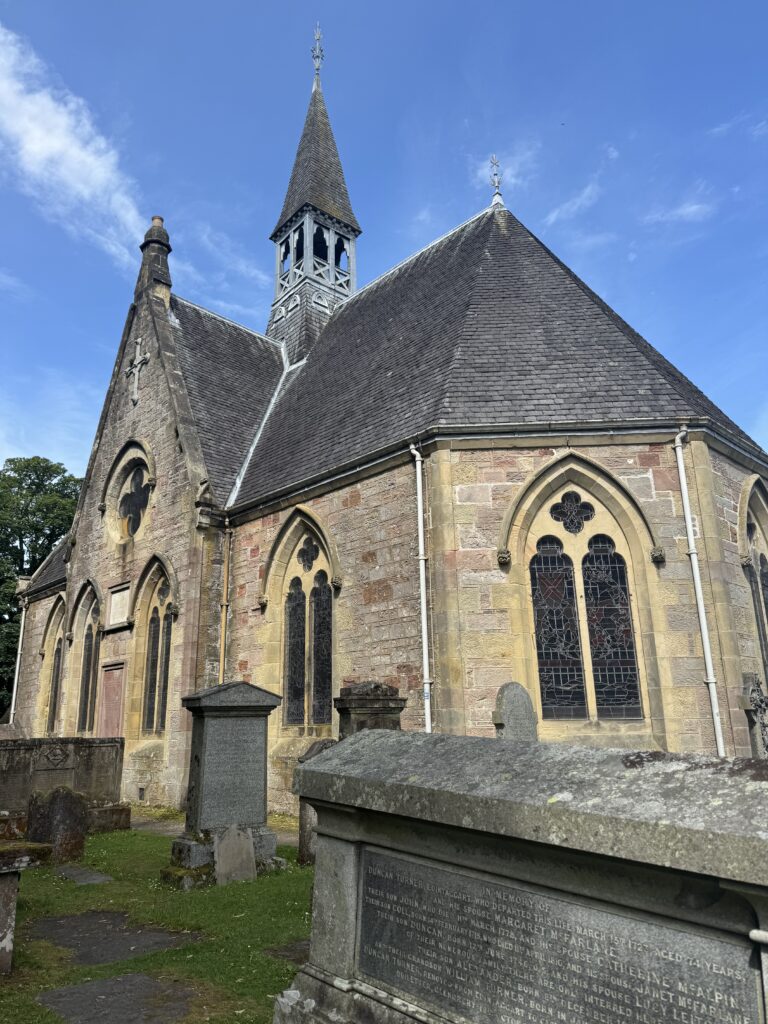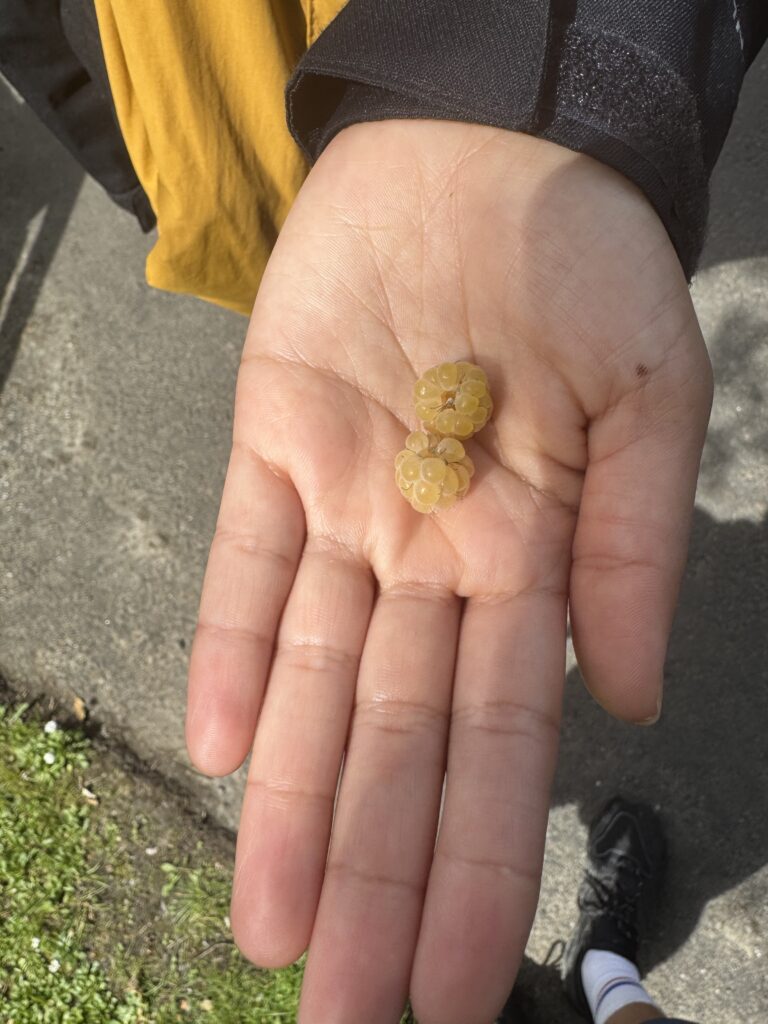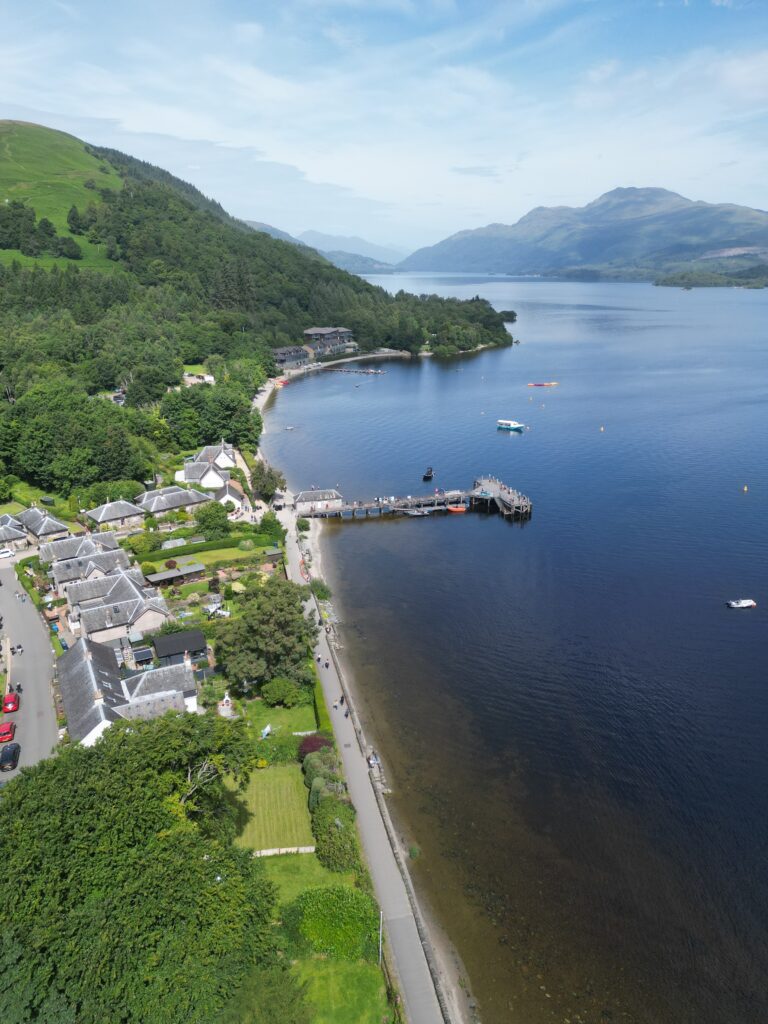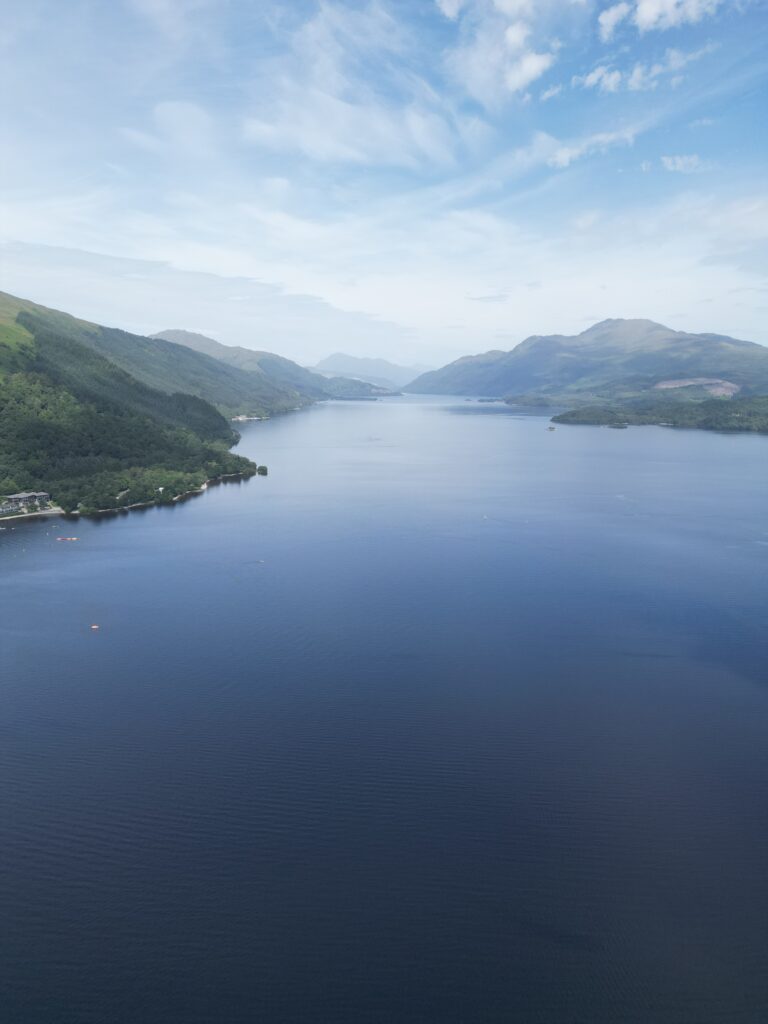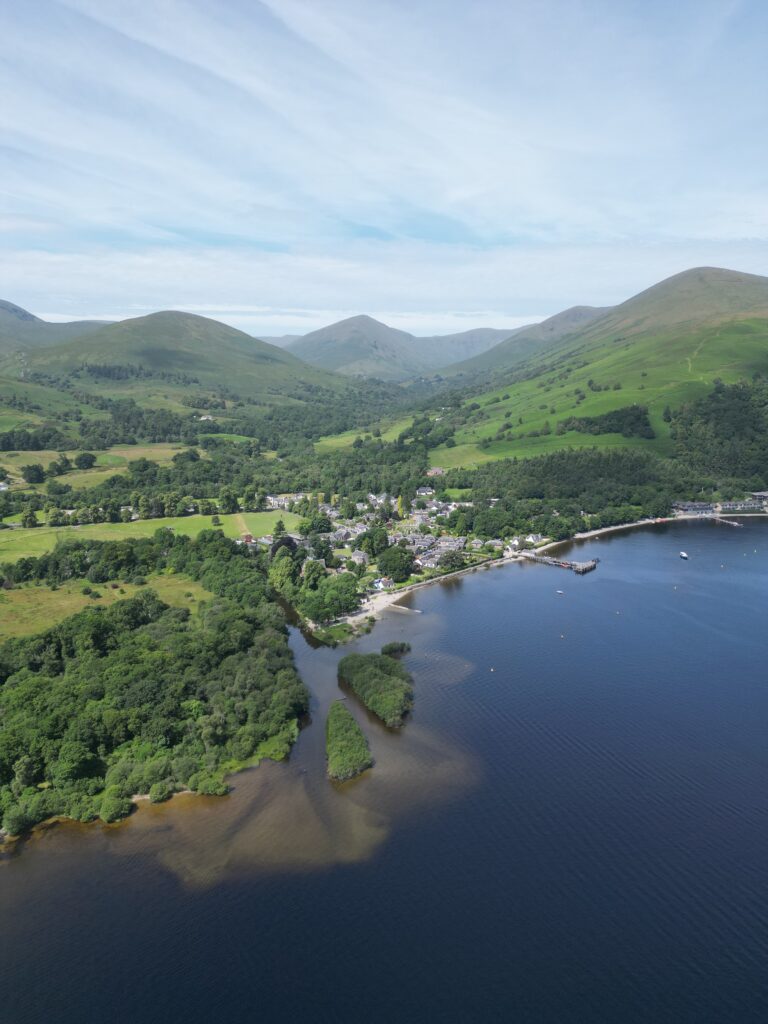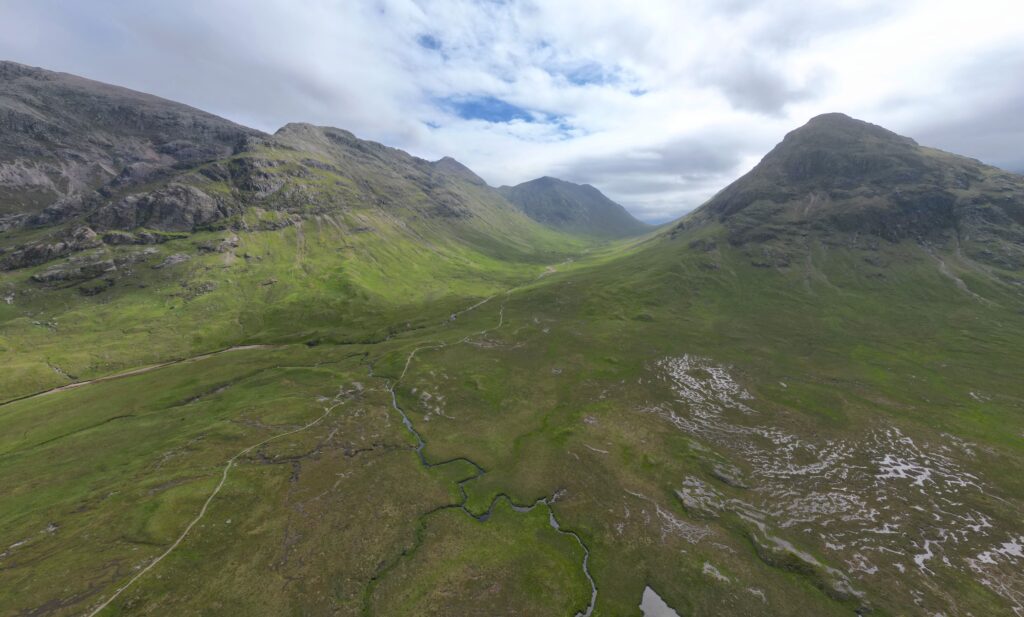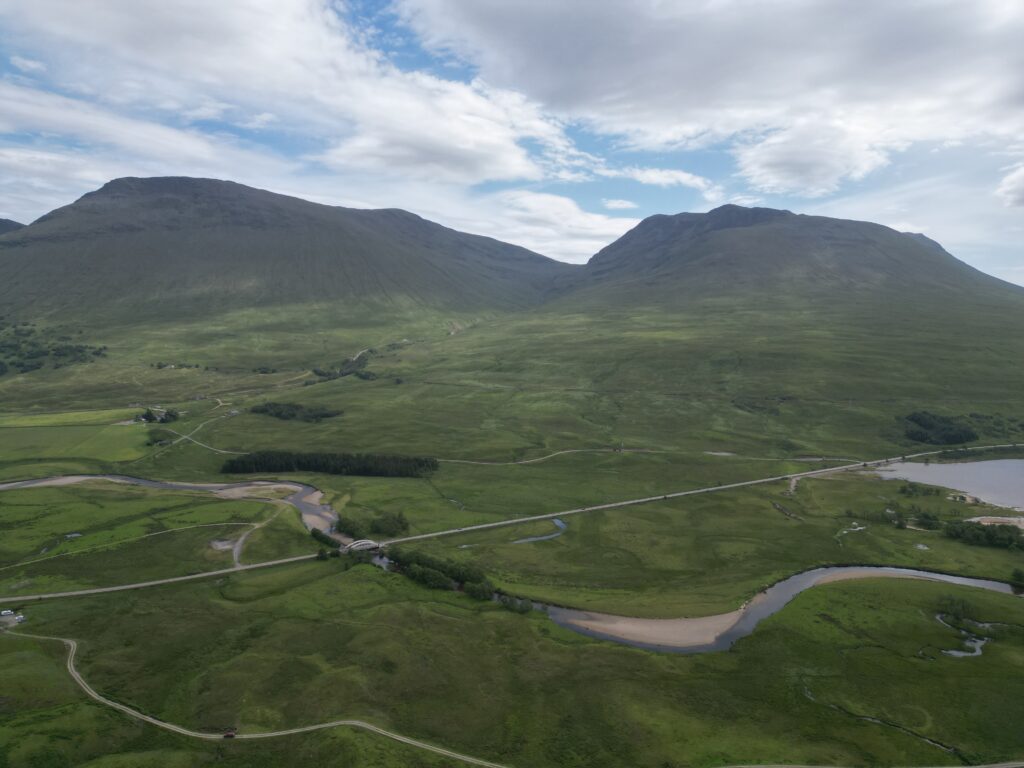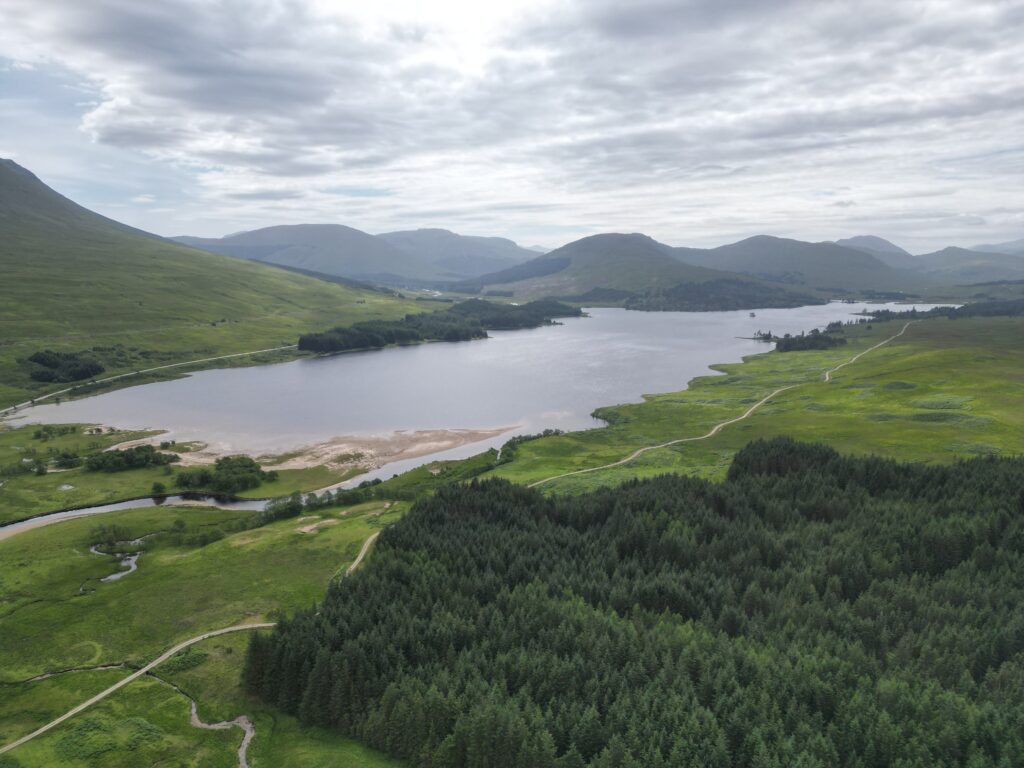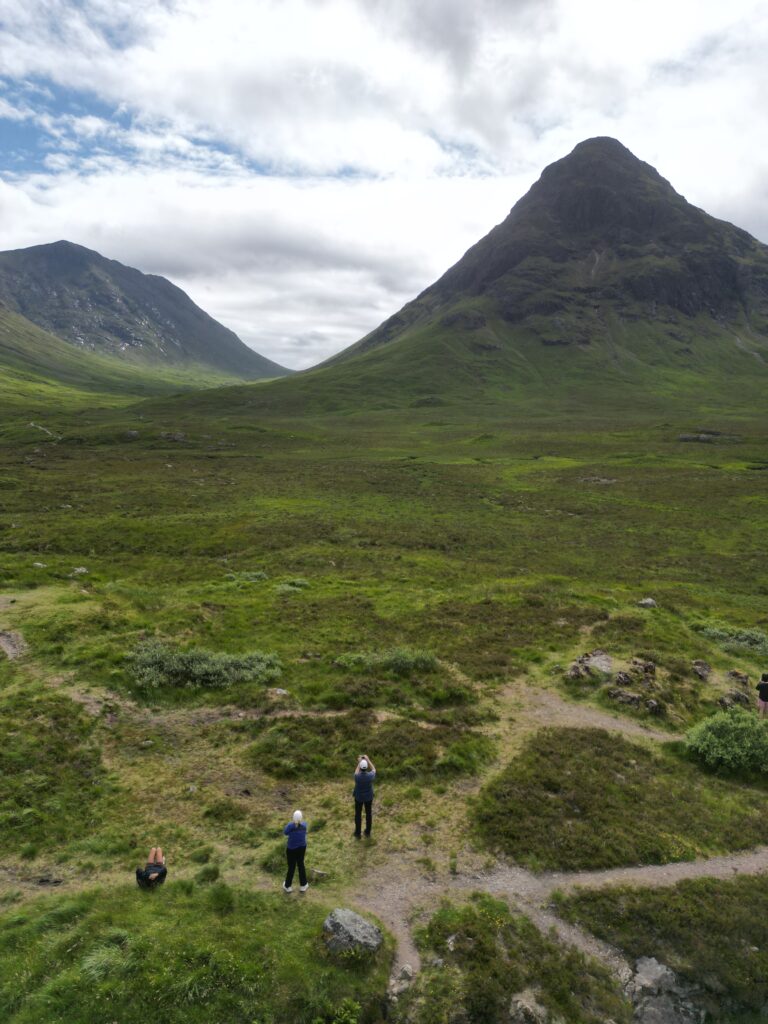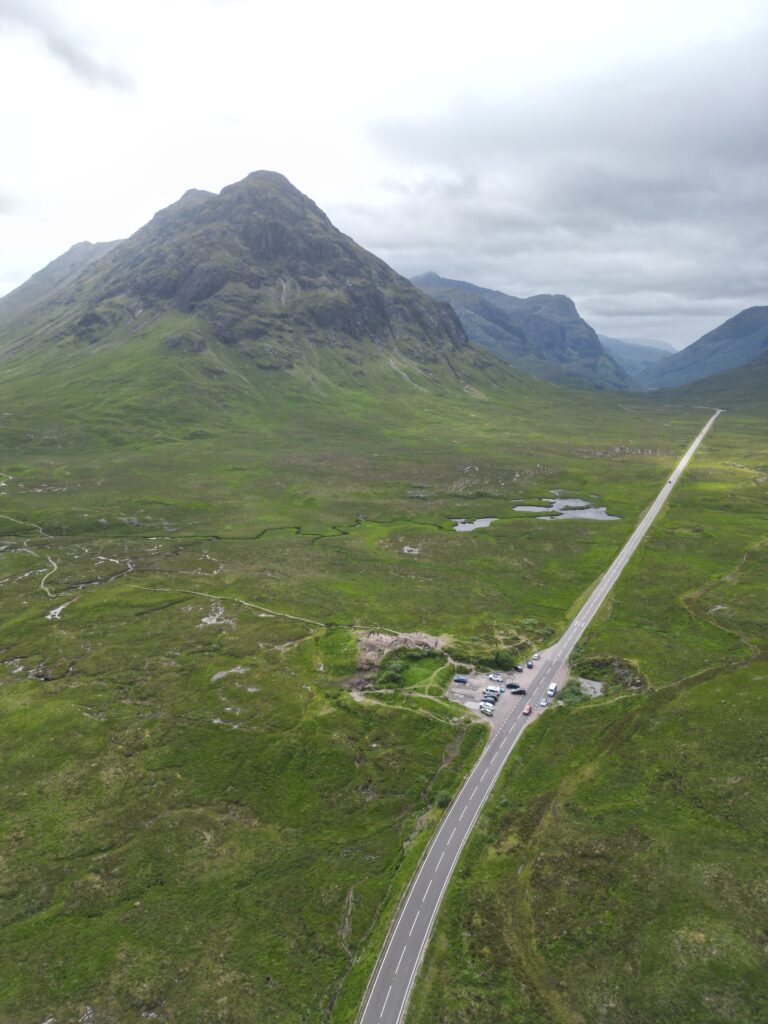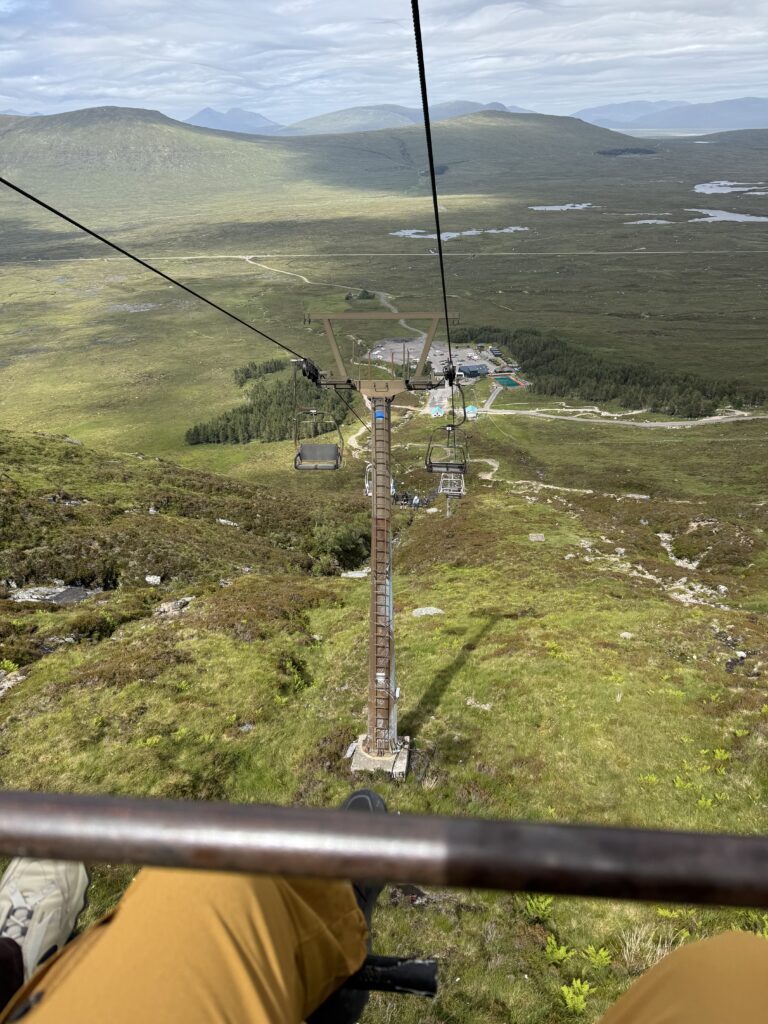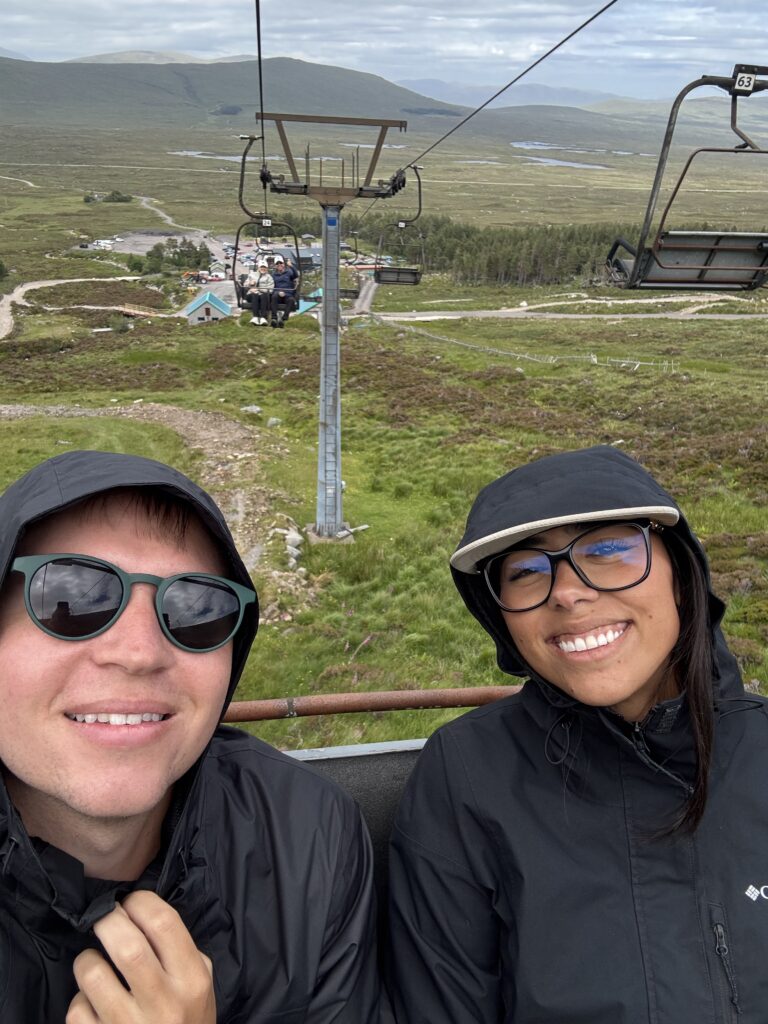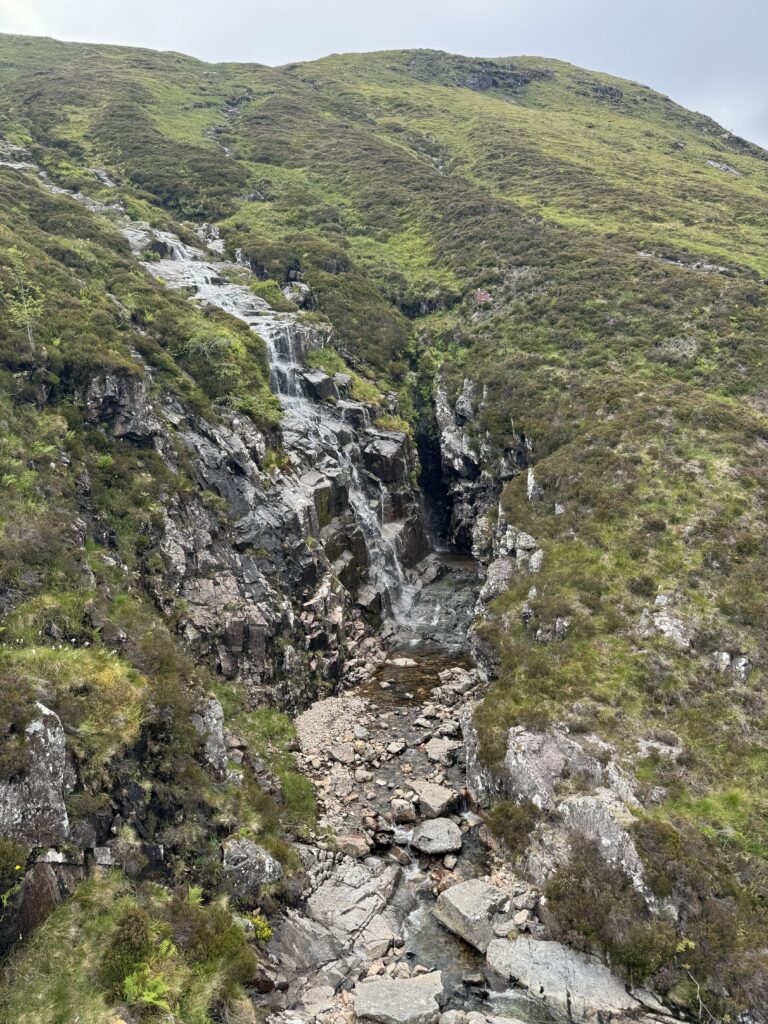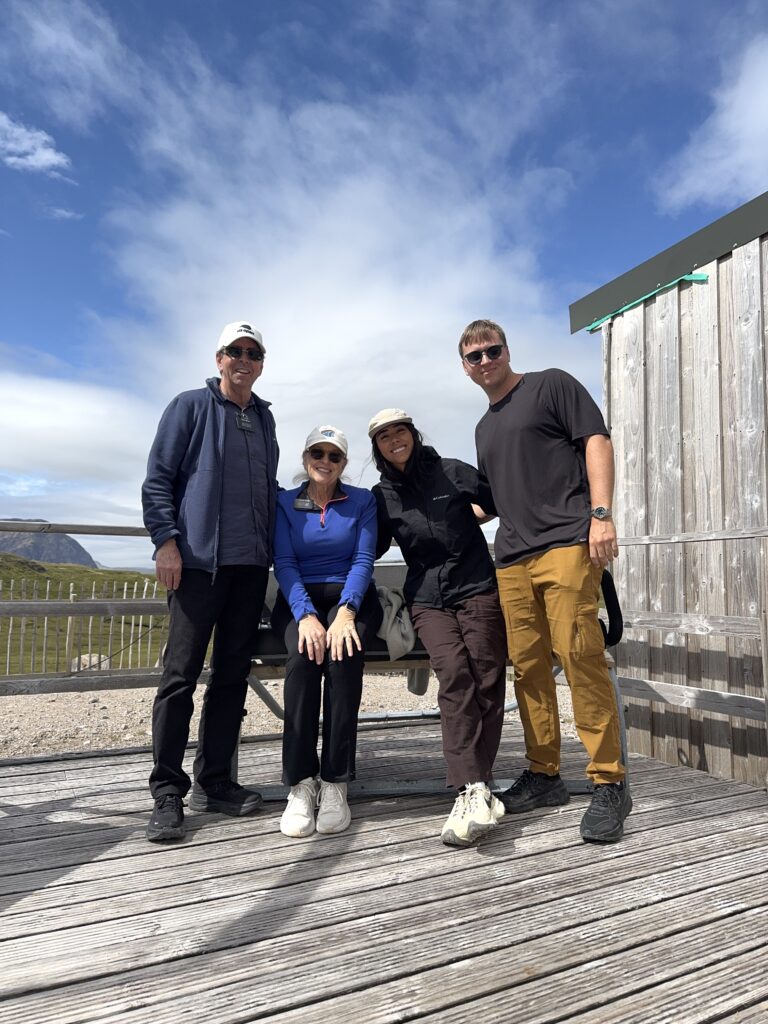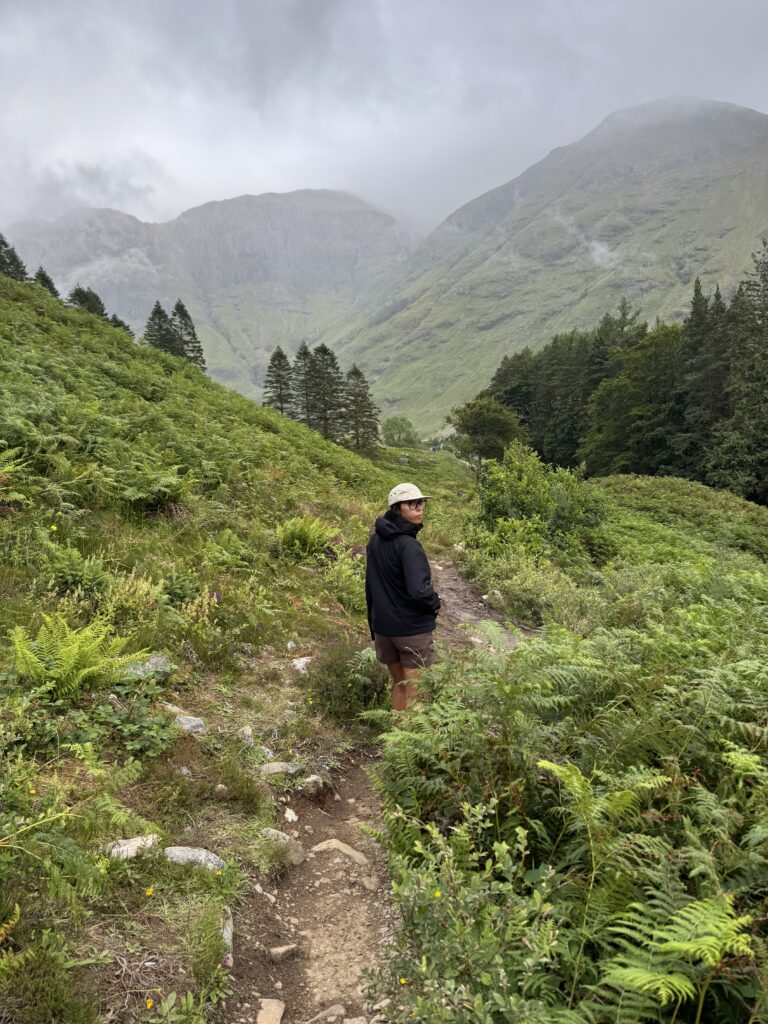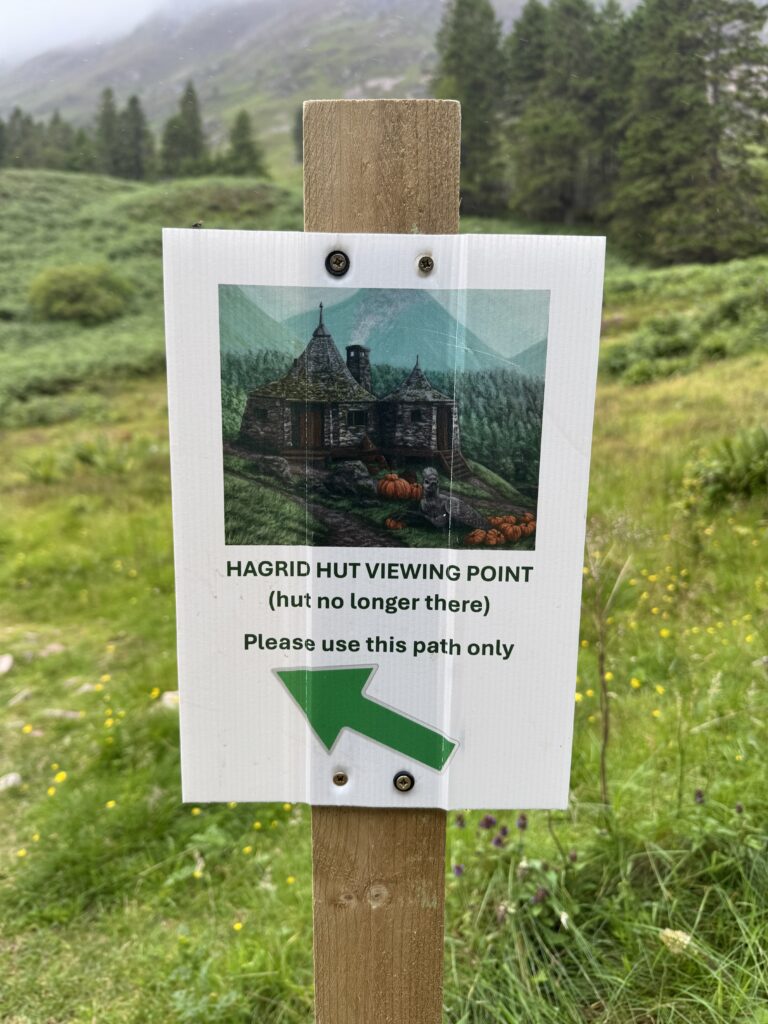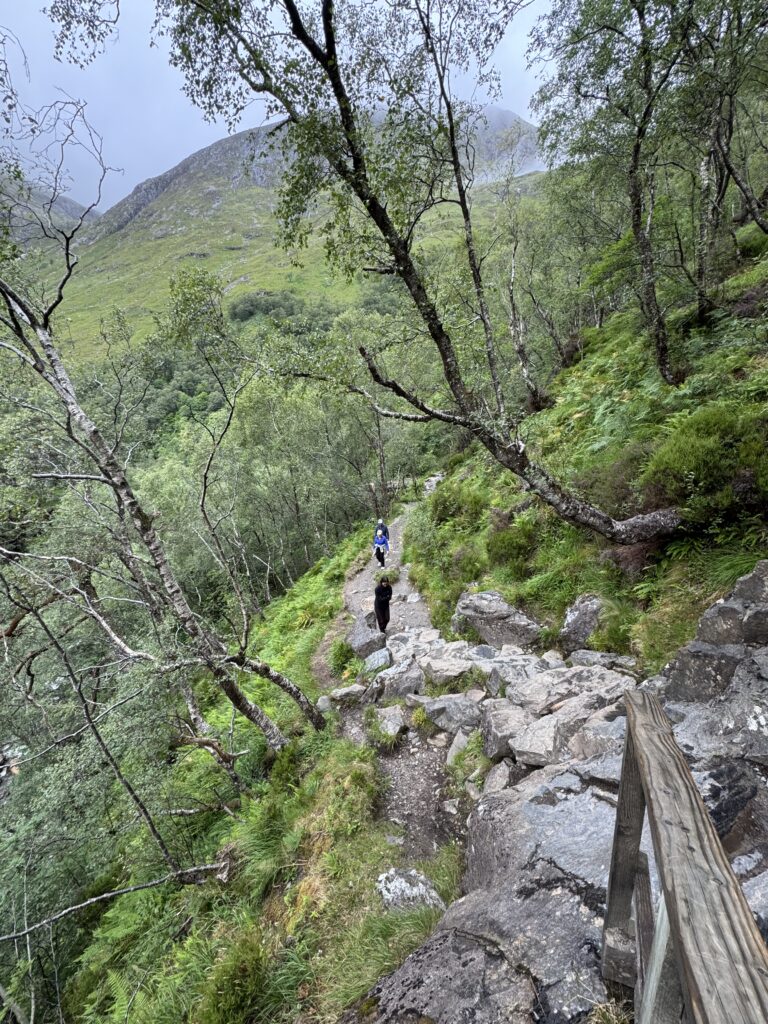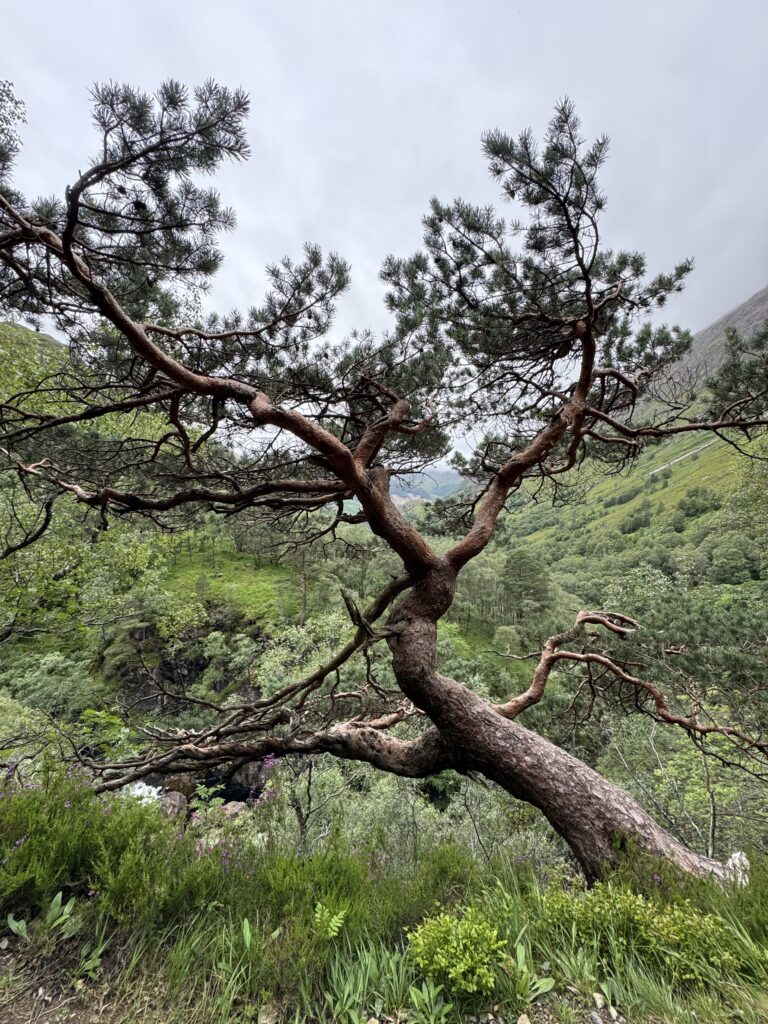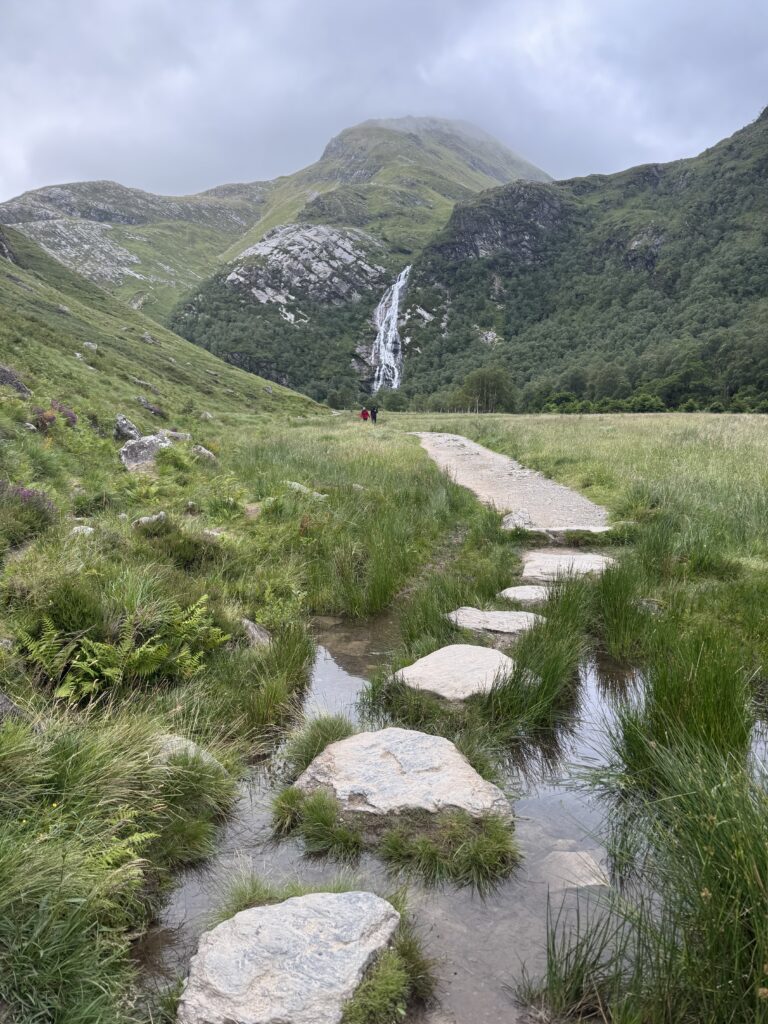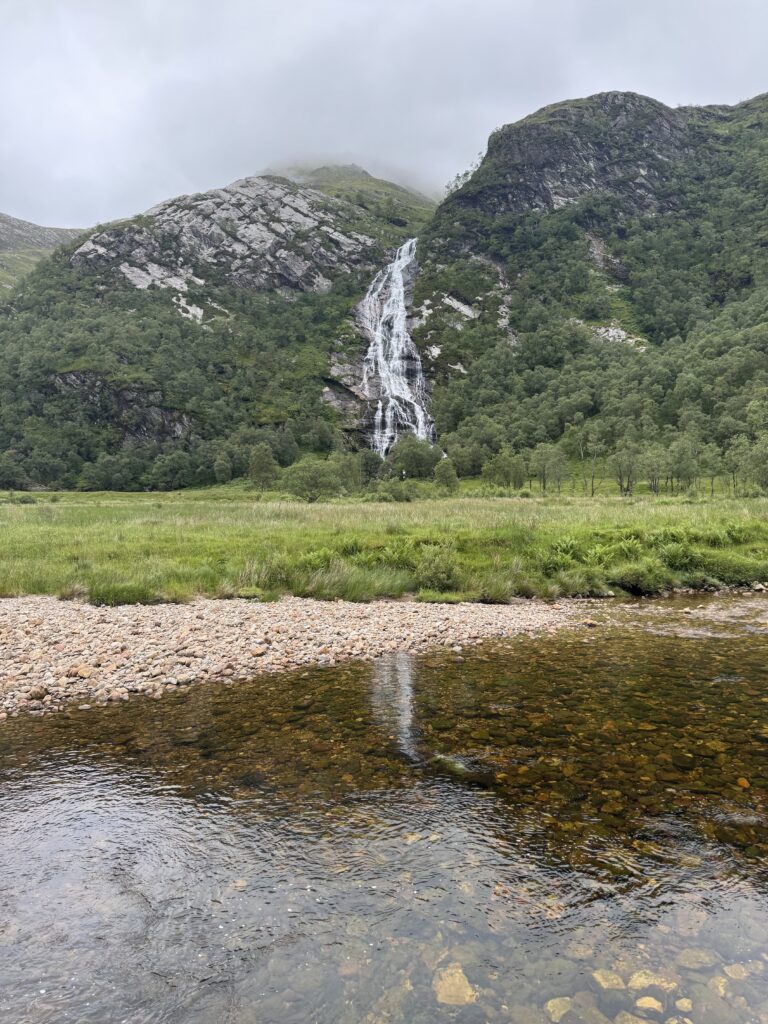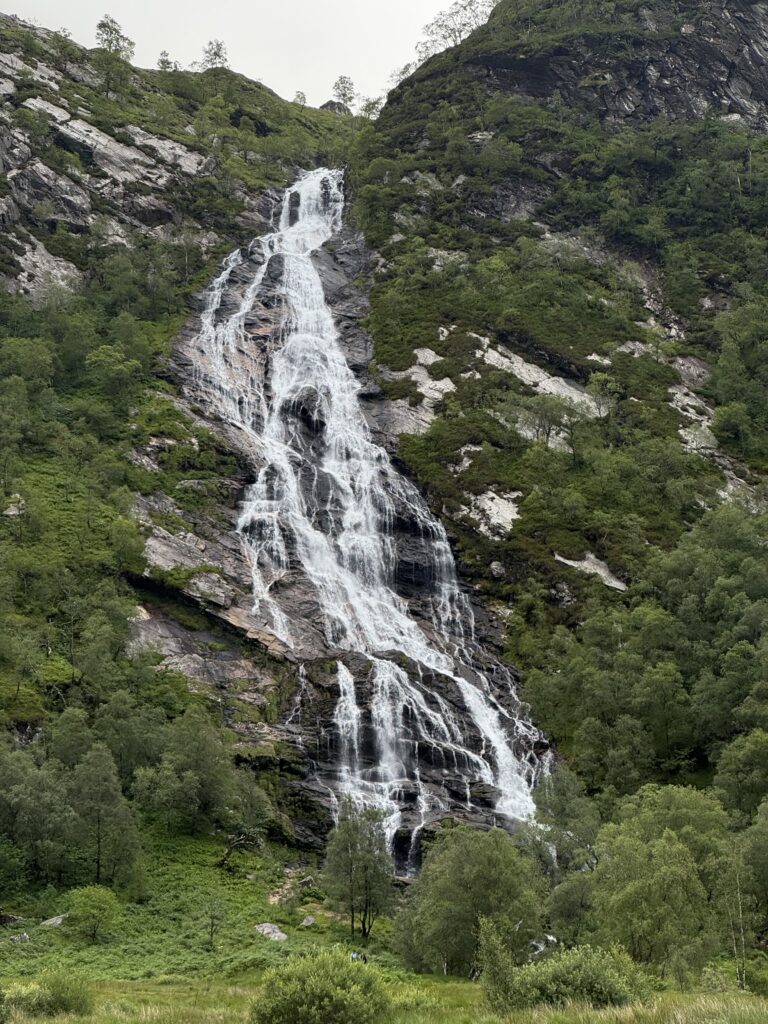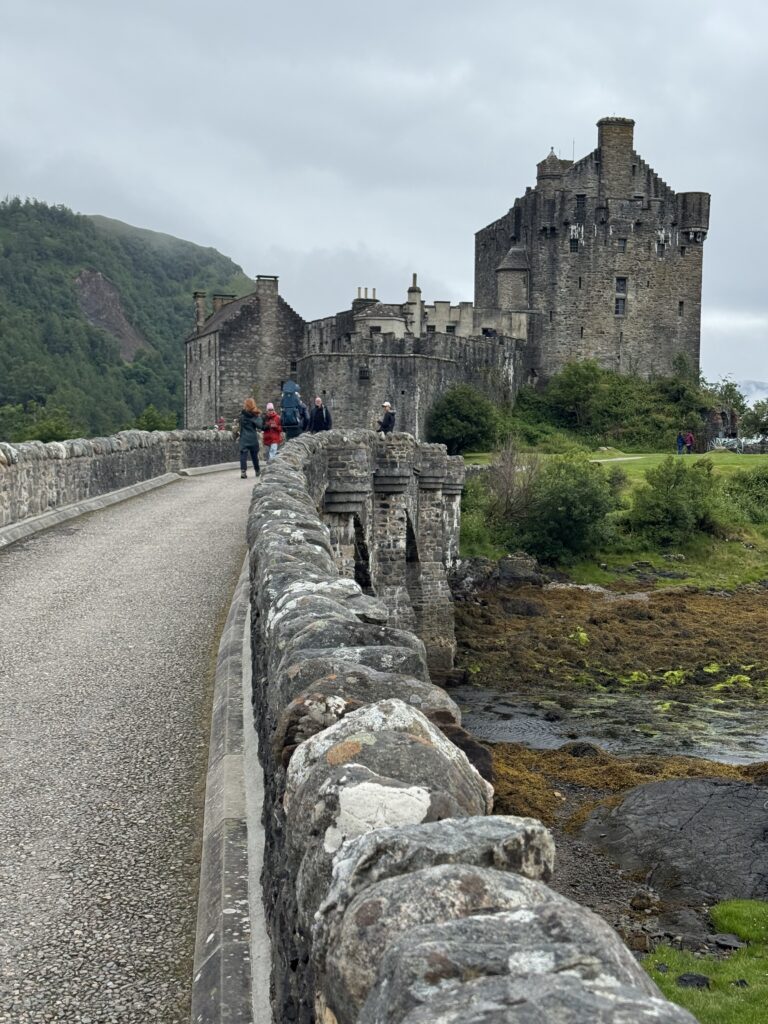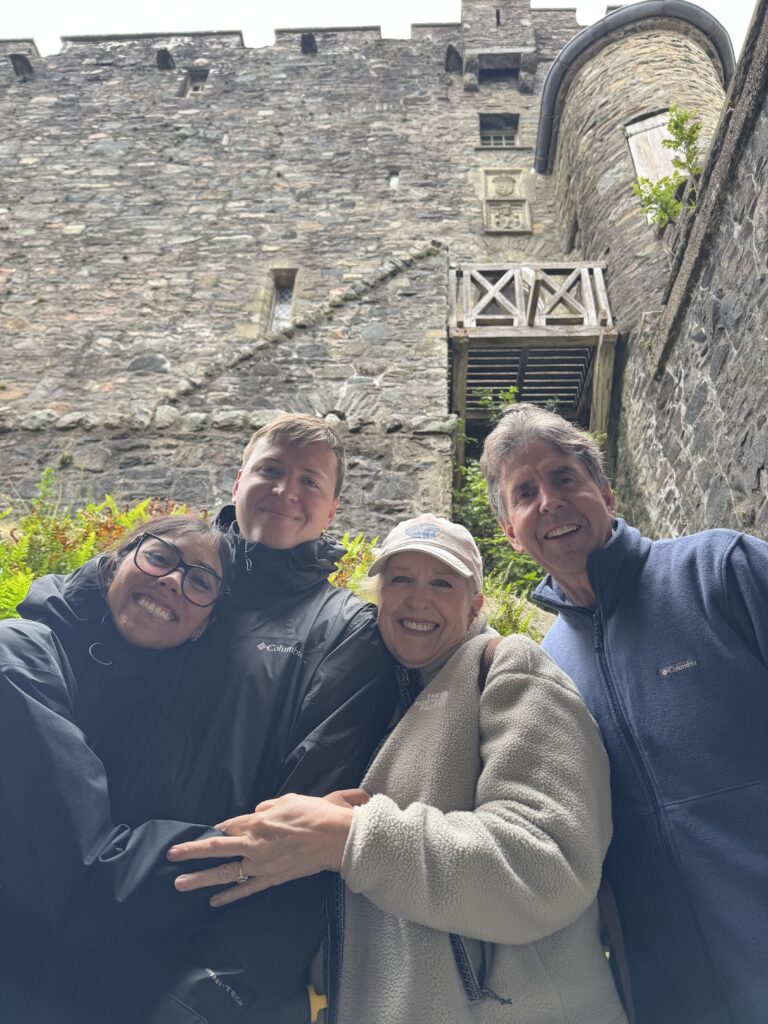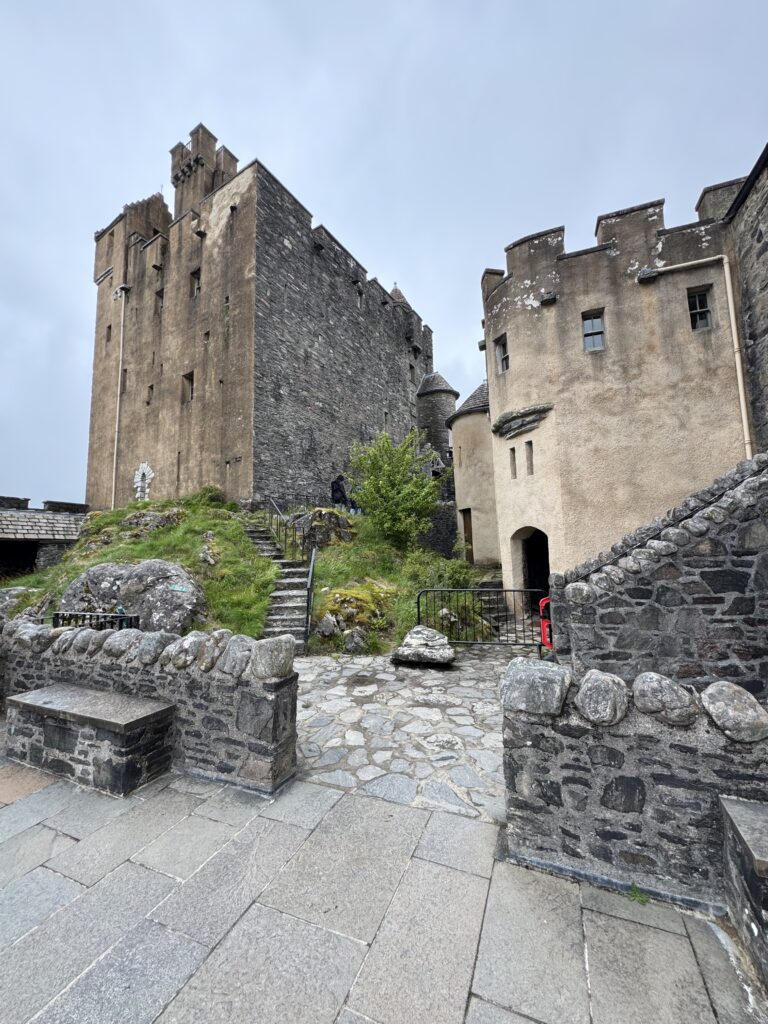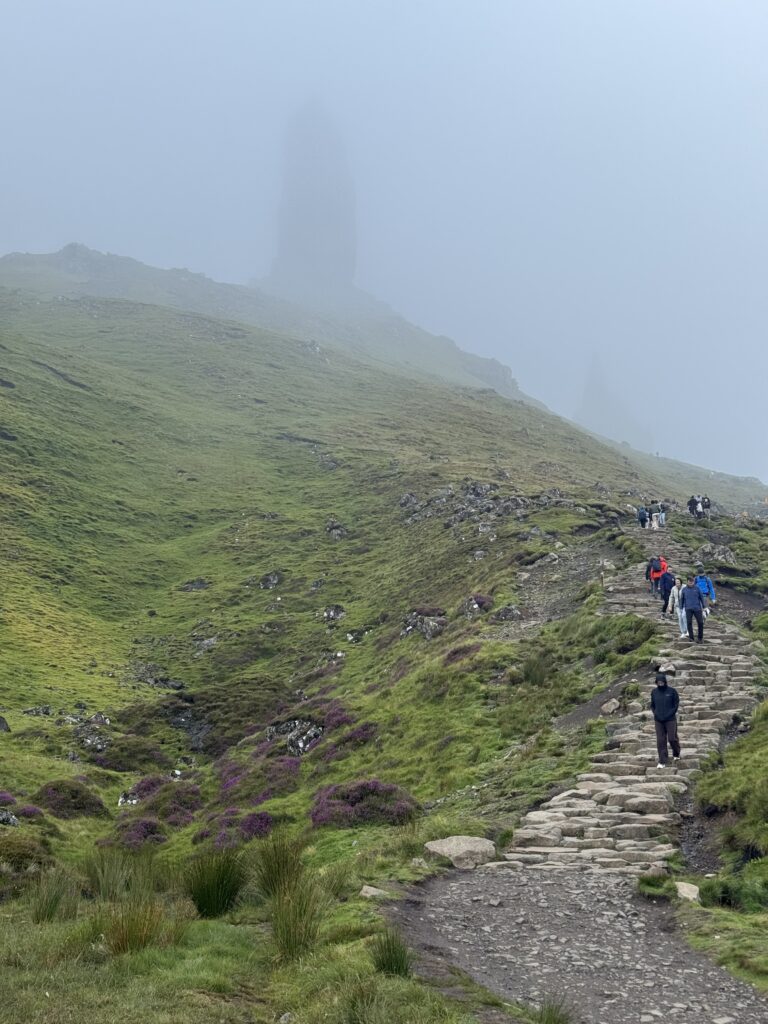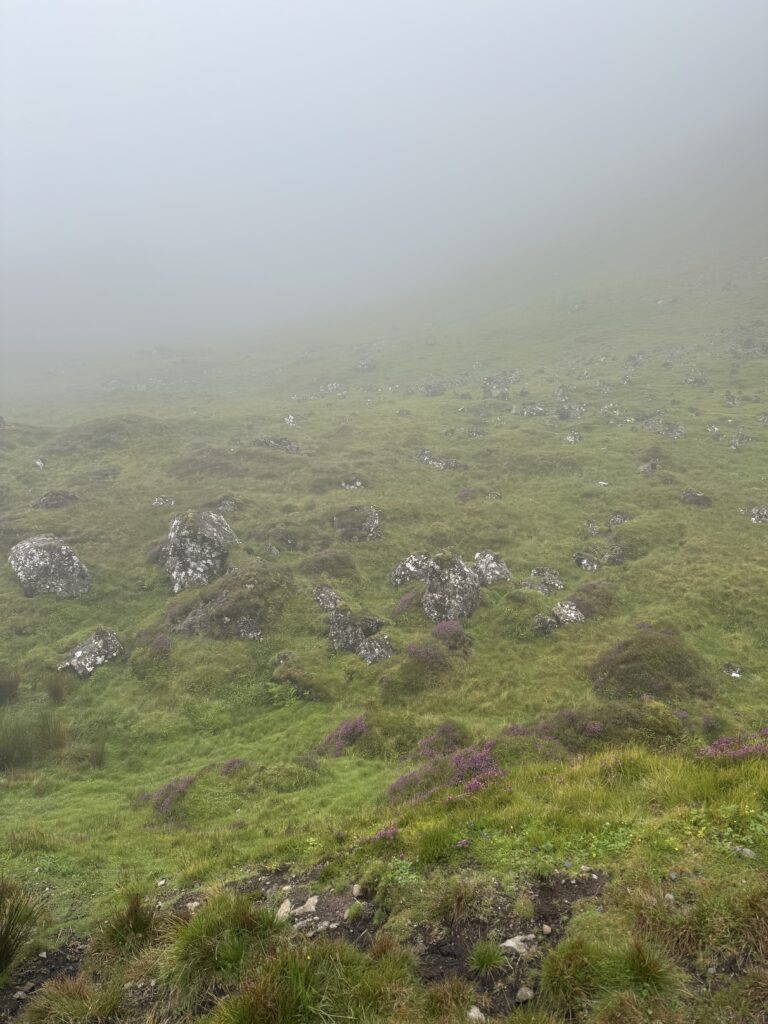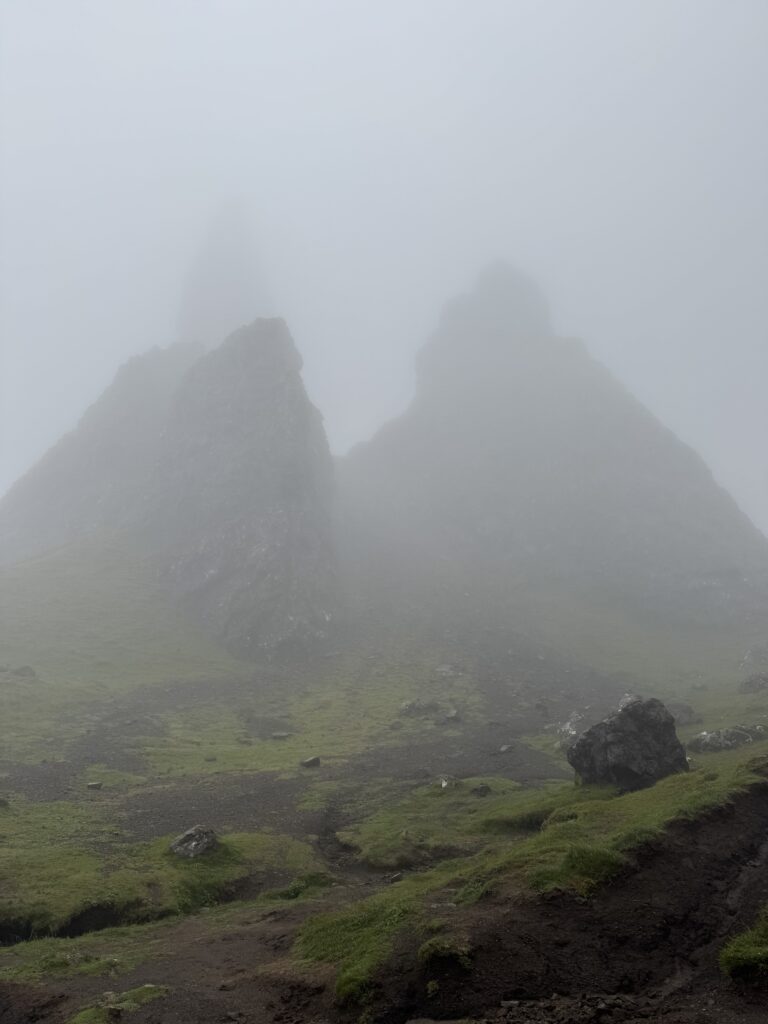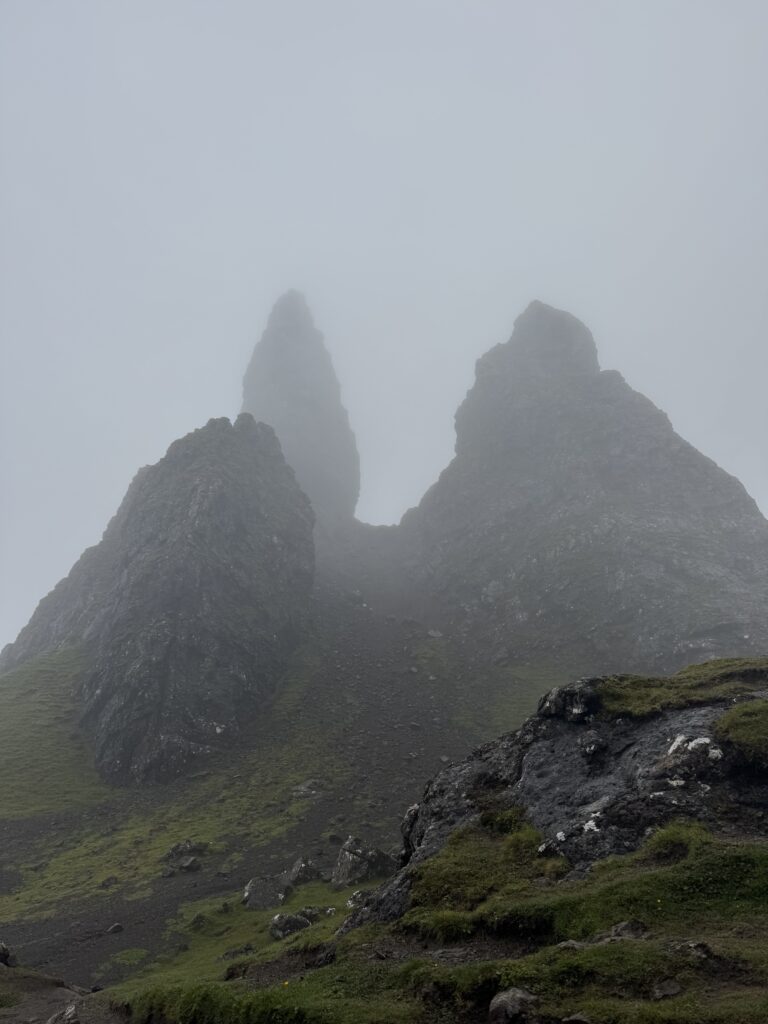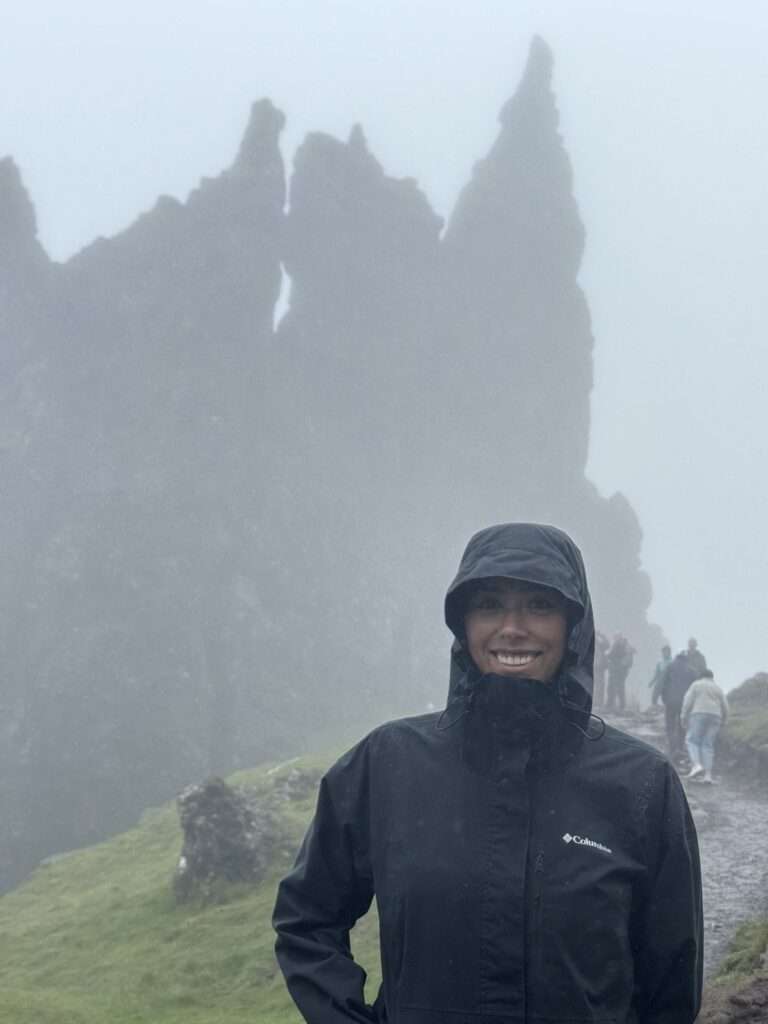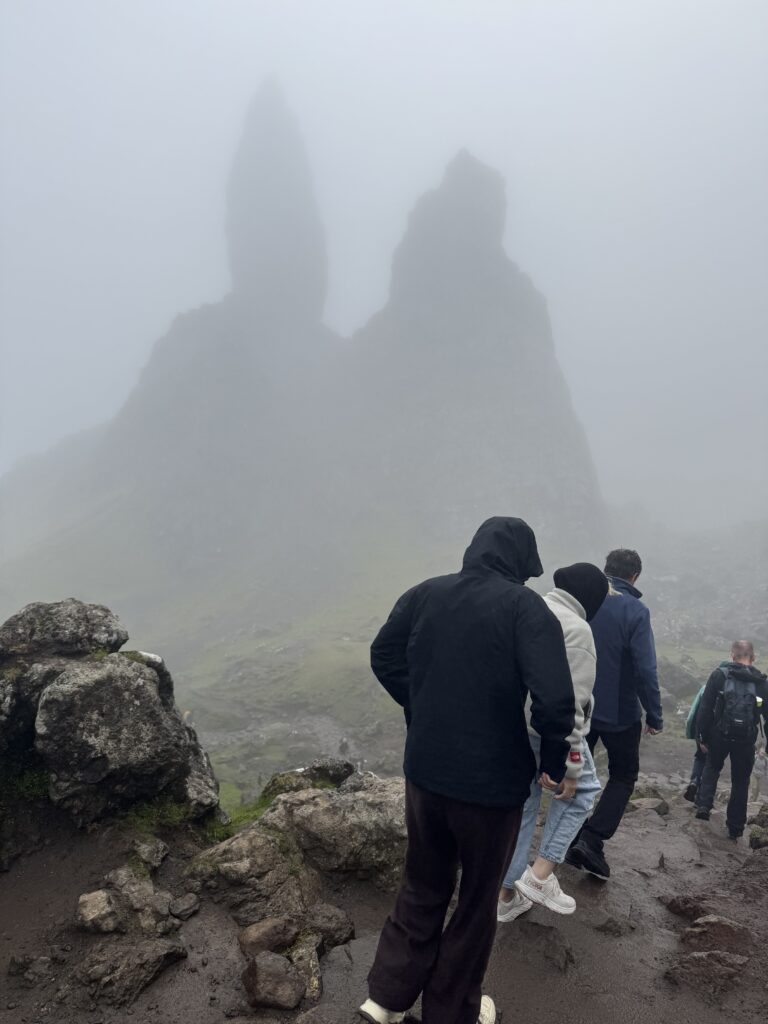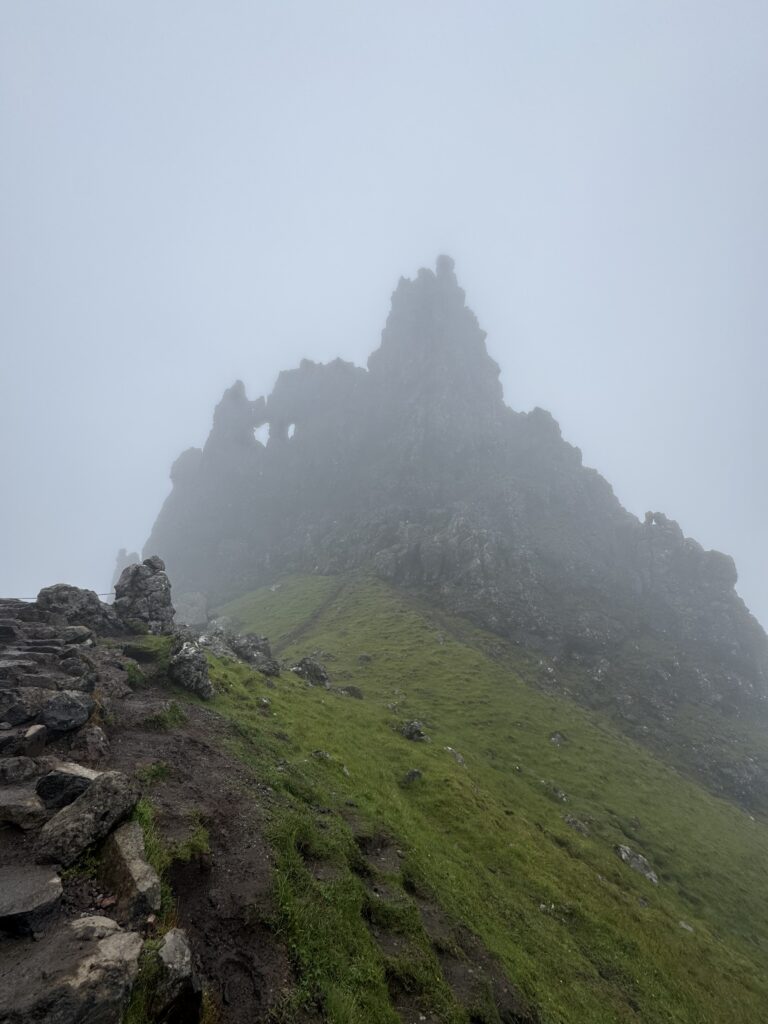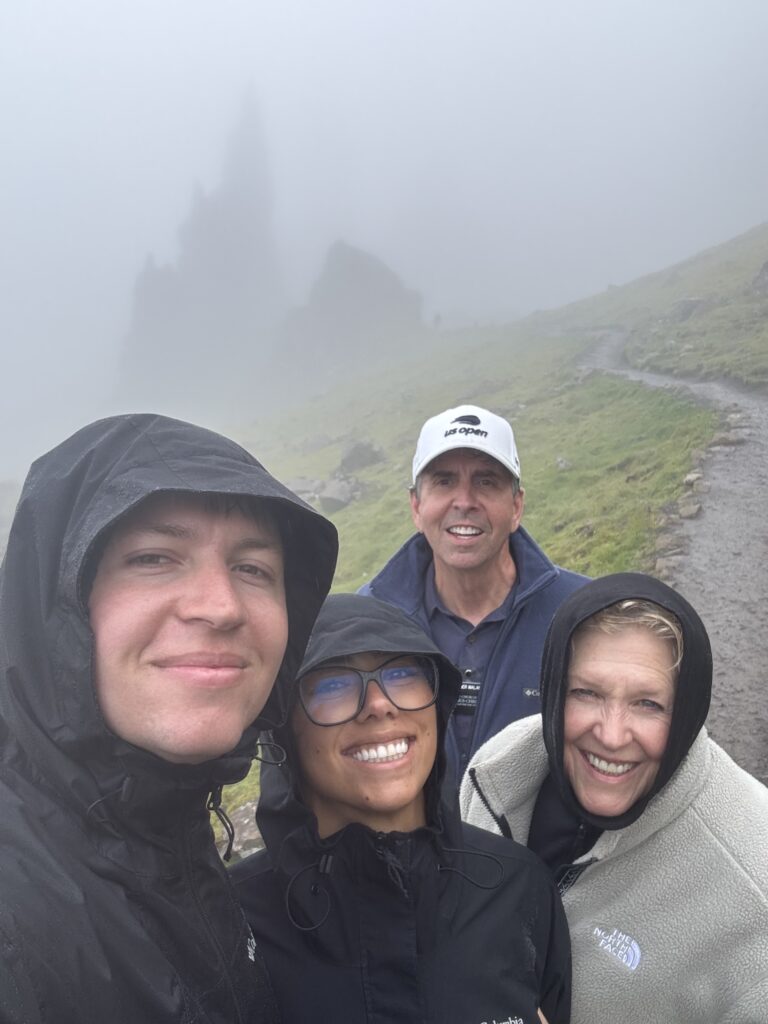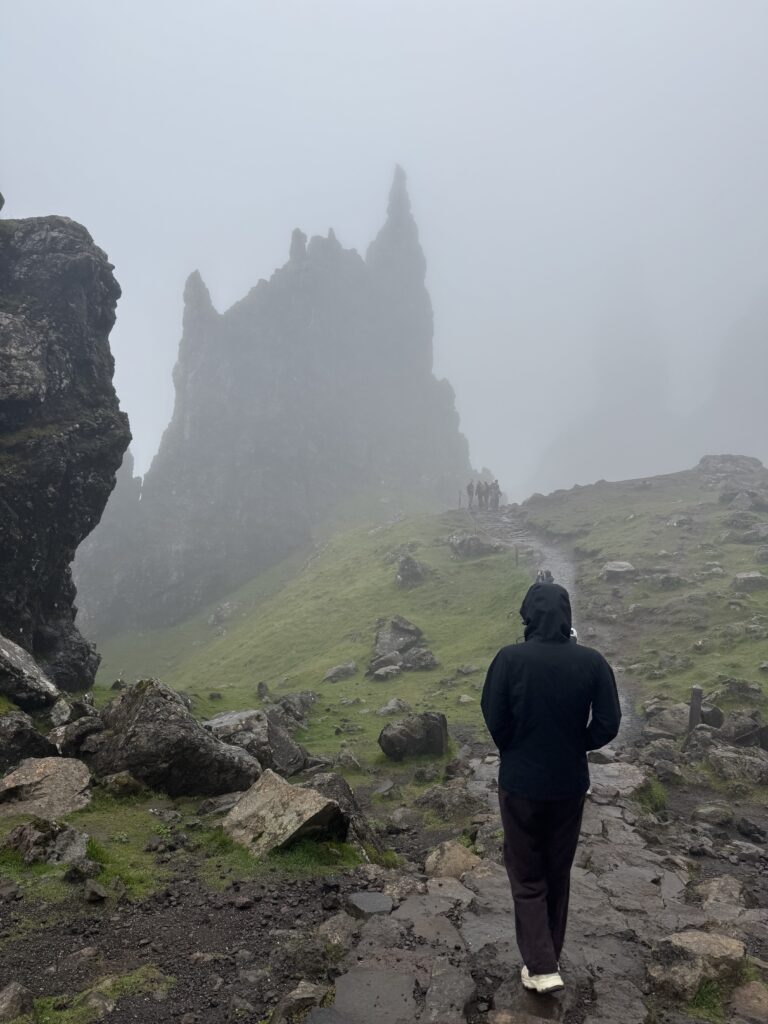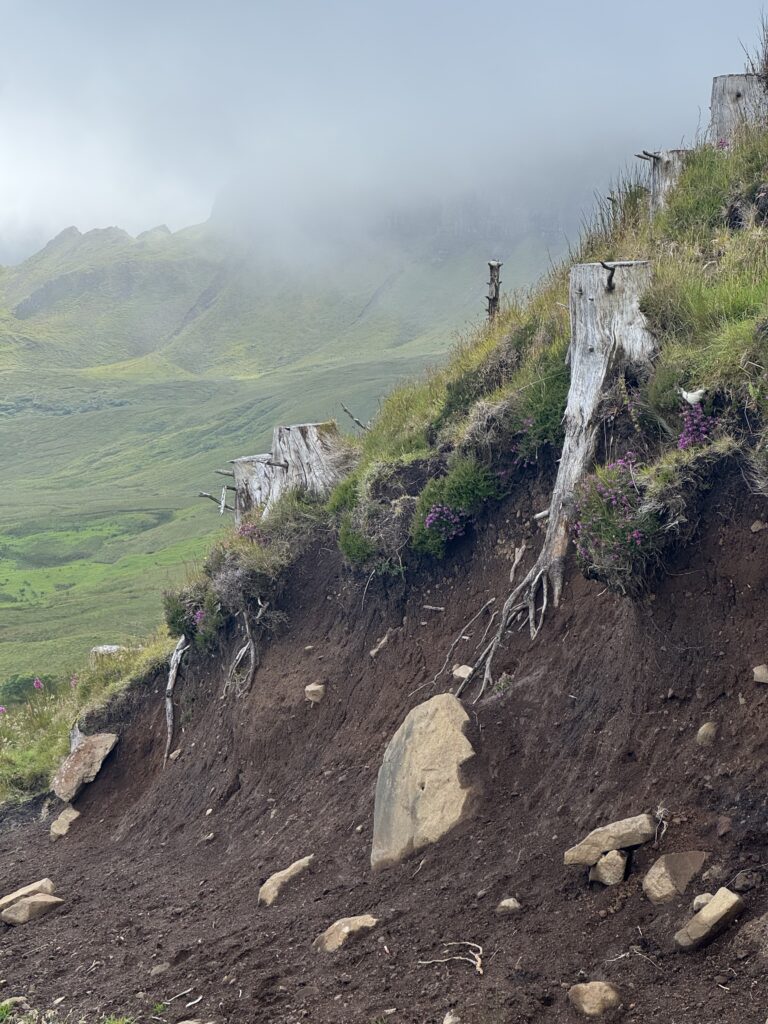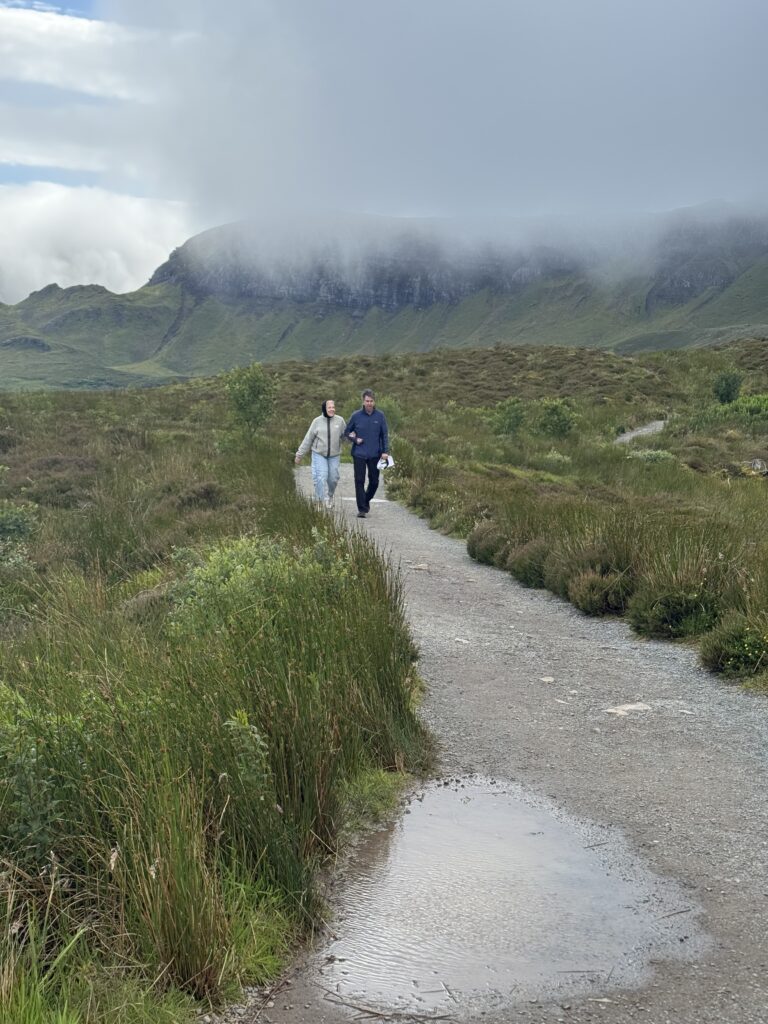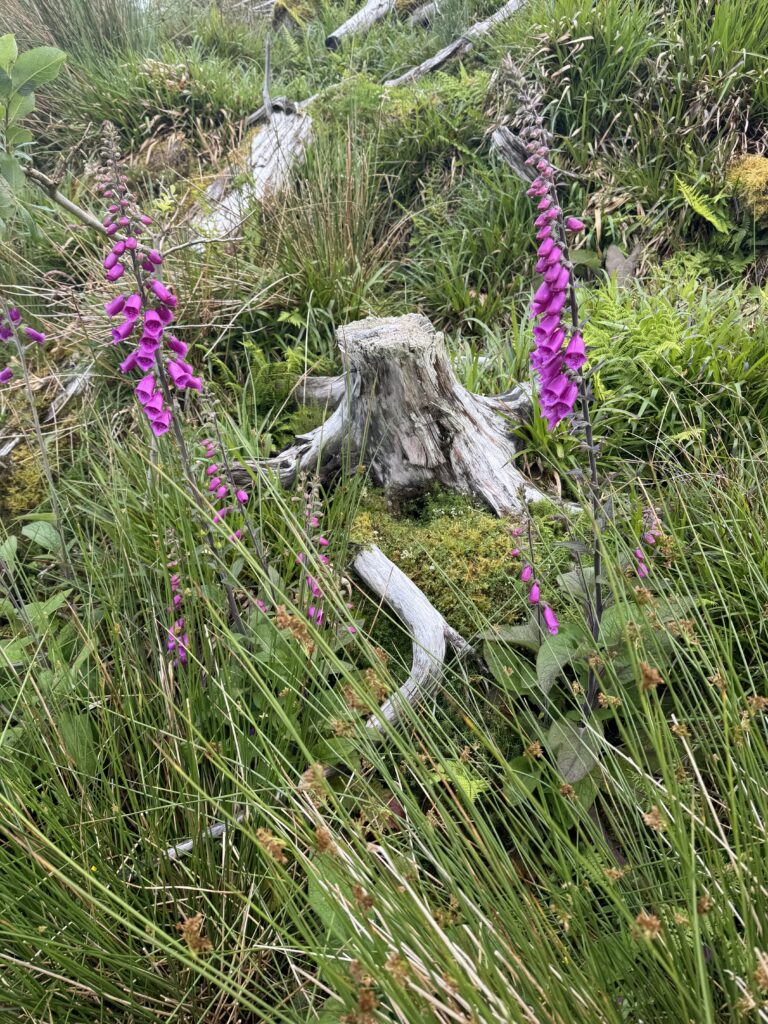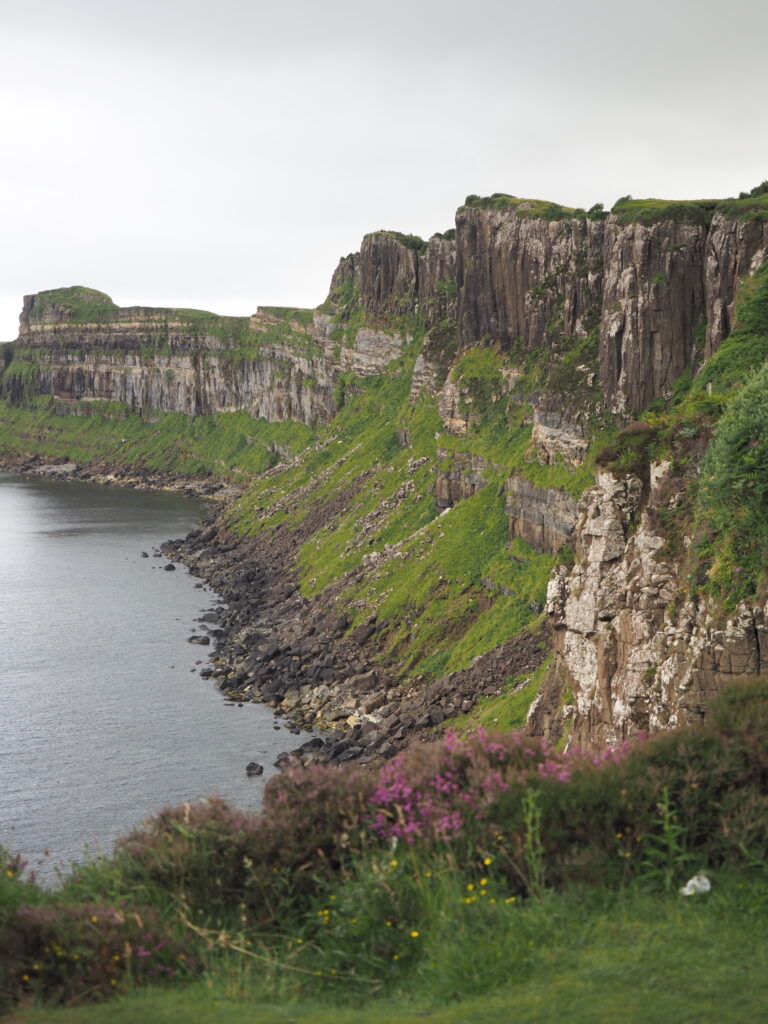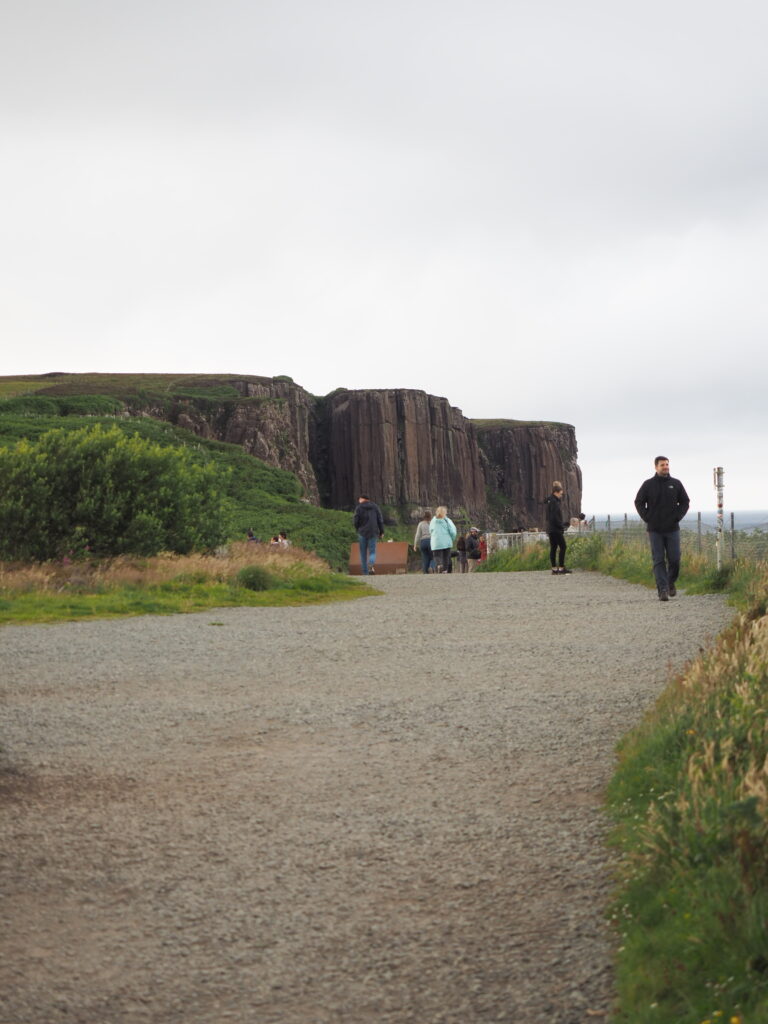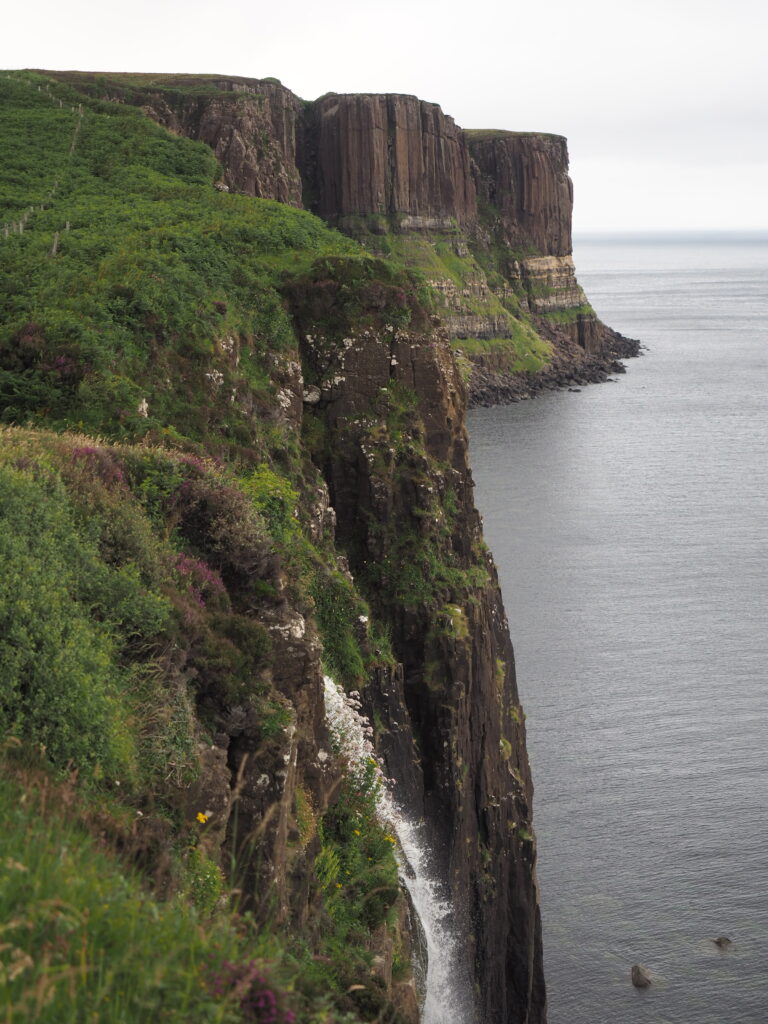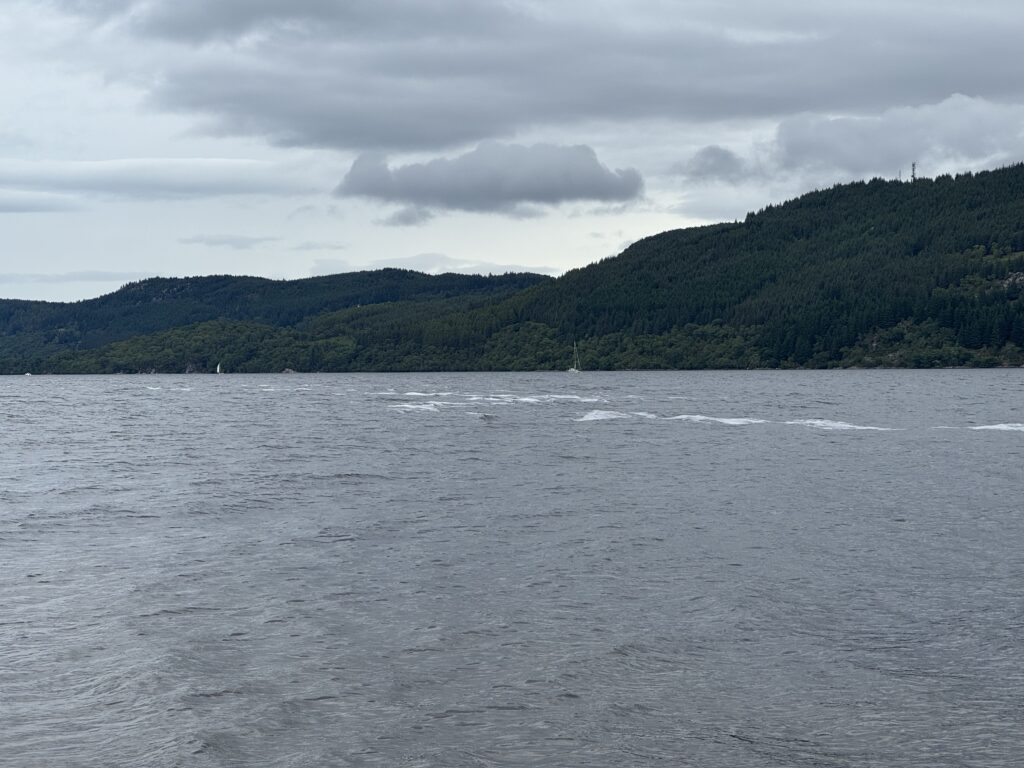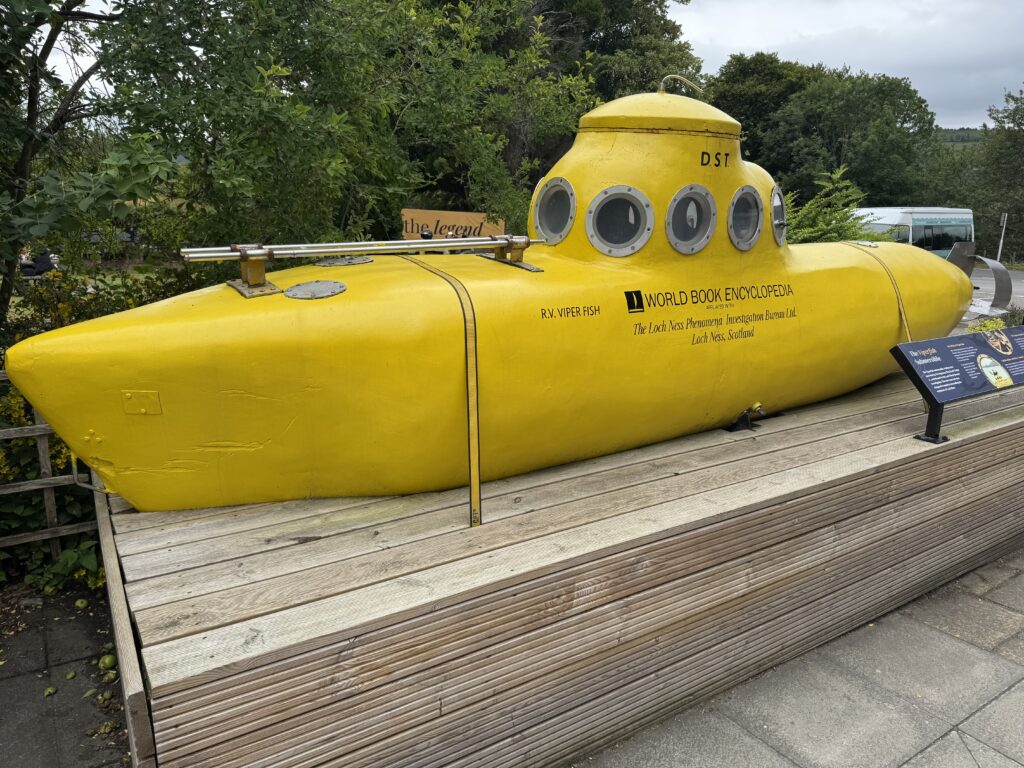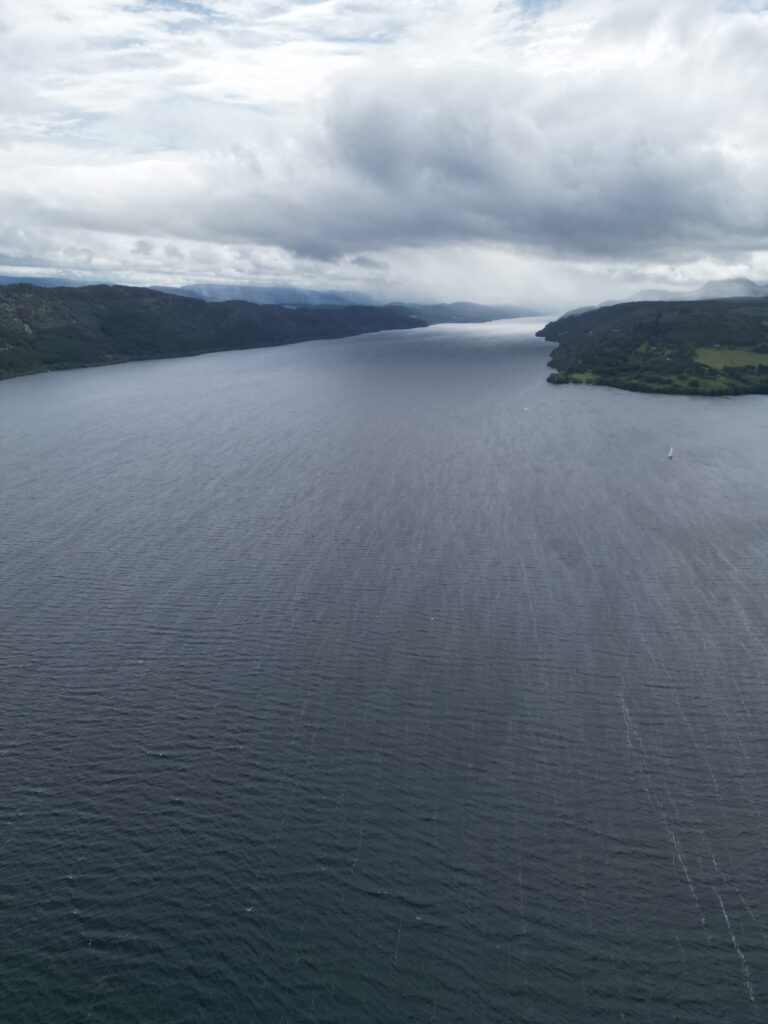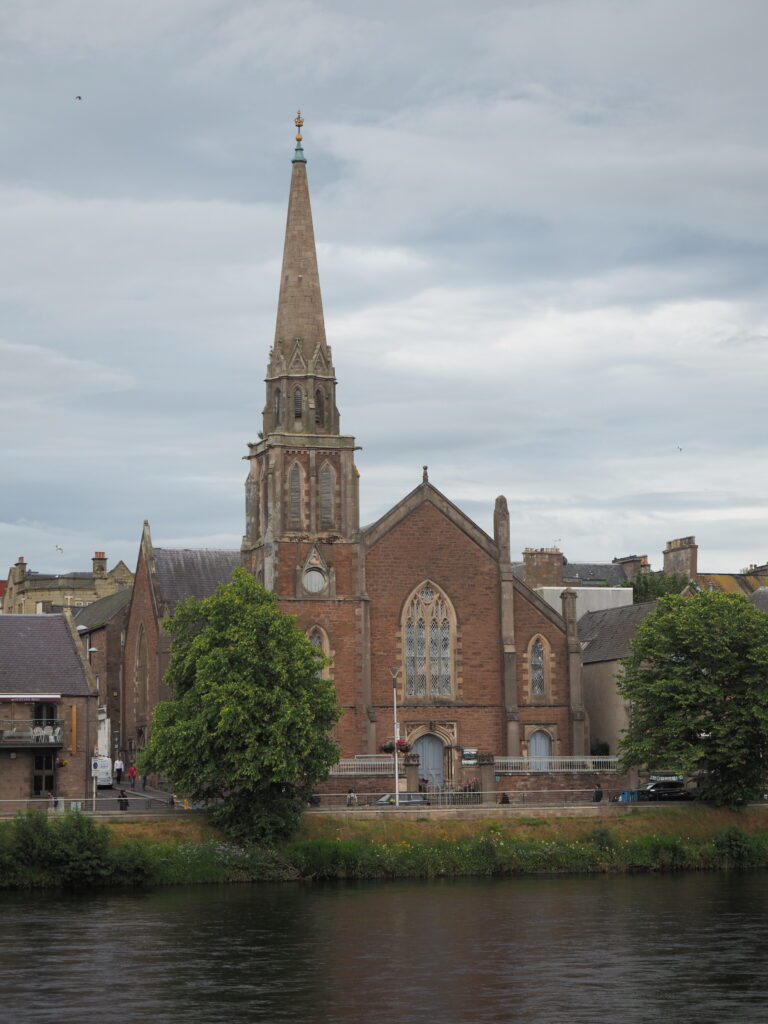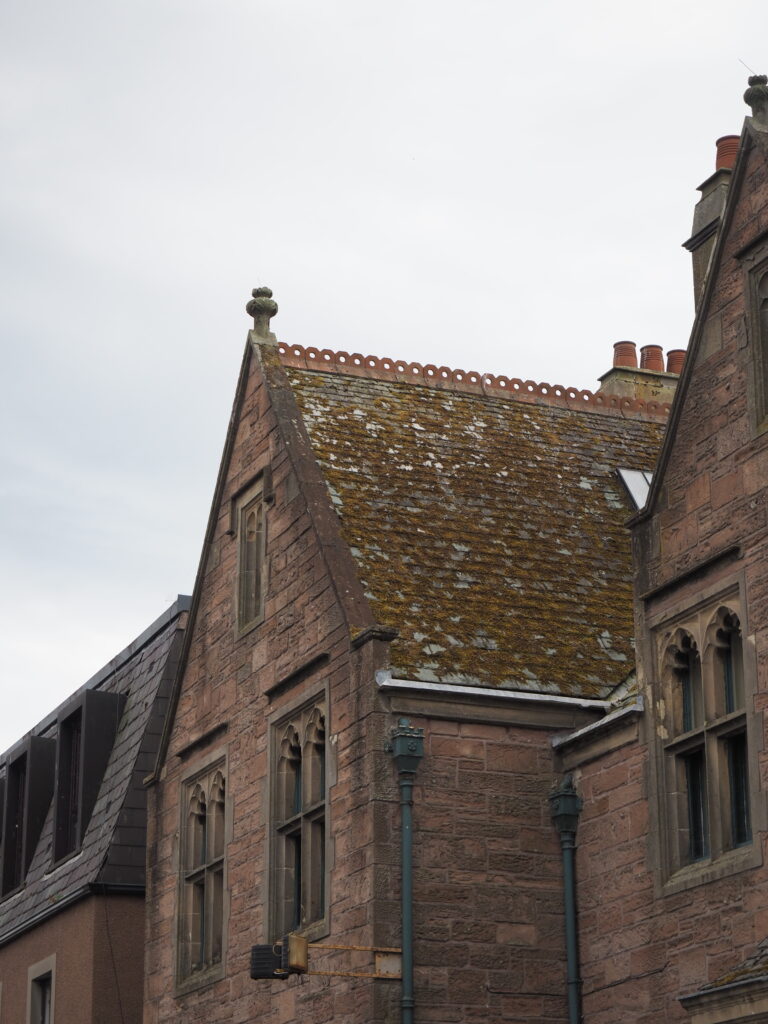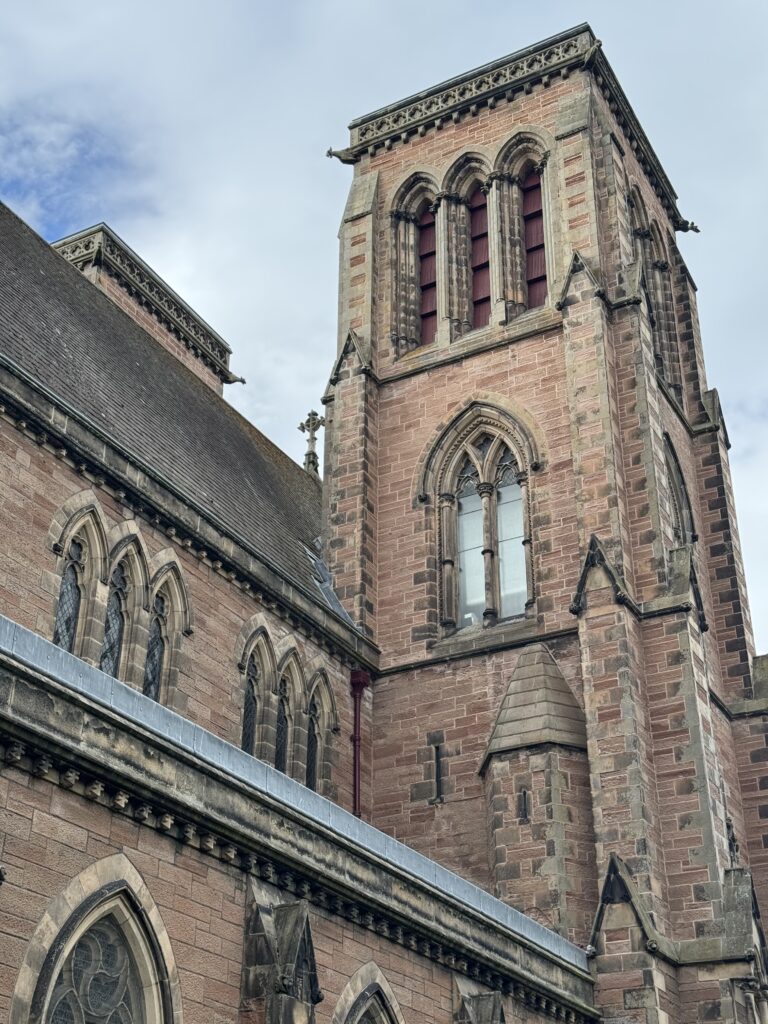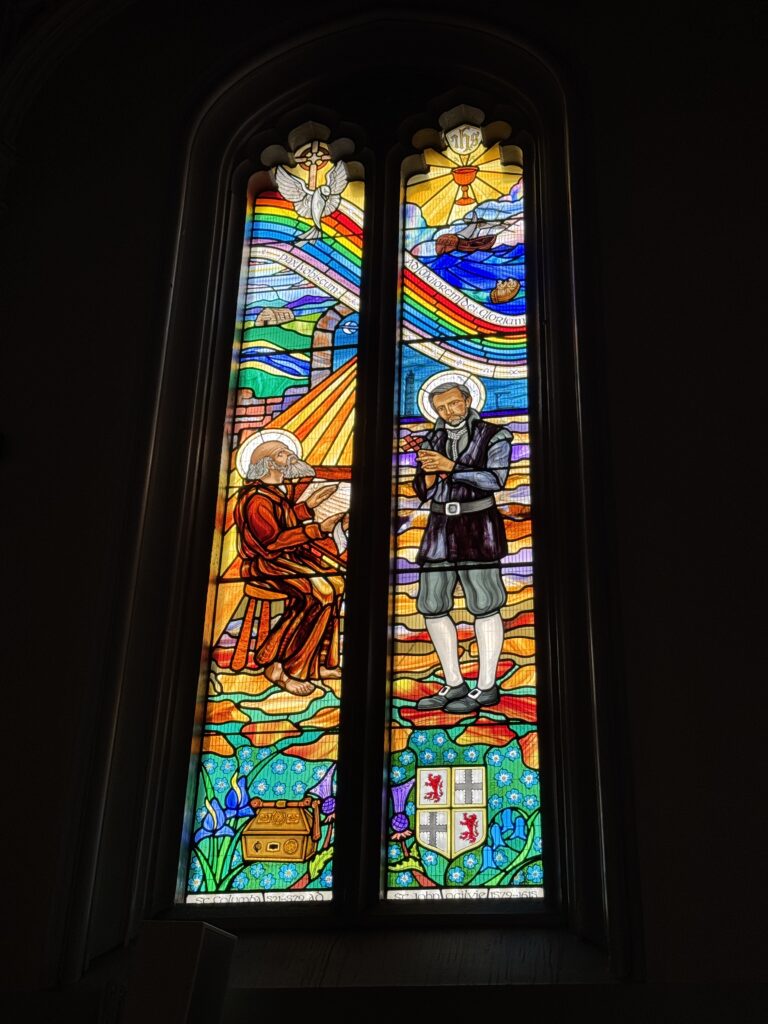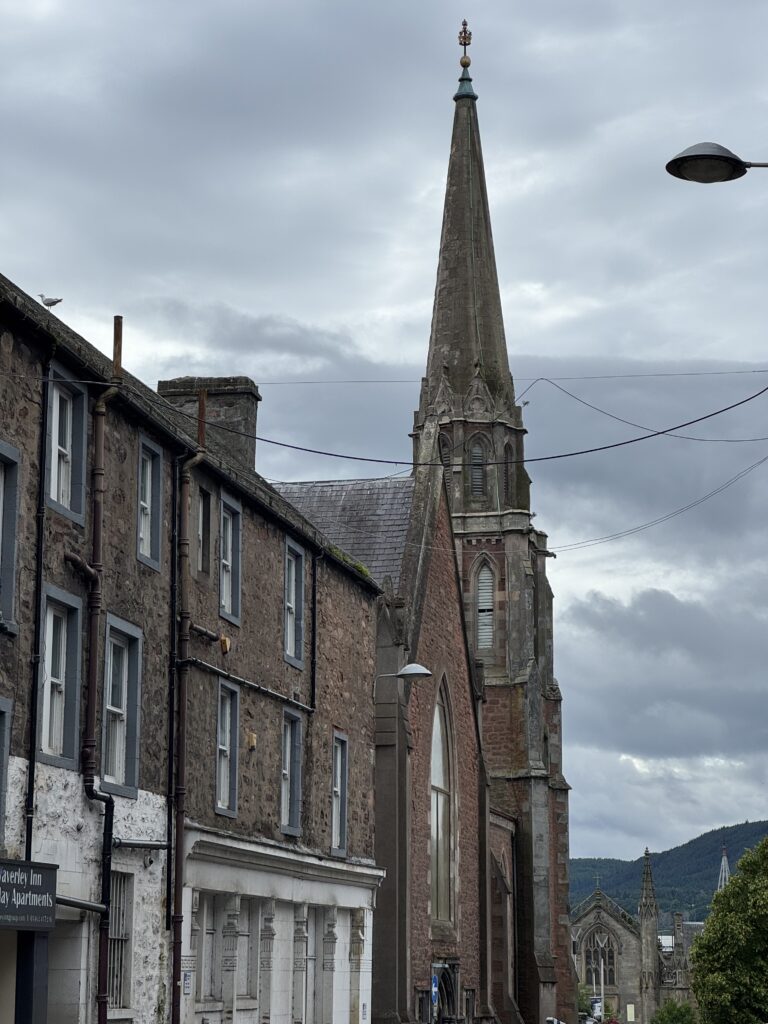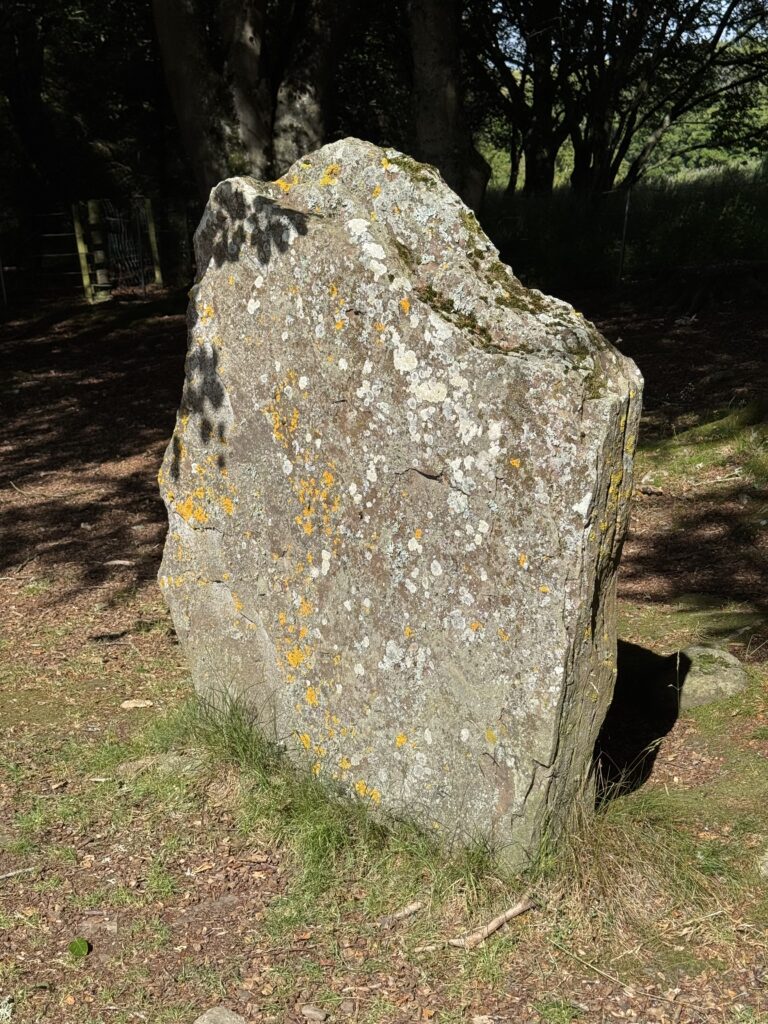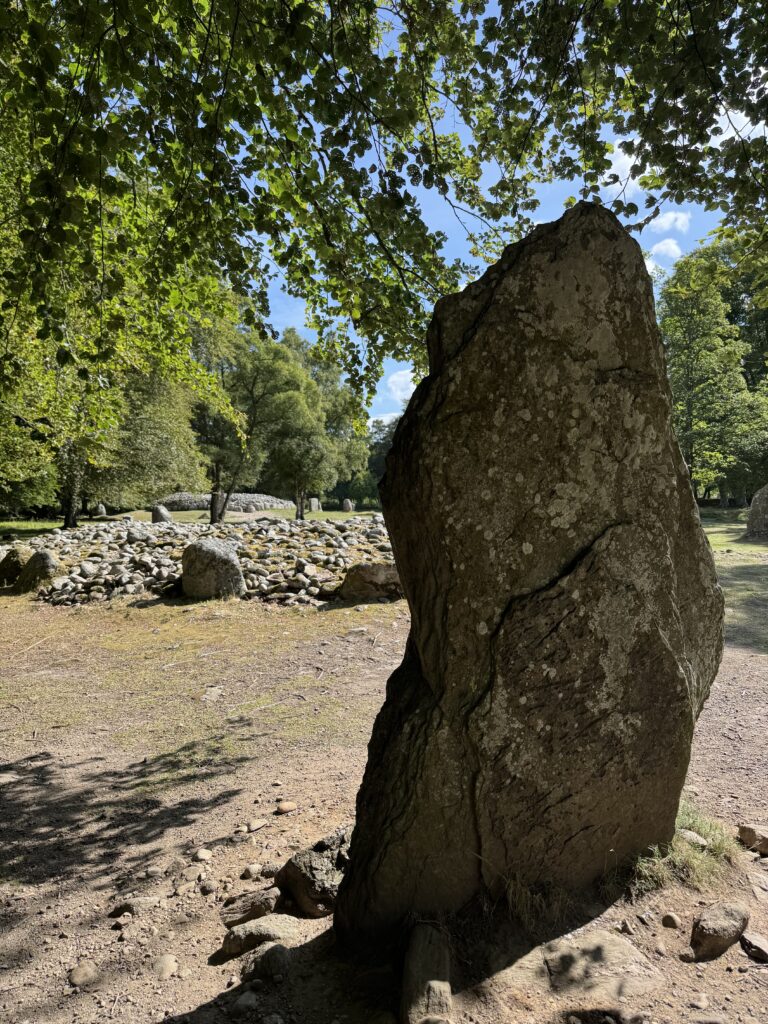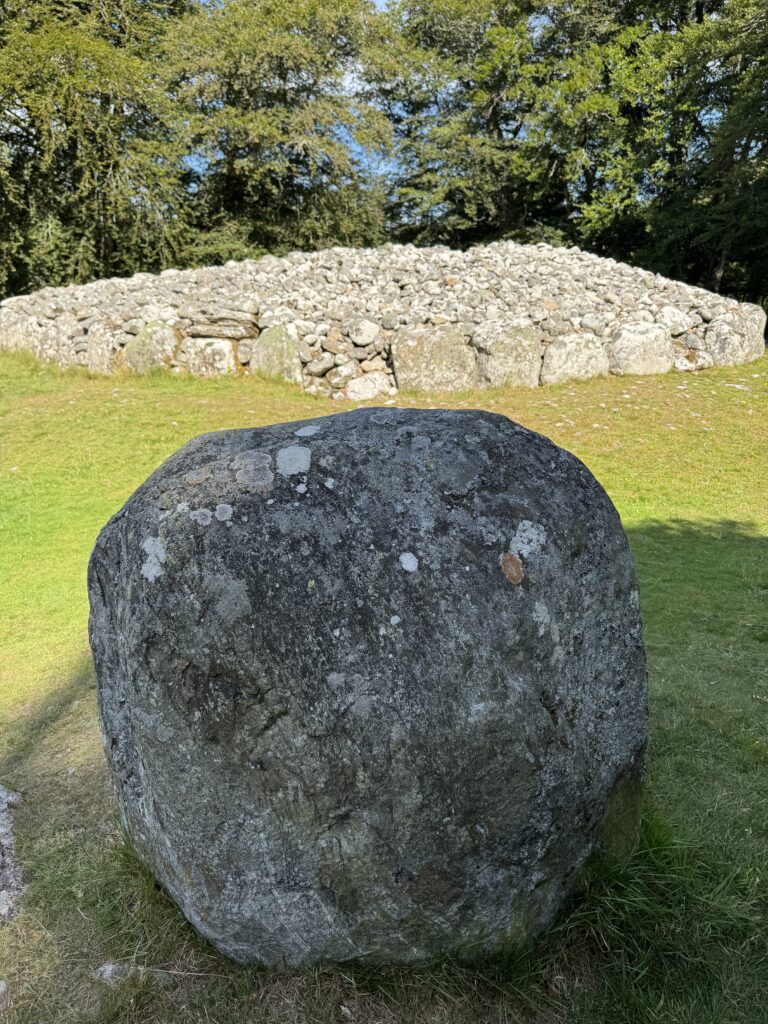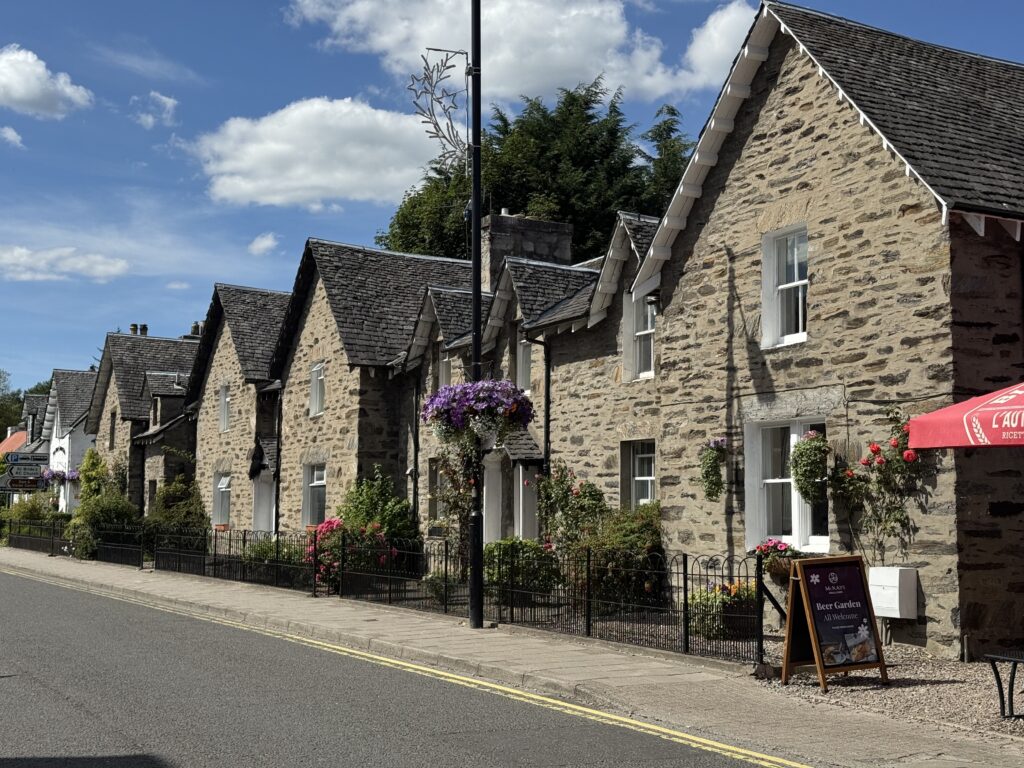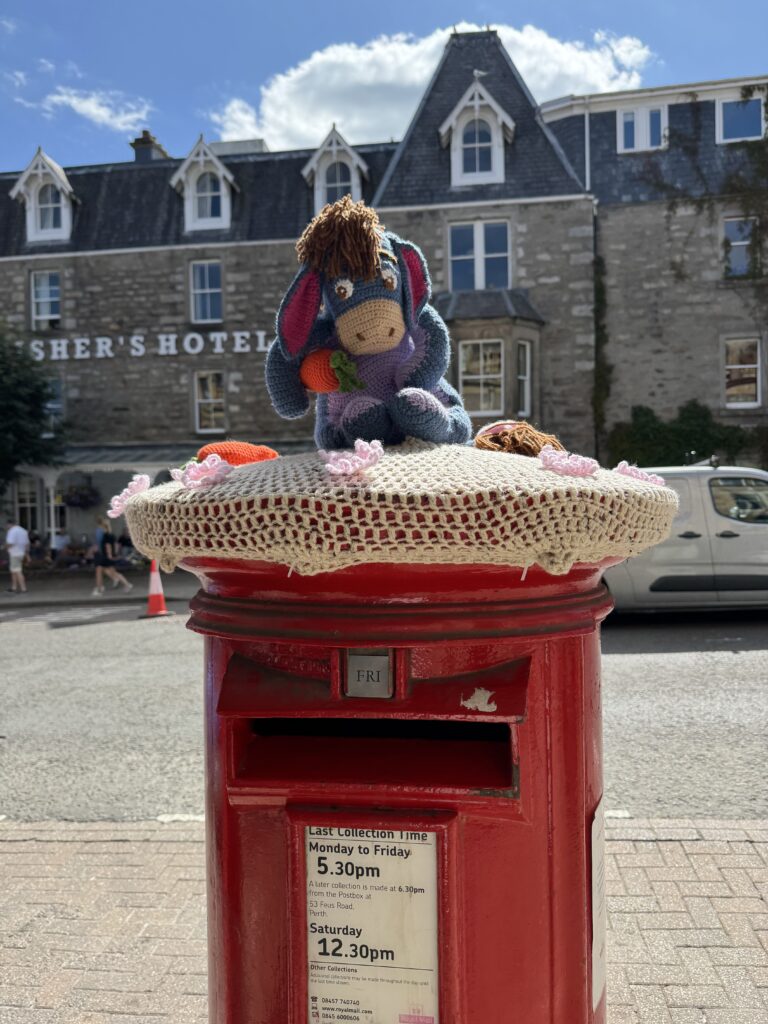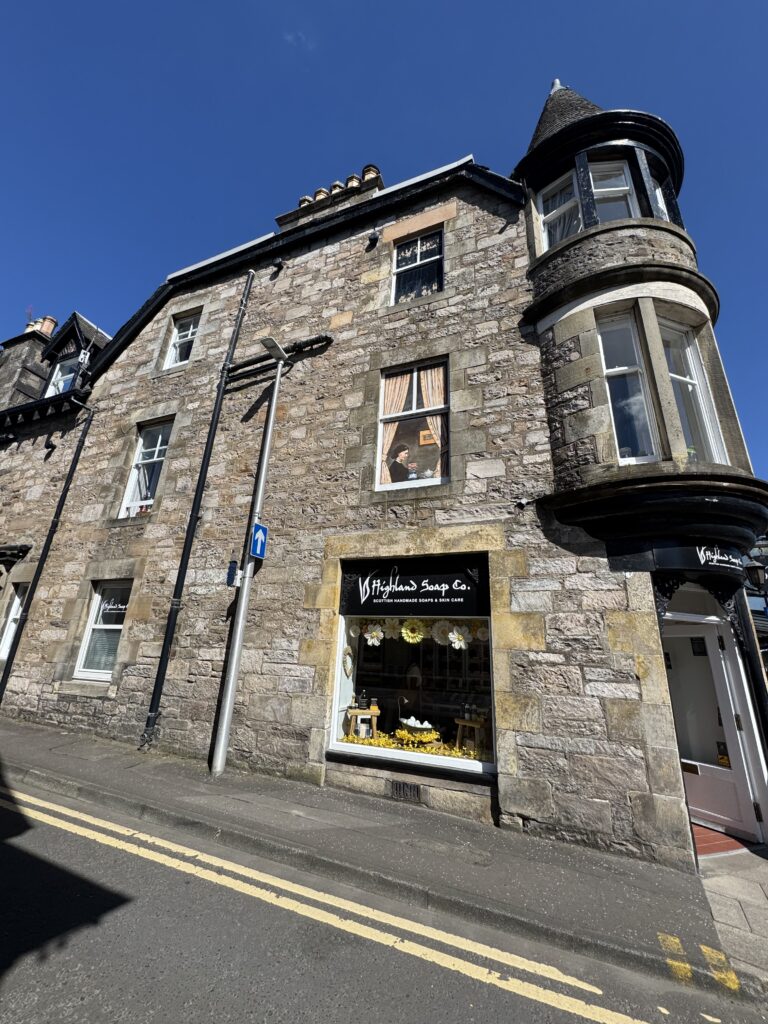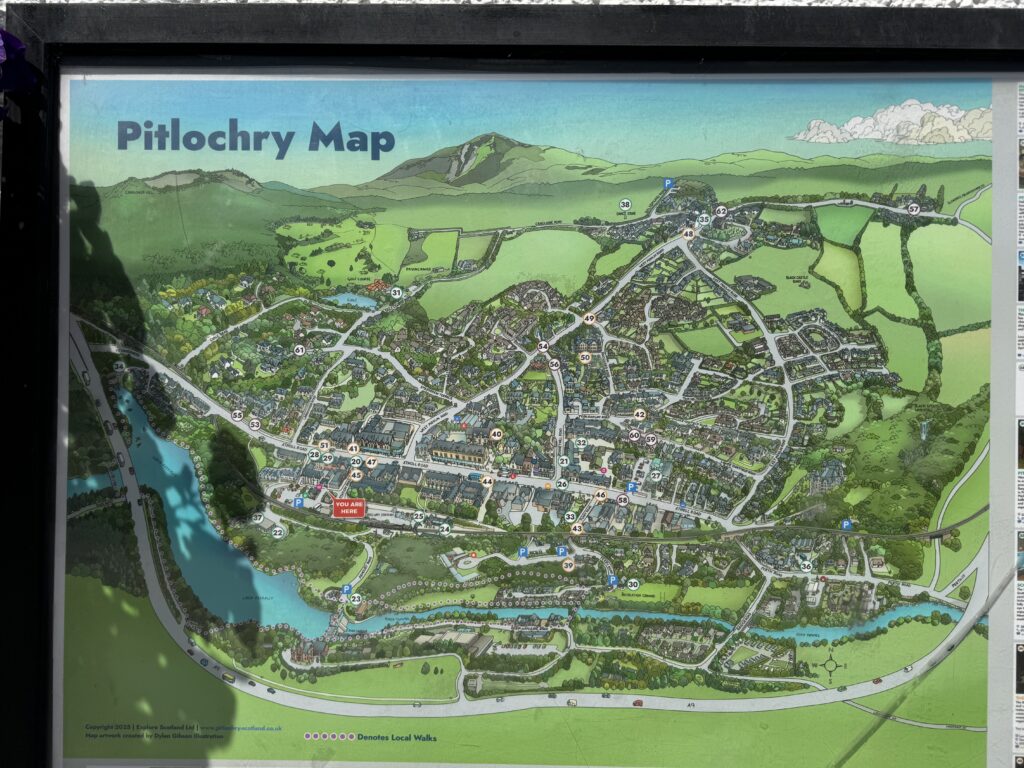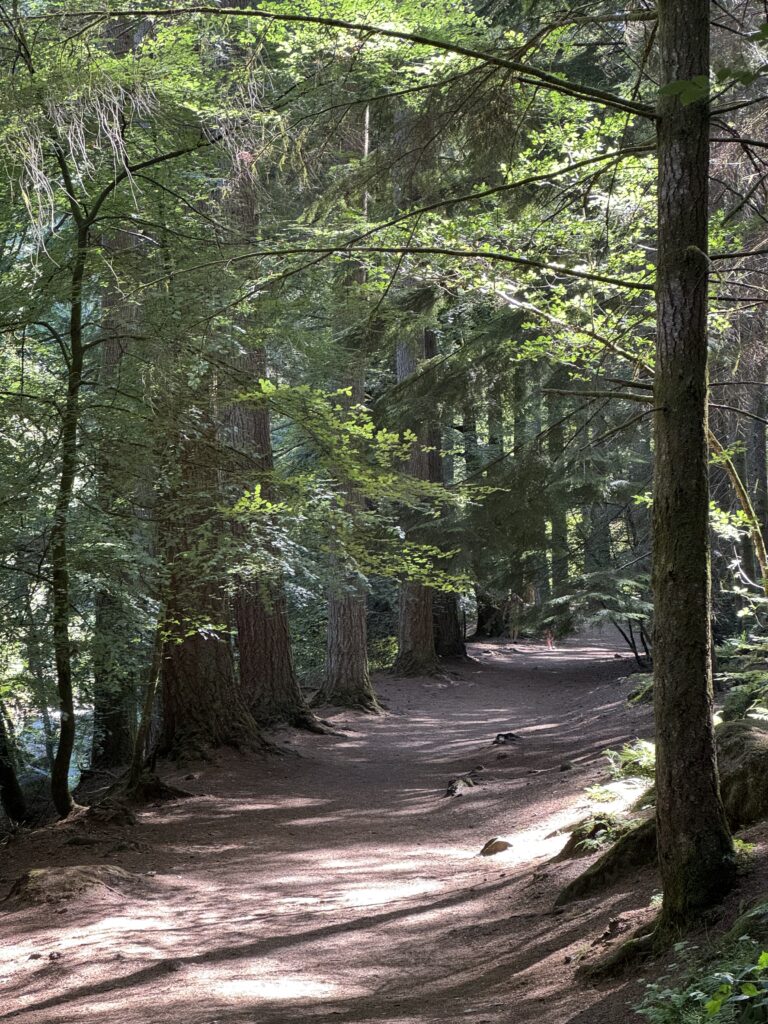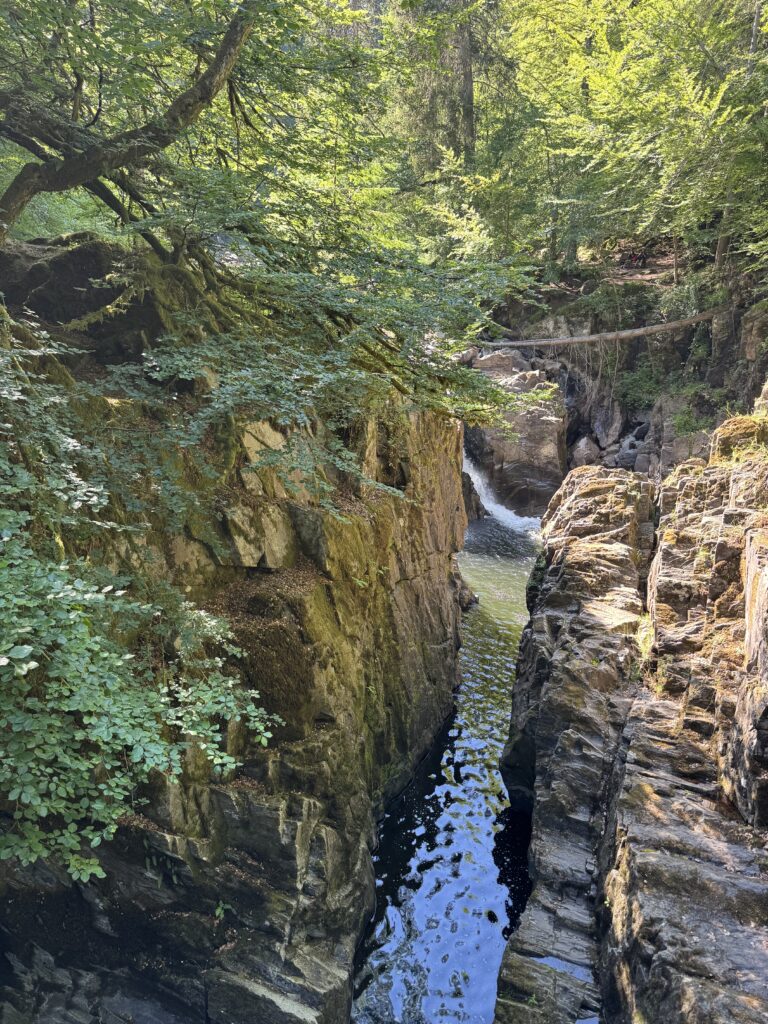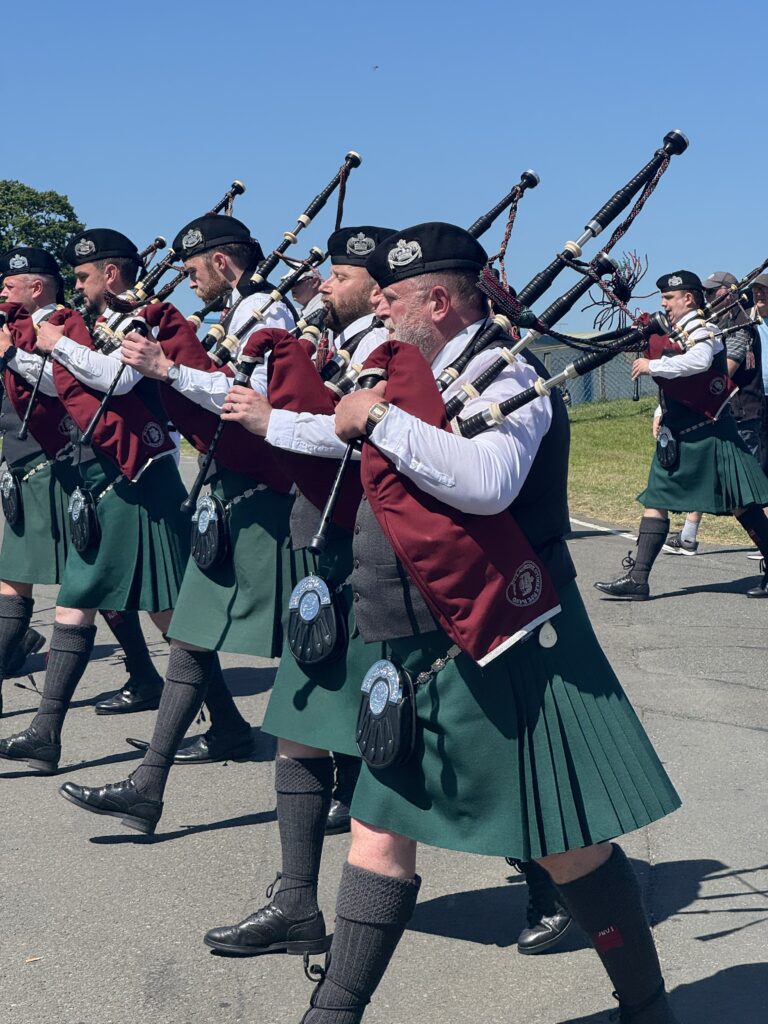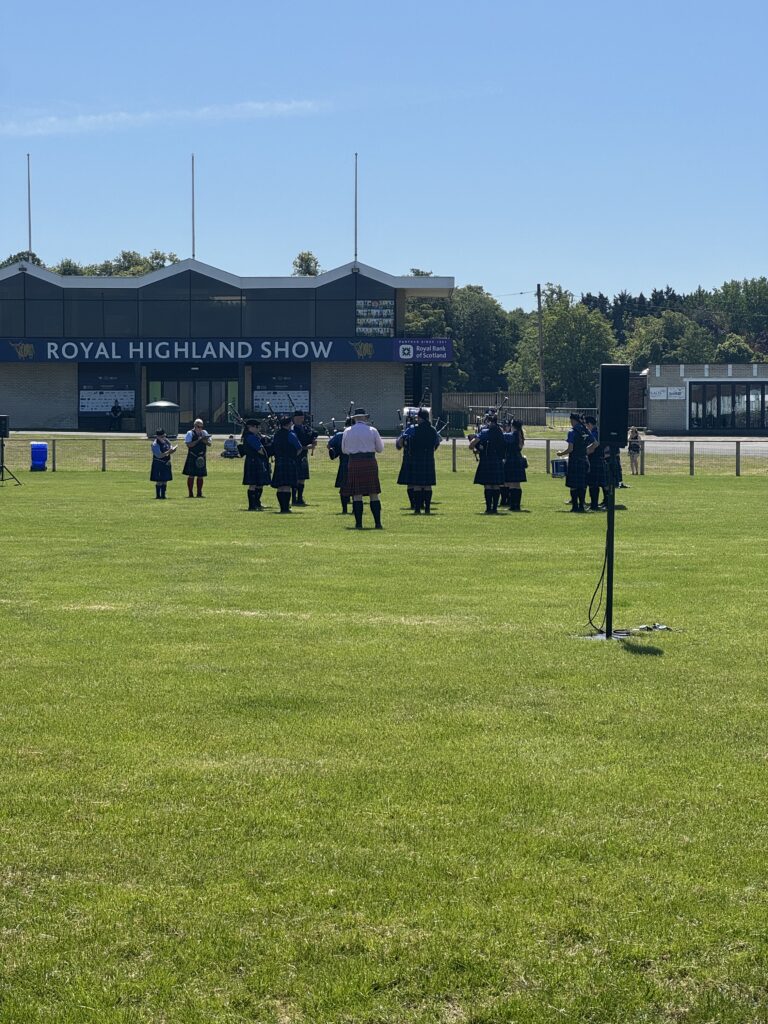Edinburgh & The Highlands
7 July 2025
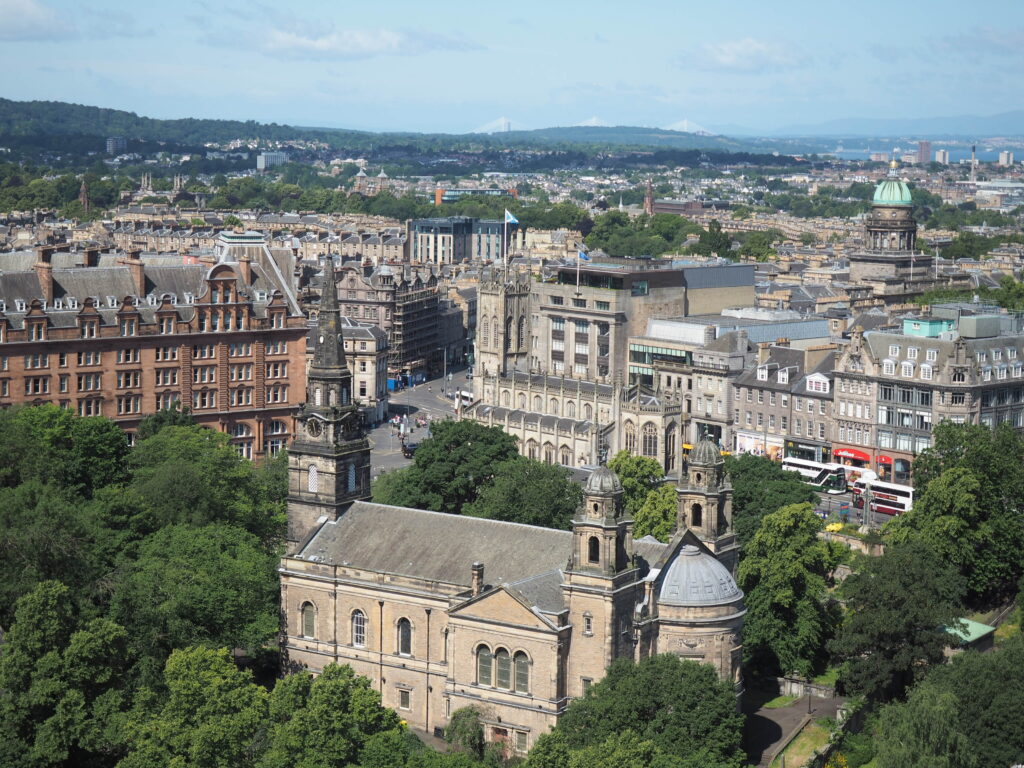
Edinburgh is Scotland’s charming capital city. Although I haven’t seen too much of Europe, the city felt distinctive and special because of its dramatic architecture. Unlike the pastel-painted plaster facades common in what I have seen of Europe, Edinburgh sports unpretentious, unpainted sandstone on many of her buildings. The impression the architecture made on me landed somewhere between austere medieval and refined Renaissance. It’s easy to see why Edinburgh is such a popular travel destination. In our case, we came to Edinburgh to visit my parents, who have been living there for about a year.
Day 1 - Travel
We started our last morning in Kefalonia, Greece early to get Poobie to her 11:50 am flight. After dropping her off, Indi and I wandered Argostoli’s main walking street. Most shops were closed, but the shade made it a pleasant stroll. Before returning the car, I made one last attempt to scrub the salt from the driver’s seat, just enough to pass inspection. I think I got most of it out just in time.
We had heard the airport was chaotic, so we arrived early, only to find that security and passport control were quick and painless, which left us with plenty of time to kill. The airport felt cramped with only a handful of gates struggling to handle the crowds.
Weather warnings slowed everything down, including boarding, takeoff, and even landing, as we circled the runway in a holding pattern upon arrival in the UK. The view during our descent to London was prettier than I had expected. I saw a couple of full-on palaces or manors from the plane that blew me away.
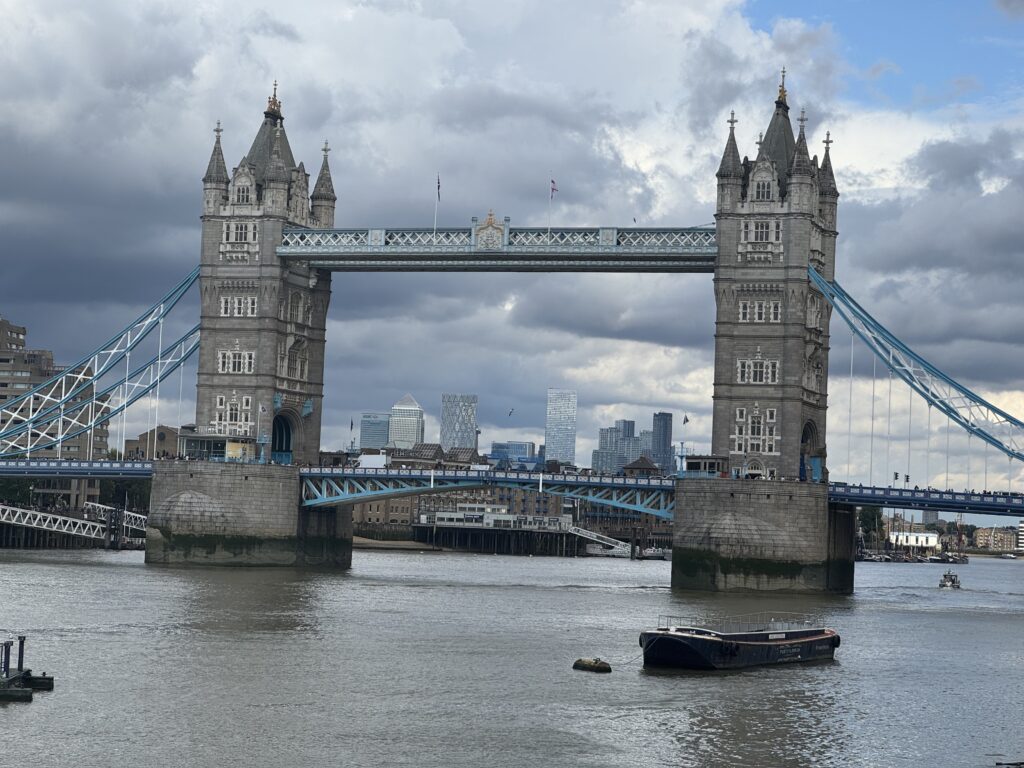
Getting out of the airport was quick and easy. We caught the Thameslink train toward St Pancras but stopped first at London Bridge. We walked a loop by the river to take in the views (mostly of Tower Bridge) before heading back to the station and continuing on the same line. From St Pancras, we crossed the street to King’s Cross, where we stepped into the Harry Potter Platform 9 ¾ store. It was packed wall to wall, and the line to pose with Harry’s luggage cart was massive. I settled for a keychain and a chocolate frog that cost far too much. Later, we grabbed some dodgy sushi that went straight into the trash and replaced it with surprisingly good Korean spicy chicken.
We took the train to Edinburgh with Lumo. The train was very dirty and didn’t smell great. Lumo’s seat map was super confusing, so although I tried really hard to get a good seat, I managed to pick one of the few rows without a window view. We departed Kings Cross Station at 19:24 and arrived at Edinburgh close to 24:00. My parents picked us up and we drove a short way back to their flat to fall asleep as soon as possible.
Day 2 - Edinburgh
- Victoria Street
- Edinburgh Castle
- Royal Mile
- National Museum of Scotland
- Holyrood House
The next morning, we woke up and had the chance to inspect my parents’ flat more thoroughly. It is a charming space, the perfect size for two, plus the occasional visitors. It is full of natural light thanks to large windows looking out on a communal garden and a large public park.
Victoria Street
We walked a short distance to take a bus to the Royal Mile and walked to Victoria St. The street is lined with colorful shopfronts that are in sharp contrast to the grey/brown monochrome of the rest of the cityscape. Famously, Victoria Street is compared to Diagon Alley from the Harry Potter Series, a reputation that vendors have leaned into since the myth has become popularized.
And, sadly, myth is all it is! J.K. Rowling has confirmed it is a myth on X: “No real street inspired Diagon Alley, I’m afraid. It came out of my head! I’ve never seen 99 % of the places that claim to be the inspiration and I’d never seen Victoria St when I created DA…” We went into a Harry Potter store, but besides that, we mostly meandered down the road to enjoy the enchanting cobblestone street.
Edinburgh Castle
After that, we walked to Edinburgh Castle. The castle sits on Castle Rock at the top of the Royal Mile and is Scotland’s most visited paid attraction. We used my mom’s phone and an app that was preloaded to give us an audio tour of the castle. It was cool! The fortress has served as a royal residence, military stronghold, and symbol of the nation for centuries. My favorite parts were seeing the Crown Jewels of Scotland, St Margaret’s Chapel, and enjoying the panoramic views over the city.

Entry is ticketed, and it’s best to book in advance, especially during the summer. It was a good thing we got a relatively early start because when we left the castle, we encountered a horde of people filling up the whole street with foot traffic. Edinburgh gets about 5 million tourists a year, and many of those visit in the summer, like us.
Royal Mile
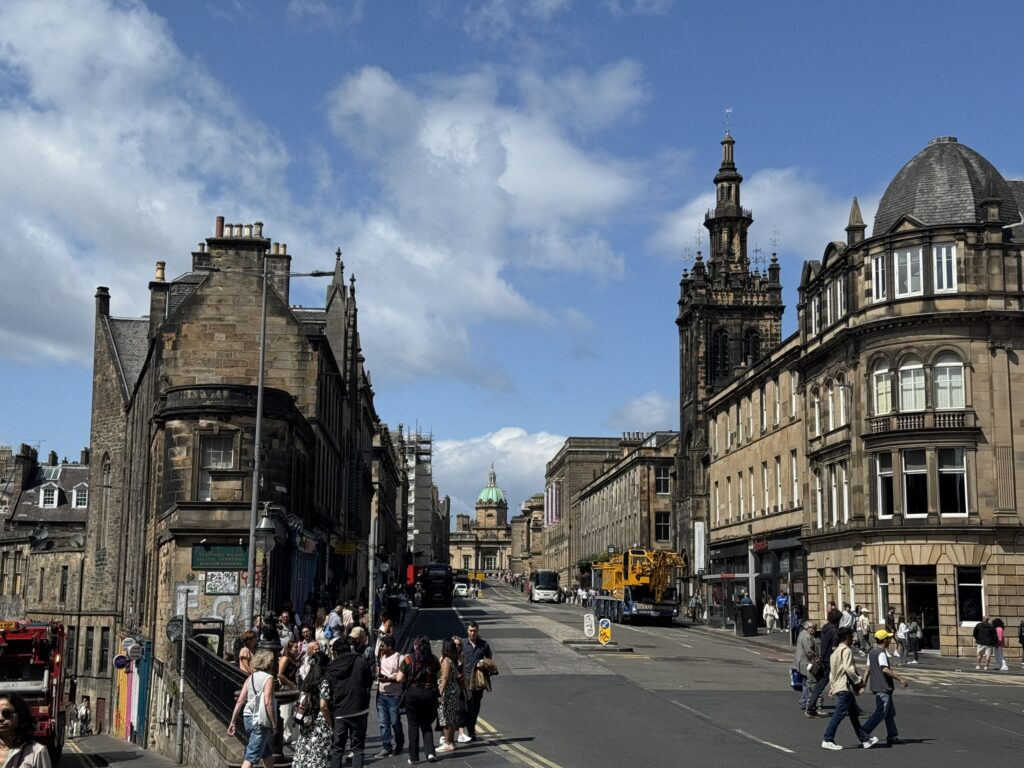
The Royal Mile is Edinburgh’s main street, running through the Old Town from Edinburgh Castle to the Palace of Holyroodhouse. It is lined with shops, pubs, and landmarks. Some popular stops along the route include St Giles’ Cathedral, the Real Mary King’s Close, and the Scottish Parliament near the palace. It is the busiest tourist area in Edinburgh and is best explored on foot, as long as you can walk one (royal) mile.
Scotland isn’t a foodie destination, let’s be honest. However, there is good food if you do some digging. I wanted a good haggis, and found a place just off the Royal Mile that had excellent reviews. We arrived at Makar’s Mash just before opening time and found a fairly long line. We got our name on the waitlist and were assigned a 40-minute wait time. While waiting, we wandered around the surrounding area and entered a few shops. We took the time to tour the famous St Giles’ Cathedral before heading back to the restaurant and being seated.
The food did not disappoint! We all ordered a different dish along with an appetizer of haggis to share. I liked everything I tried, especially the haggis. The haggis is made from minced lamb offal and Scotch beef, oats, onions, and spices. It is served over mashed potatoes and covered in a turnip mash – neeps and tatties. Although in Scotland, the turnips used are often actually rutabagas, which are a cross between turnips and cabbage. I get why eating organs like heart, liver, and lungs can freak people out, but I highly recommend giving it a try.
National Museum of Scotland
We walked to the National Museum of Scotland, which was huge, free, and very cool. We didn’t have the patience to look through much or even or most of the museum, but we did see a few cool exhibits. The wildlife room was especially impressive to me. Admission is free, and the museum is open daily. That and the museum’s impressive collections are what make it the most visited museum in the country.
Holyrood House
To end our day, we finished our walk down the Royal Mile by arriving at Holyrood House. The palace is the King’s official residence in Scotland. It was once an abbey, which was founded in 1128. The abbey ruins, which predate the palace, were one of my favorite parts of the self-guided tour.
We skipped hiking up Arthur’s Seat because we already had 20k steps for the day, and our feet hurt. For dinner, we got Nepalese food on a recommendation and watched the movie Mary Queen of Scots. The food was just okay. We had heard a lot about her, and my parents told us that she is something of a national hero, so we wanted to learn more about why she is so revered.
Day 3 - The Highlands
- Loch Lomond & The Trossachs National Park
- Glencoe Valley
- Glencoe Mountain Resort
- Hagrid’s Hut
- Steall Waterfall
The destinations in Scotland we were most excited for were located in the Scottish Highlands. We lean towards nature destinations over city experiences, in general. So, while planning the trip, we had always intended to spend the majority of our time exploring the Highlands. My parents had not yet visited that part of the country so they were just as excited as we were.
Loch Lomond & The Trossachs National Park
We started our day at Loch Lomond & The Trossachs National Park– it was an. We arrived just in time to catch a boat ride, but ultimately decided not to get on because it was pretty crowded. Instead, we did a short walk by the lake, walked by a church, then walked along a river. There were perfect skipping stones, so we skipped stones for a while. Raspberries were growing on the side of the trail, including some yellow-white raspberries that were quite good.
Glencoe Valley
We drove through Glencoe Valley to make our way further north through the Scottish Highlands. This was the highlight of our Highlands trip for me, which was totally unexpected. We stopped a couple of times (like at the Loch Tulla Viewpoint) to take in the view, but it was also spectacular just watching the landscape pass by from the car window. My favorite viewpoint that we stopped at was here.
Winding streams run between steep, green mountains, extending beyond view. Wind blows through the spaces between the glacier-carved mountains, tousling the blades of wild grass that stubbornly grow upward despite the constant jostling of the omnipresent wind. The hills are green and grassy – mostly treeless. They’re taller than I imagine hills in Scotland to be; they’re mountains. The landscape feels both majestic and lonely; it left an impression on me.
Glencoe Mountain Resort
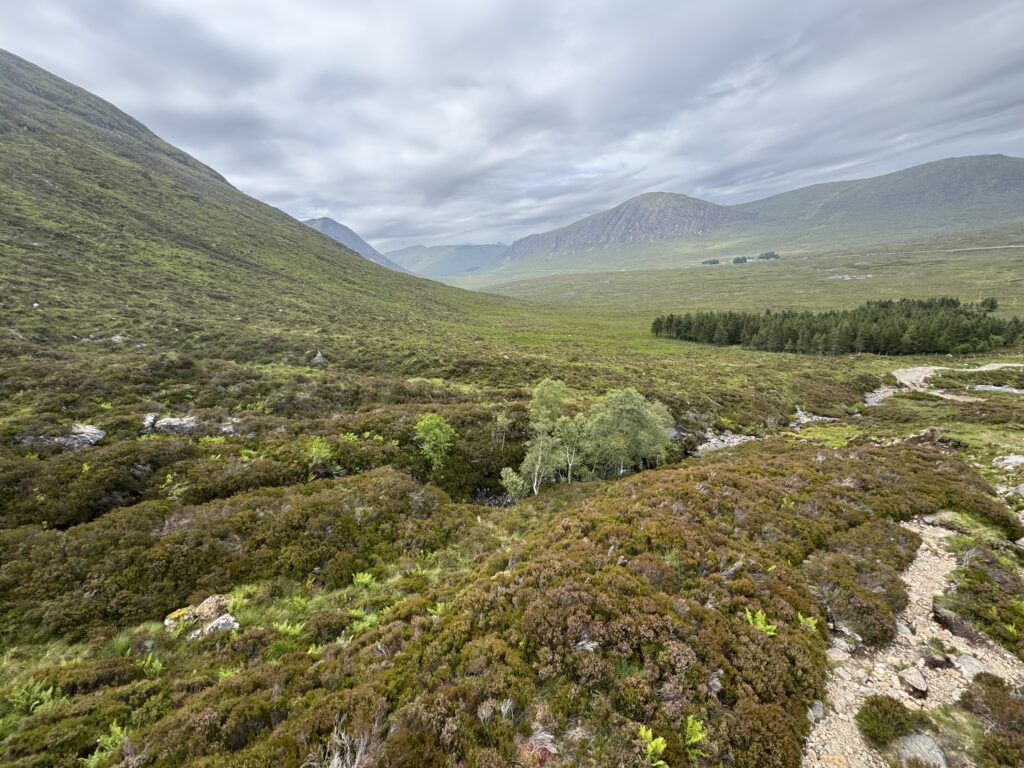
On our drive through Glencoe Valley, there was not much beyond the striking mountains and grass that surrounds the highway. But, after passing a few signs without paying much attention to them, we began to notice several signs for a ski resort that was coming up. We decided to check it out. Glencoe Mountain Resort has a lodge with food and seating, lodging in the form of tiny cabins, and ski lifts that run year round. I don’t remember how much it cost, but we bought four tickets to ride the ski lift up the mountain. We were told there was a cafe higher up, so we hiked up to the building only to find that it had just closed. So, we walked around taking in the view before riding the lift back down the hill. It was worth the stop for me, and it was a fun way to break up the road trip.
Hagrid's Hut
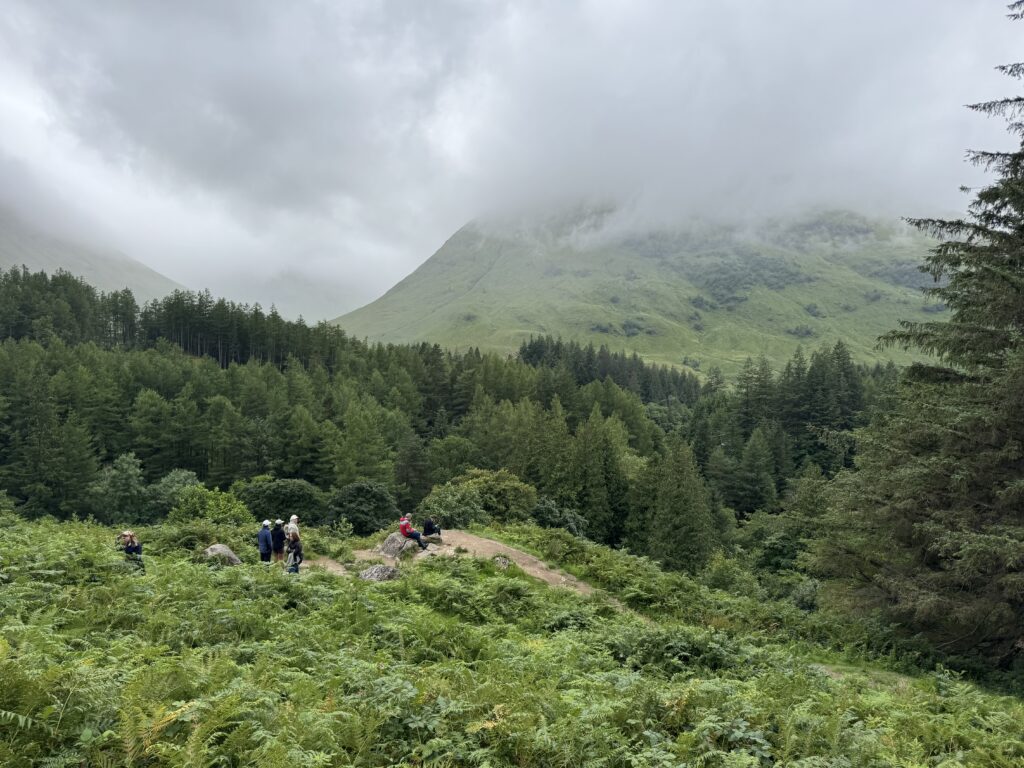
There aren’t many restaurants along the way, but the pub we stopped at, Clachaig Inn, offered decent food, and I enjoyed the Scottish music that was playing. The Inn is located just up the road from Hagrid’s Hut, so we walked from the pub straight there. Hagrid’s Hut is the film location you may remember from the movies, think Prisoner of Azkaban and Buckbeak sitting in the middle of the pumpkins by the hut. It was pretty cool to see the film location, but it’s a bit anticlimactic if you ask me.
Steall Waterfall
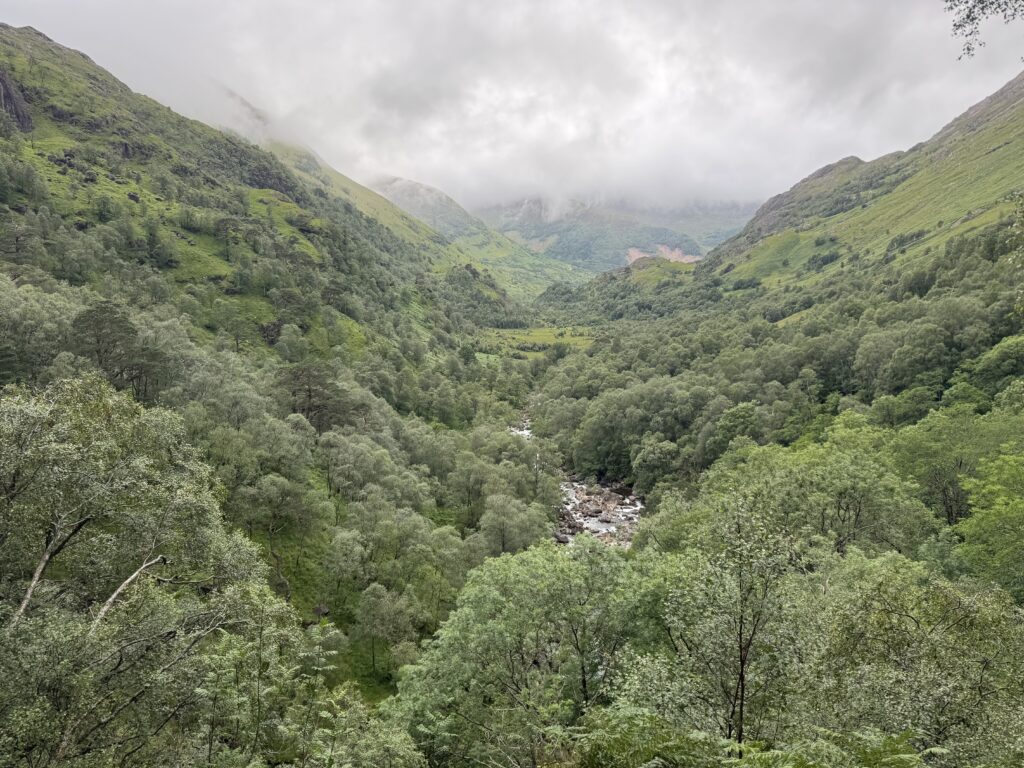
Tucked in Glen Nevis near Fort William, Steall Waterfall is Scotland’s second-highest waterfall at 120 meters. The hike to get there is relatively short and mellow, but there are a couple of slippery spots. Alltrails says it is 2.3 miles long with 508ft of elevation gain. The hike itself is scenic, but Steal Waterfall is the star of the show. The waterfall runs over the rock in an unbroken stream, which then runs into the nearby river. A meadow frames the cascade, which gives the place a magical feeling (it actually appeared in Harry Potter).
You can see the waterfall just fine from the end of the trail. But if you want to get closer, you need to cross the river. To cross the river, you’ll need to walk across a metal braided cable. You will walk along the cable while holding onto two other cables placed at shoulder level on either side of the lower walking cable. I thought it was pretty fun to cross, and I think that kind of bridge should be more common.
On our hike back from the waterfall, we saw a group of kids sitting around one of their friends who had apparently slipped and fallen. He was banged up and bleeding from a few spots, and it looked like he had broken his arm. It was getting dark, and they were next to water, so they were getting absolutely swarmed by midges. When we got to the parking lot, the ambulance was there, but the paramedics were sitting in the car and didn’t seem to be in any rush. I’m assuming it was a pretty bad day for that kid. All that to say, just be careful on those few slippery rock sections.
Day 4 - Skye
- Eilean Donan Castle
- Old Man of Storr
- Kilt Rock

I apologize for whatever expression that is on my face. In my defense, I am extremely unphotogenic, and it was bright.
Eilean Donan Castle

Eilean Donan Castle was my favorite castle we saw in Scotland. It’s built on a tidal island where three lochs meet. It was originally built in the 13th century to defend against Viking raids. It later became a stronghold for Clan Mackenzie; it was blown up in 1719, then restored in the early 1900s. We went on a tour through the interior of the castle, which was cool, but the best part was probably the view from the parking lot and the bridge.
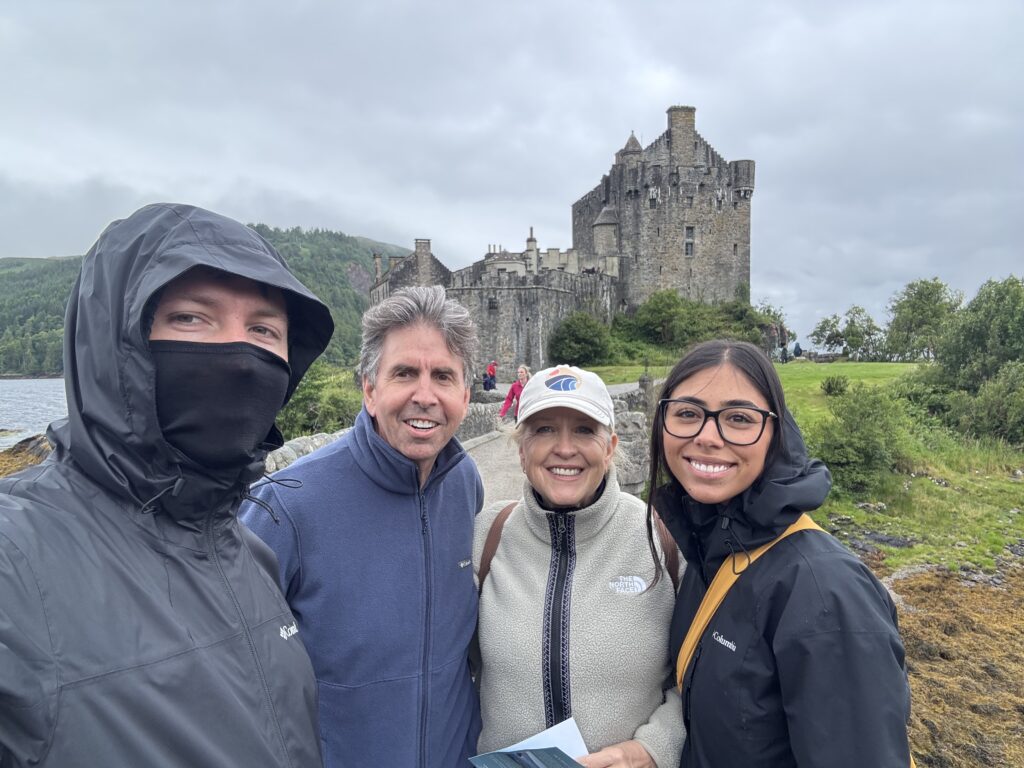
Not far from Eilean Donan is the bridge that takes you to the Isle of Skye. Our hotel was close to the bridge, but it wasn’t time to check in, so we carried on driving north.
Old Man of Storr
The Old Man of Storr is probably the most famous spot on Skye. It’s a 55-meter-tall basalt column that protrudes from the craggy spine of the hill. The hike up is moderately difficult as it is uphill most of the way. It was made more difficult by high winds and heavy mist when we hiked. We were well aware that Skye was likely to be misty while we were there, so we were not surprised or disappointed. The basalt towers were harder to see, but there was also a magical quality about the scene, like something out of a storybook.
The legend says the Old Man was once a giant who was buried under the earth and all you can see of him now is his thumb jutting out of the ground.
The hike begins at a small parking area off the A855, where a wide gravel path cuts through the hillside. You’ll be zigzagging up grassy slopes until you reach a fork. The left path is the gentler, more scenic choice, the right is faster. We went up to the right and chose the other path on the way down.
Kilt Rock
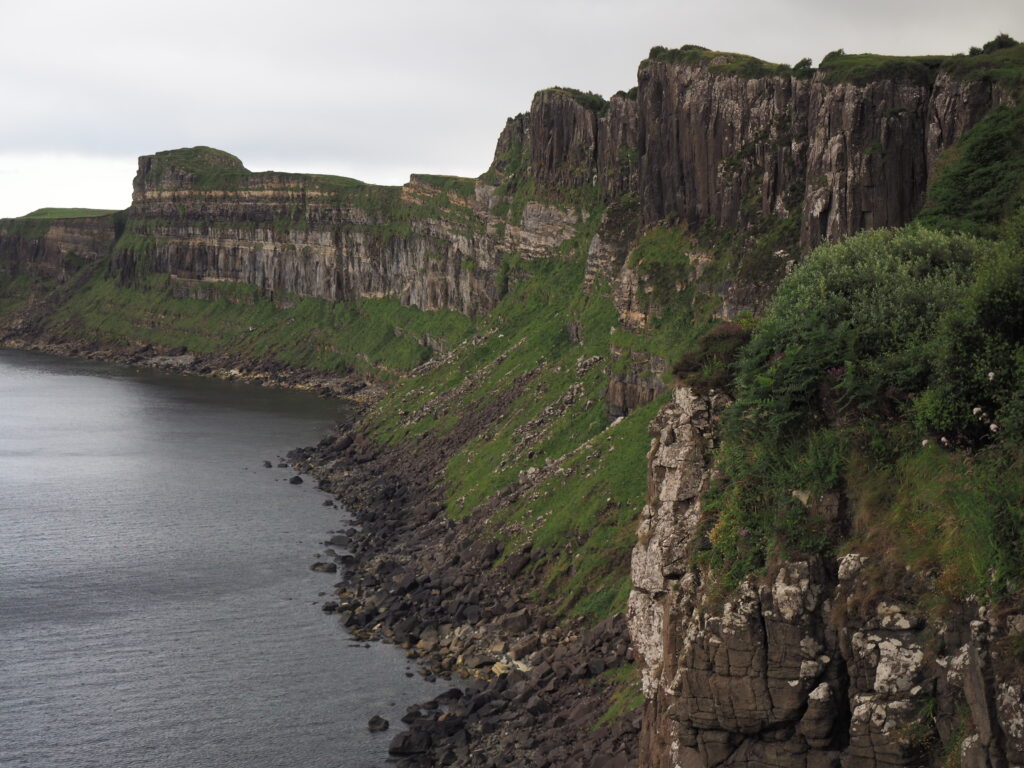
Kilt Rock is a dramatic sea cliff named for its resemblance to Scotland’s famous tartan garment. At the time, I thought the stop was a bit boring, but now looking back through the photos, it is one of the most impressive sights of the trip. Adding to the spectacle, the Mealt Falls cascade directly over the cliff edge, plunging into the waters below. There is a parking lot right next to the cliff, making Kilt Rock likely the most accessible destination on Skye.
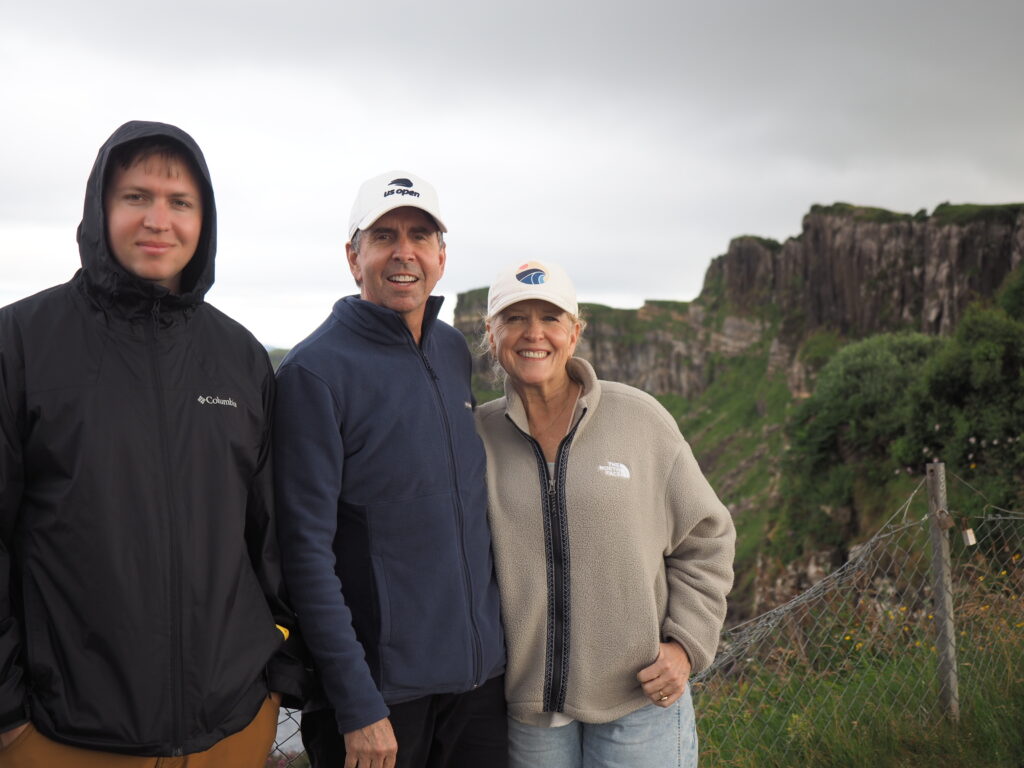
We drove back to the south of Skye and checked into our hotel. After checking in, we walked to dinner at a pizza place. It was all pretty good, although our pizza was very greasy. I tried a Scottish soda for the first time called Irn Bru, which reminded me a lot of Inca Kola from Peru. It had the same bubble-gummy sweetness.
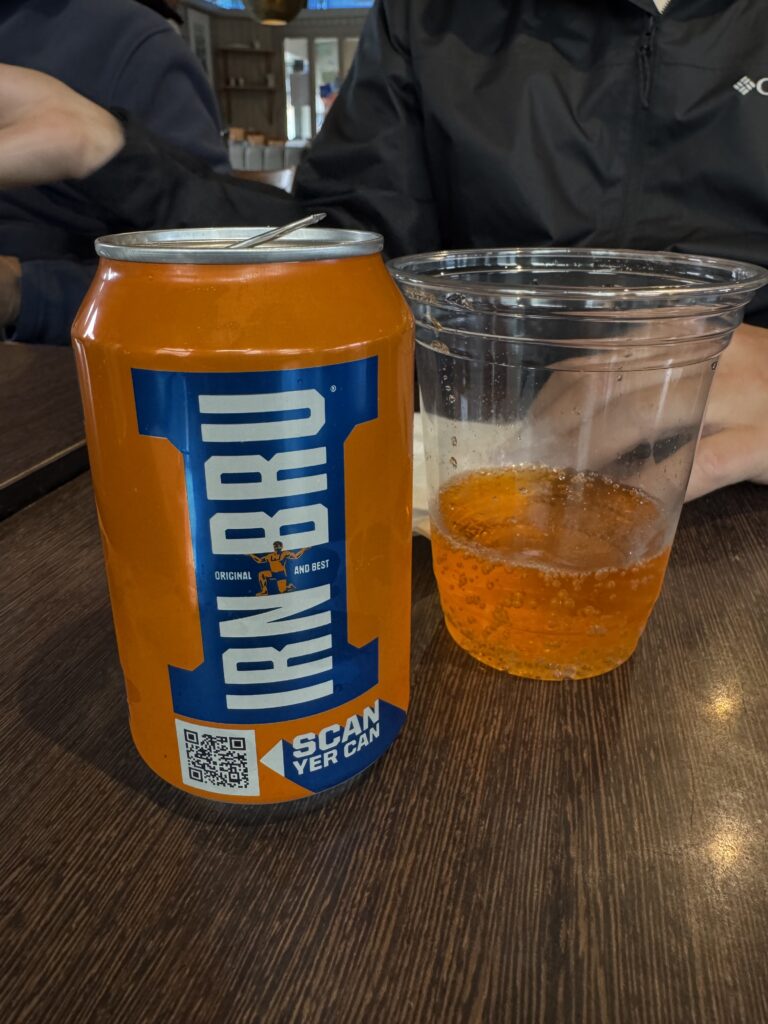
Day 5 - Nessie
- Loch Ness
- Inverness
Loch Ness
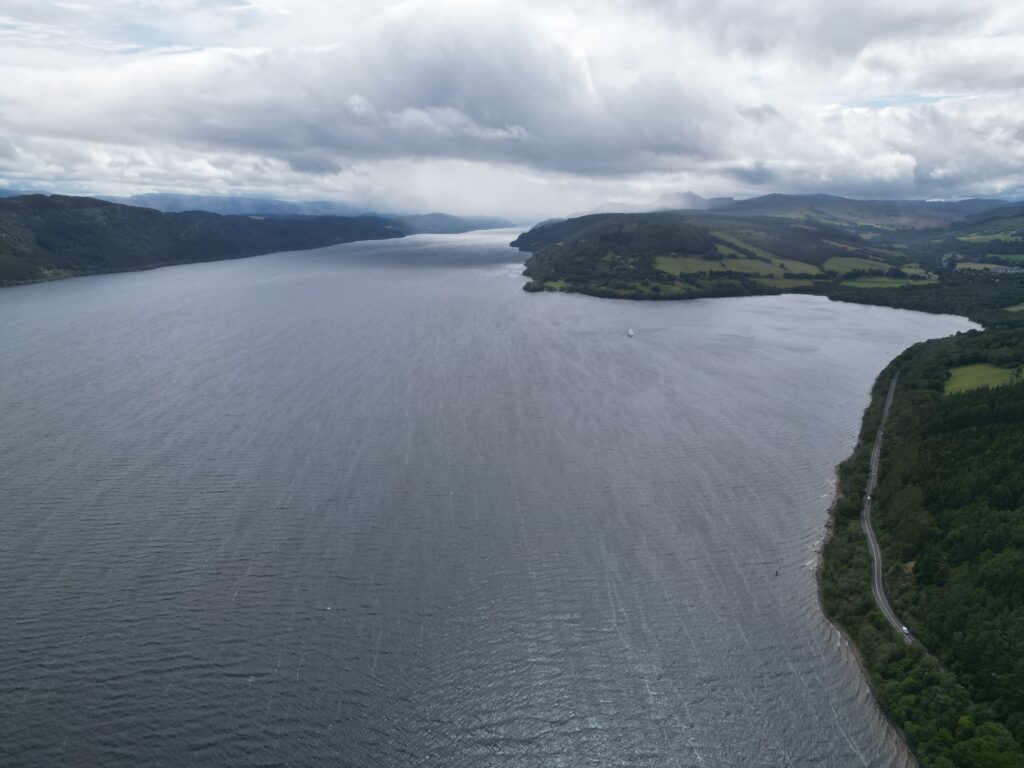
We decided Skye was too misty and windy to really appreciate some of the items on our itinerary, so we changed it up. We drove to Loch Ness the next morning. It was too windy to kayak on the lake, and boat rides were sold out at the time that we arrived. We wanted to visit a castle by the lakeside, but the car park was sold out and we couldn’t get in without a prior reservation. So, we didn’t end up doing much at Loch Ness. Instead, we went to the Loch Ness Centre to learn about the history of Nessie. It was pretty fun, kids will especially enjoy it, but it was pretty overpriced.
The sun came out for a second, and I launched my drone further down the road to check out this viaduct I had spotted driving.
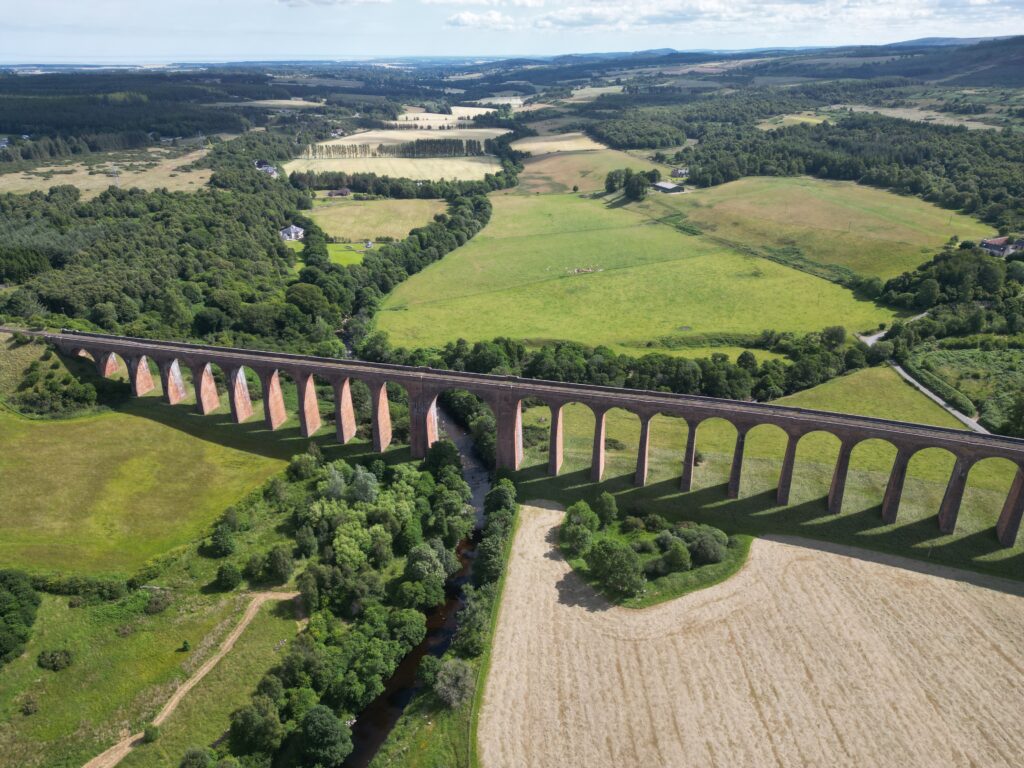
Inverness
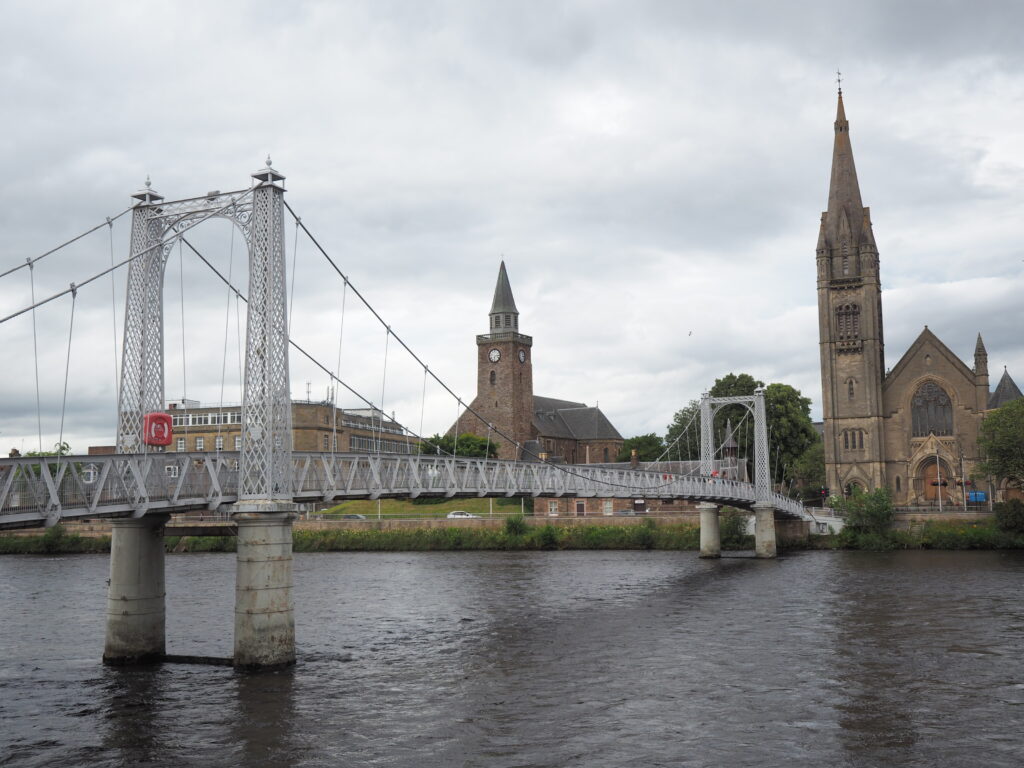
We drove to Inverness and walked around the town centre. We enjoyed our time there more than we expected. Among other things, we saw: Inverness Cathedral, dedicated to St Andrew, Leakey’s Bookshop, The Victorian Market (which was just closing), and a Catholic cathedral.
Inverness is the capital of the Scottish Highlands and is known as the gateway to Loch Ness. The city is relatively small, easy to explore on foot, and offers plenty of shops, pubs, and restaurants. It’s a convenient base for exploring the Highlands.
Day 6 - Southward
- Clava Cairns
- Pitlochry
- The Hermitage
- Bagpipe contest
The Hermitage
There are a lot of outdoor options around Pitlochry. The Hermitage is 20 minutes south and is a great option for a mellow hike. The forest that surrounds the trail was the most beautiful I saw in Scotland. We walked to a waterfall where a small structure was built at the edge of the small canyon looking down on the waterfall and the pool of water below.
We ended our time in Scotland by watching a bagpipe contest. It seems that each group in the competition uses a few songs, allowing the judges to compare them on the same routine. I was impressed with the performances.
Indi returned to the U.S., but I decided to spend a cheeky extra 10 days traveling before returning. Next stop: Prague.
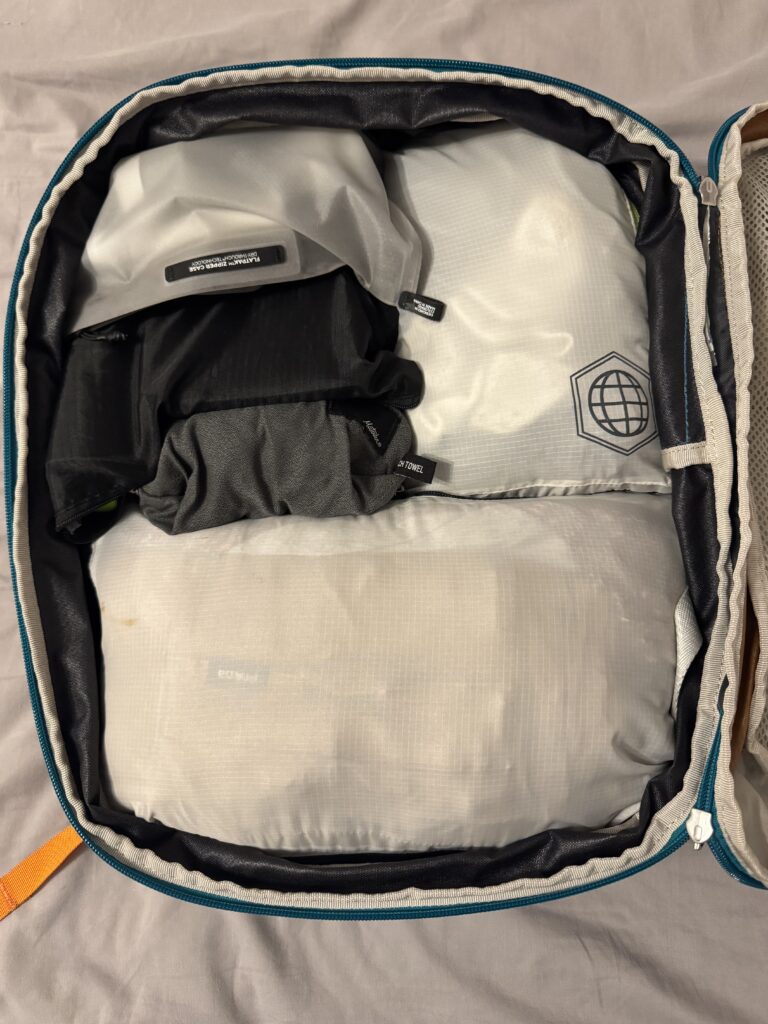
Next time
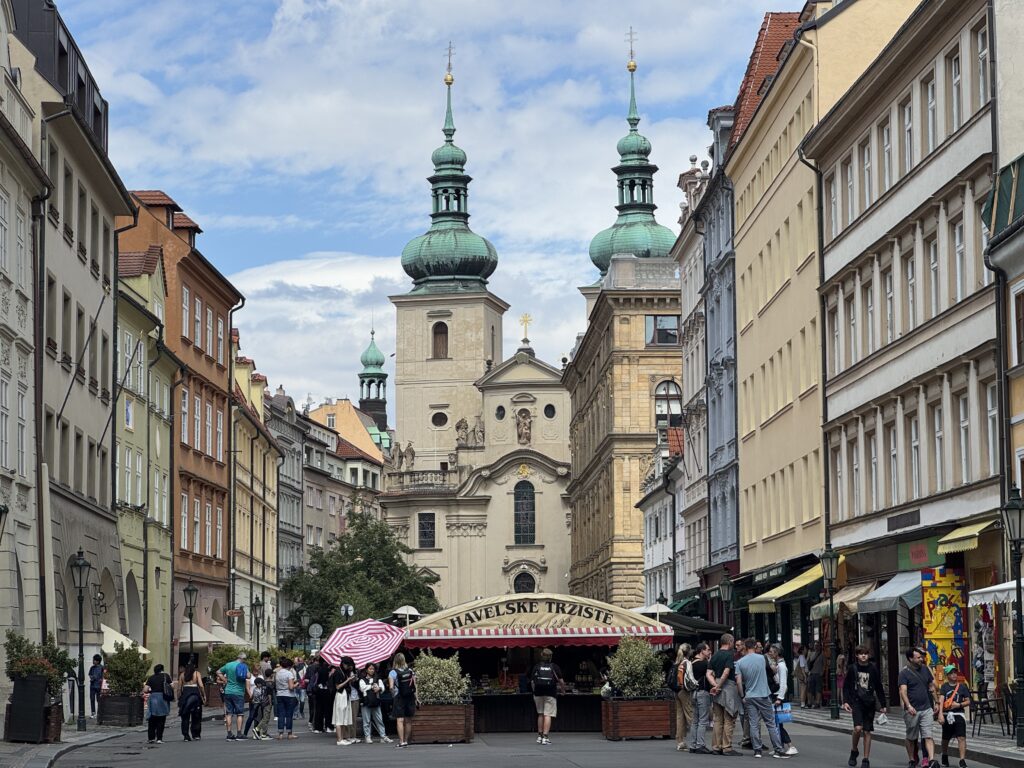
On my next adventure, I visit The City of a Hundred Spires – Prague.


